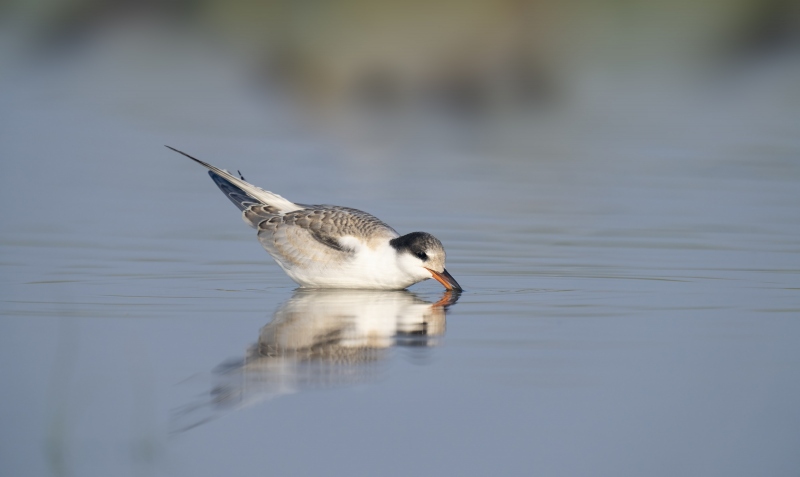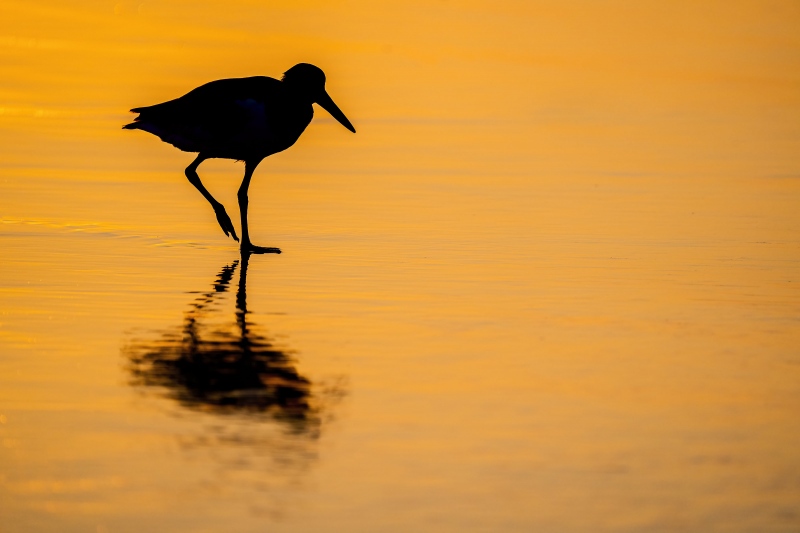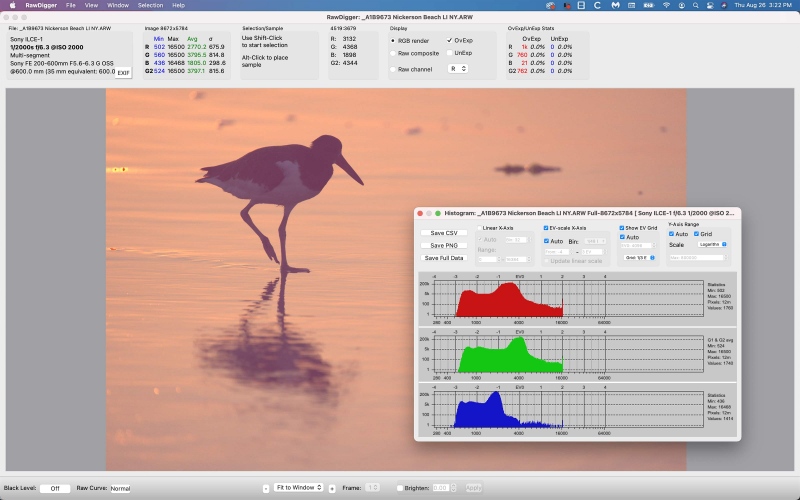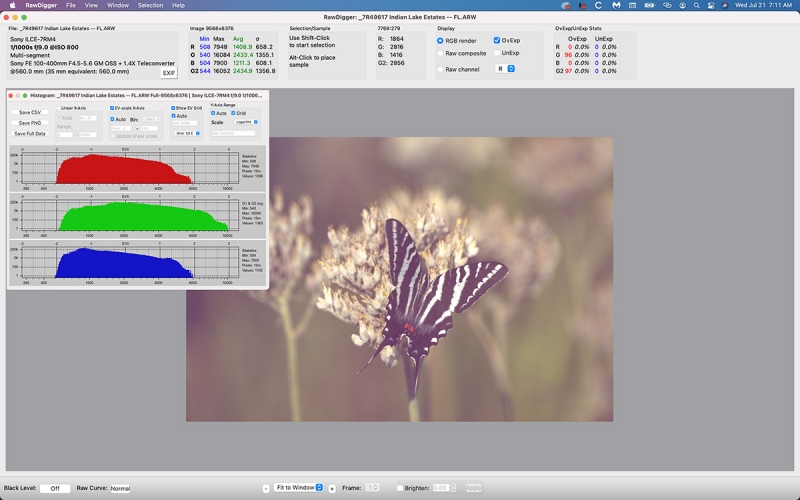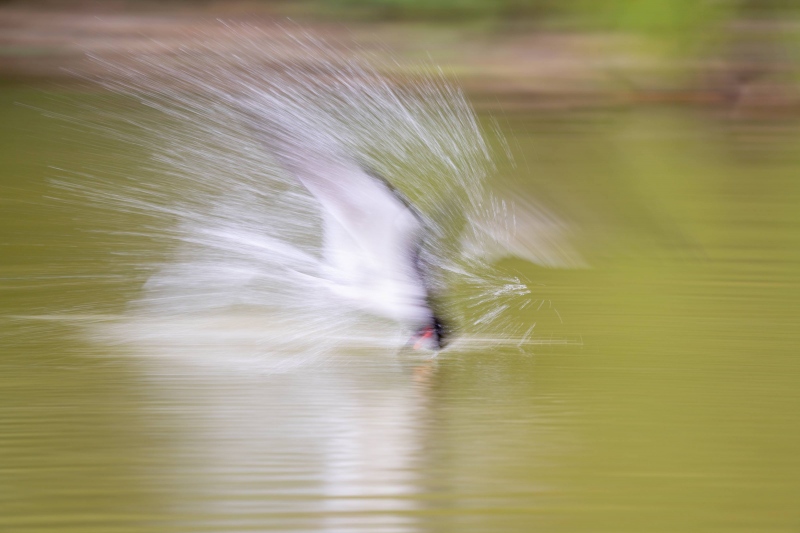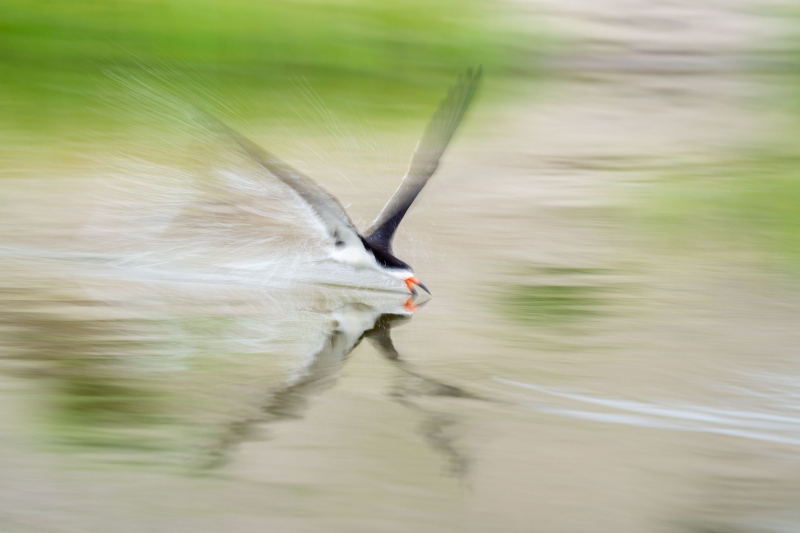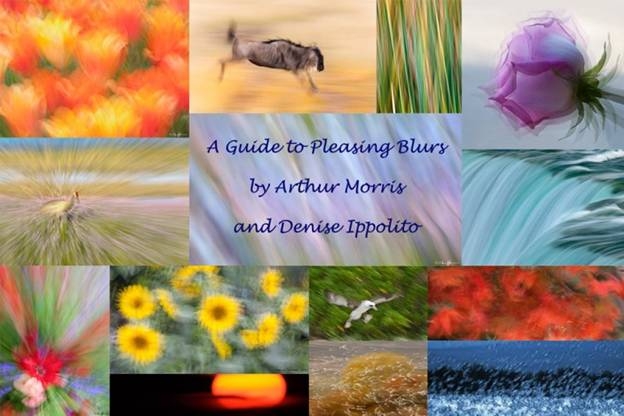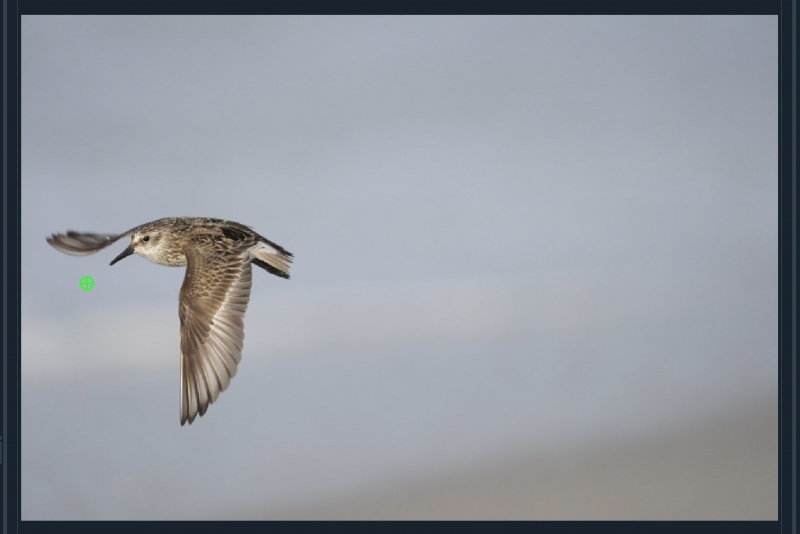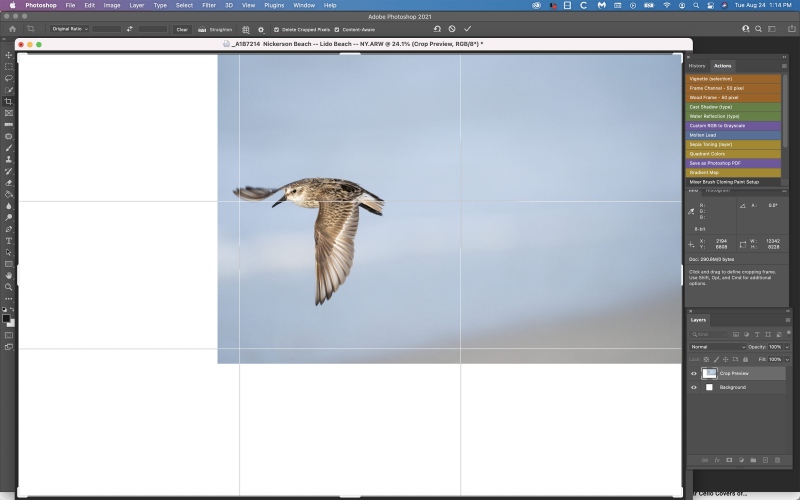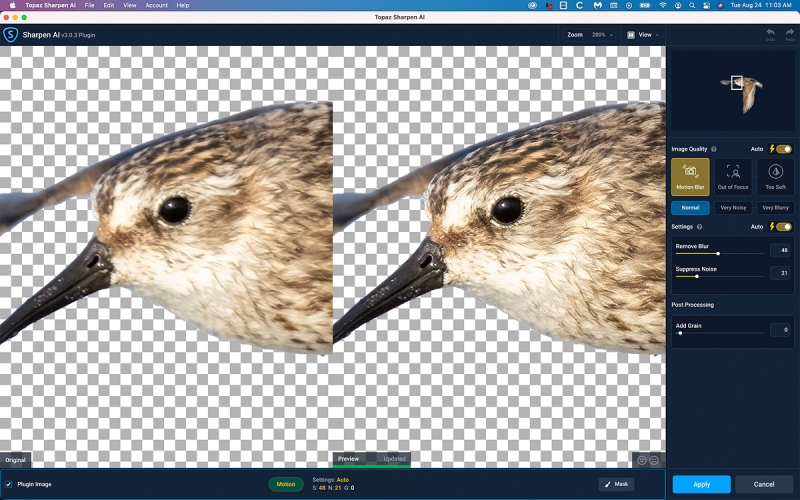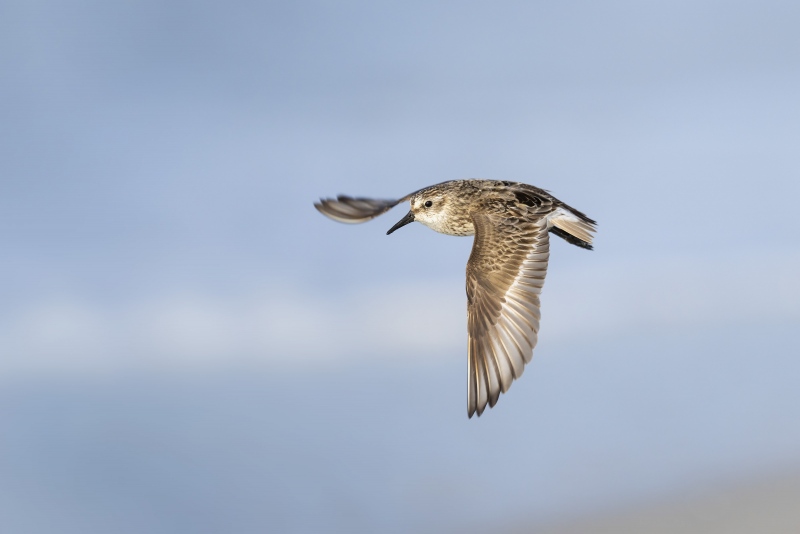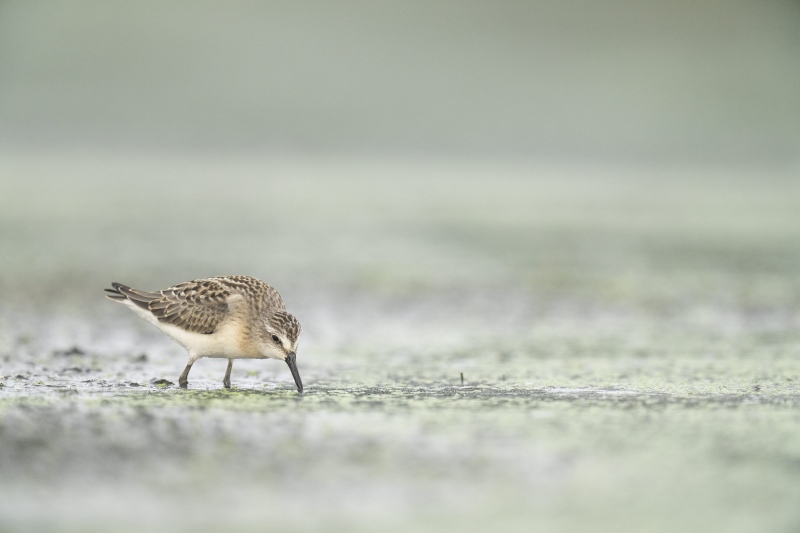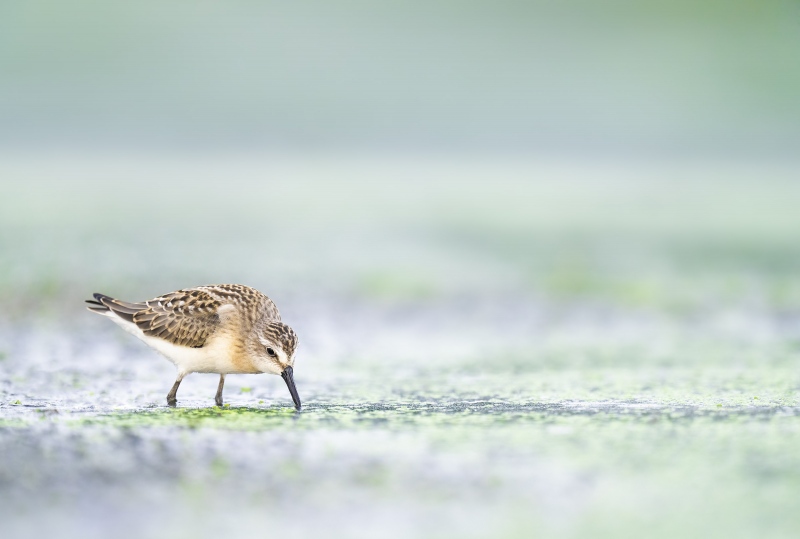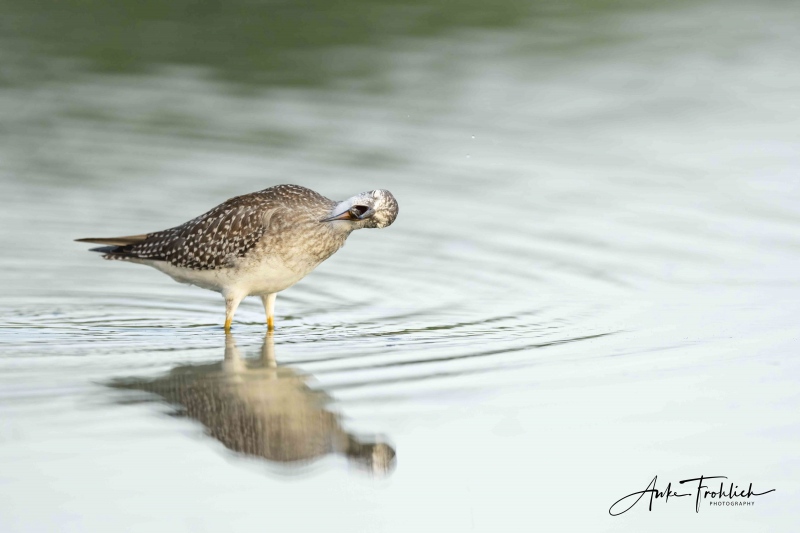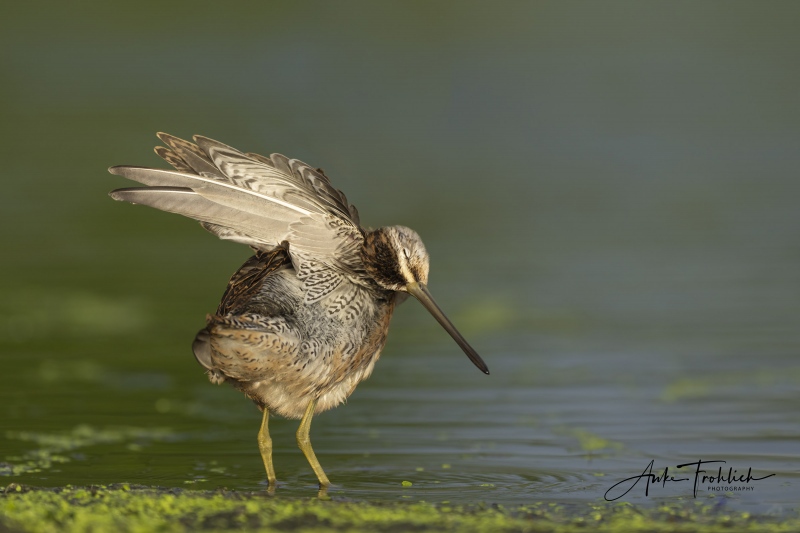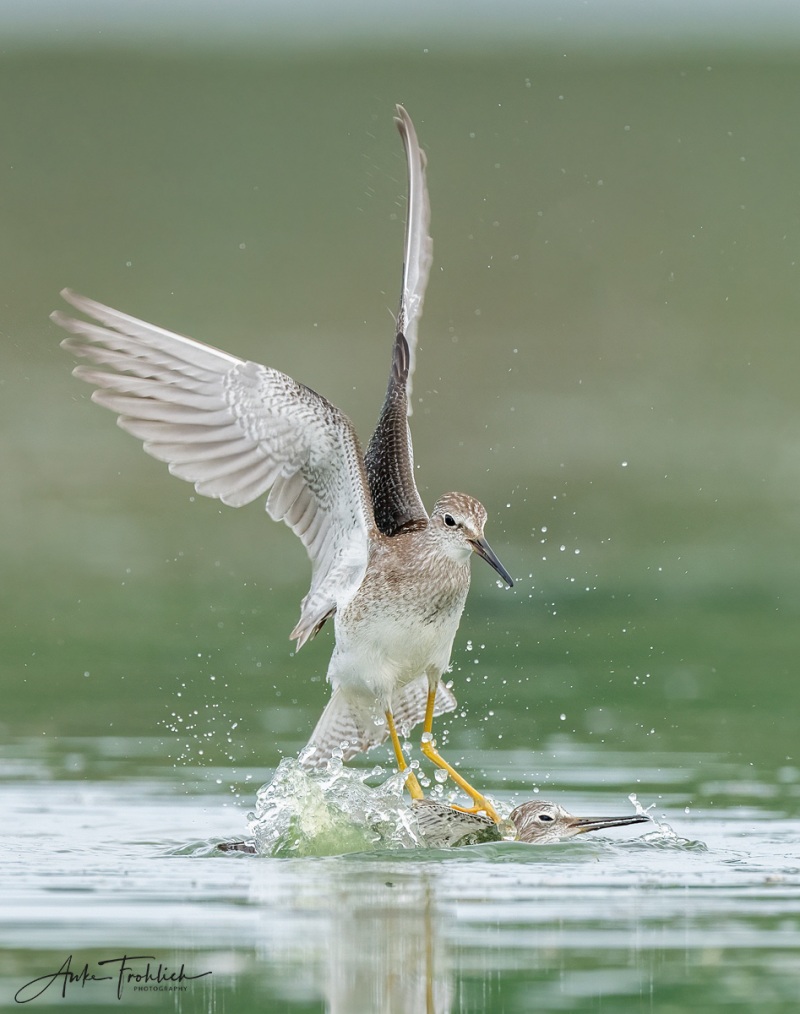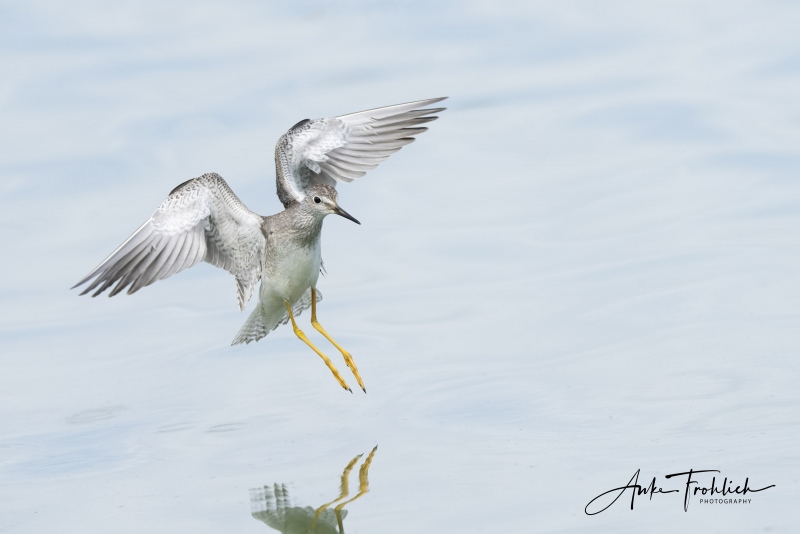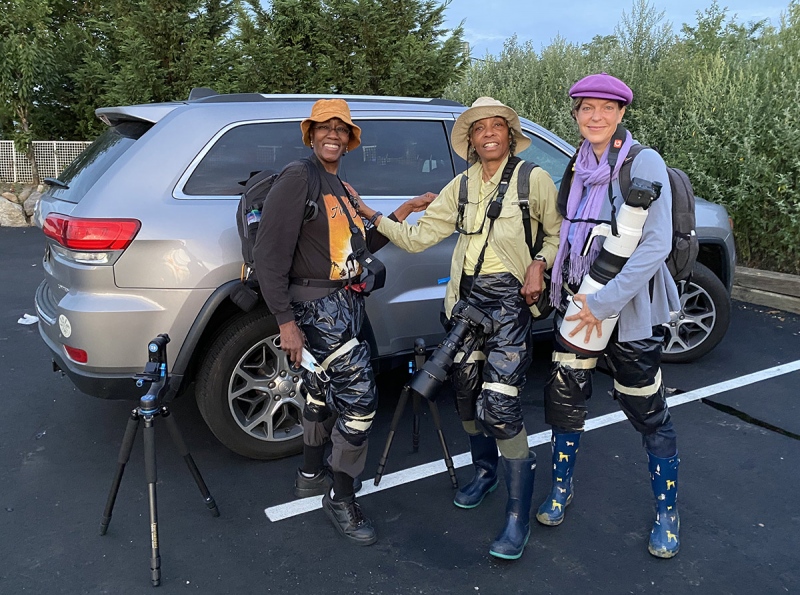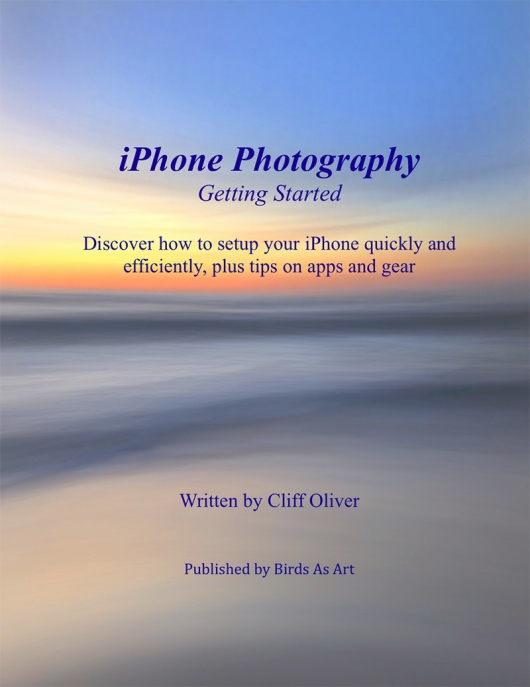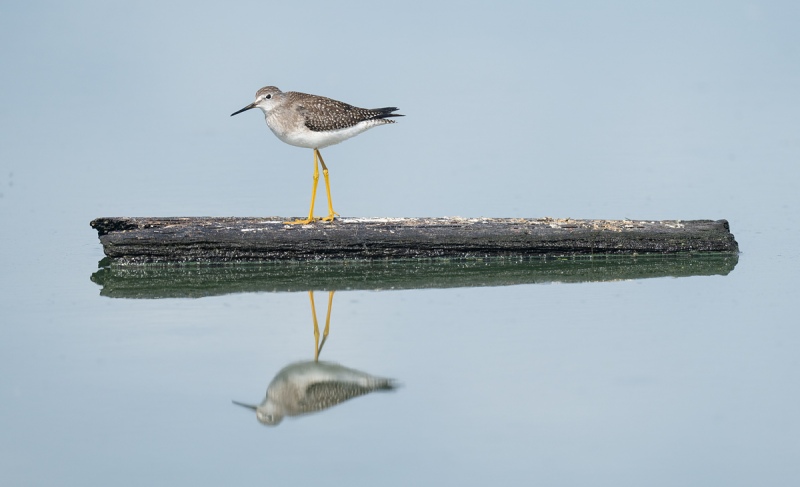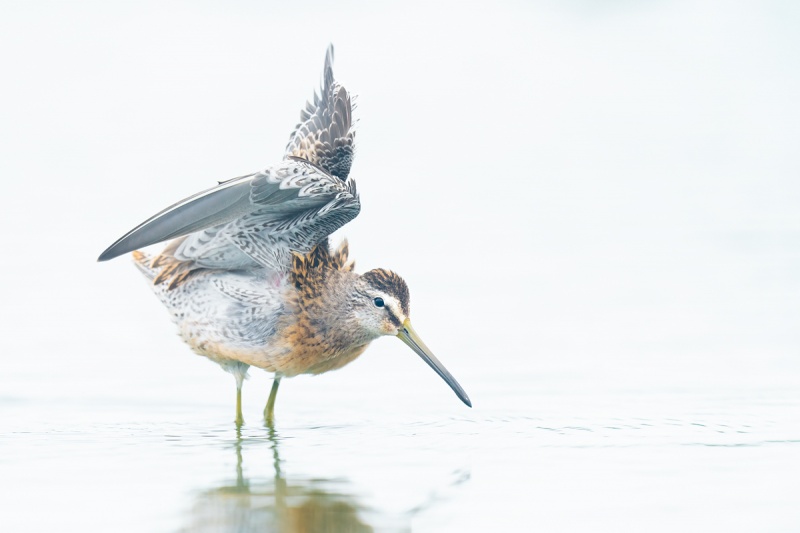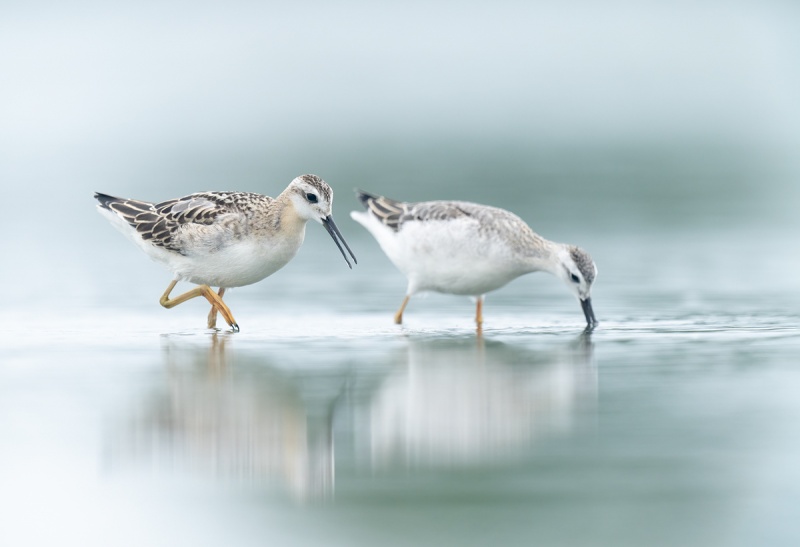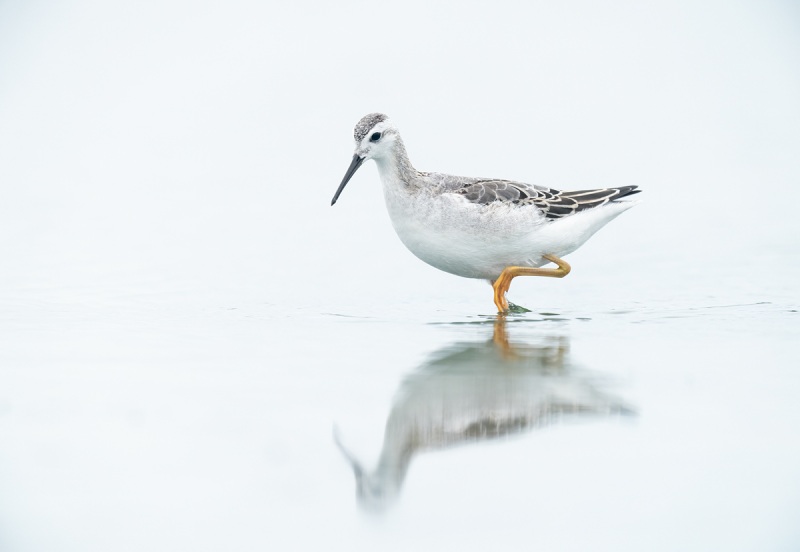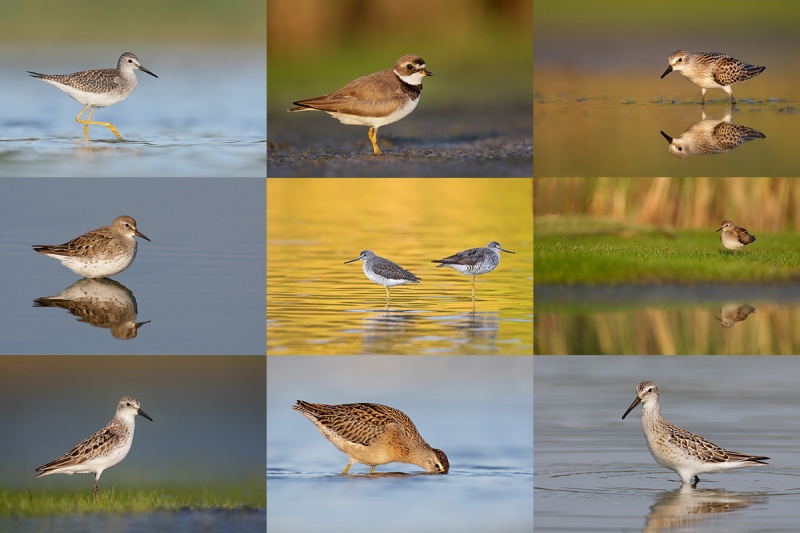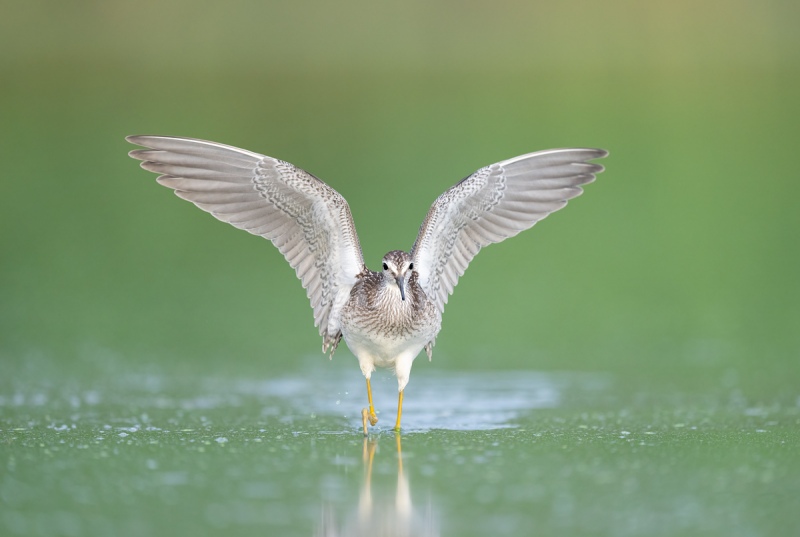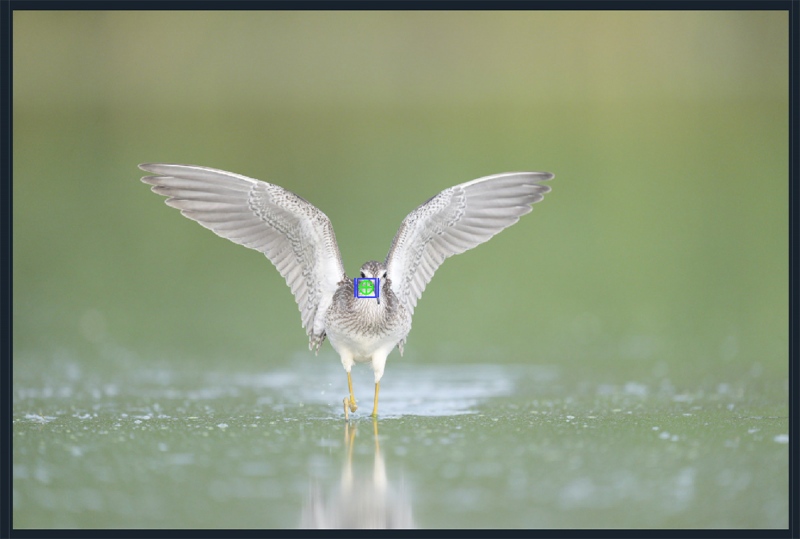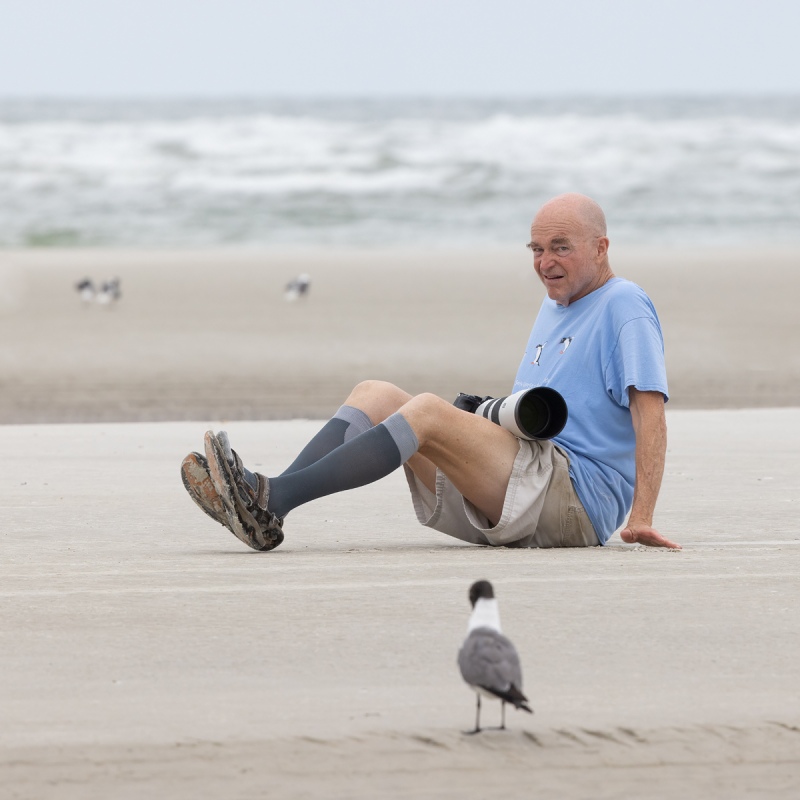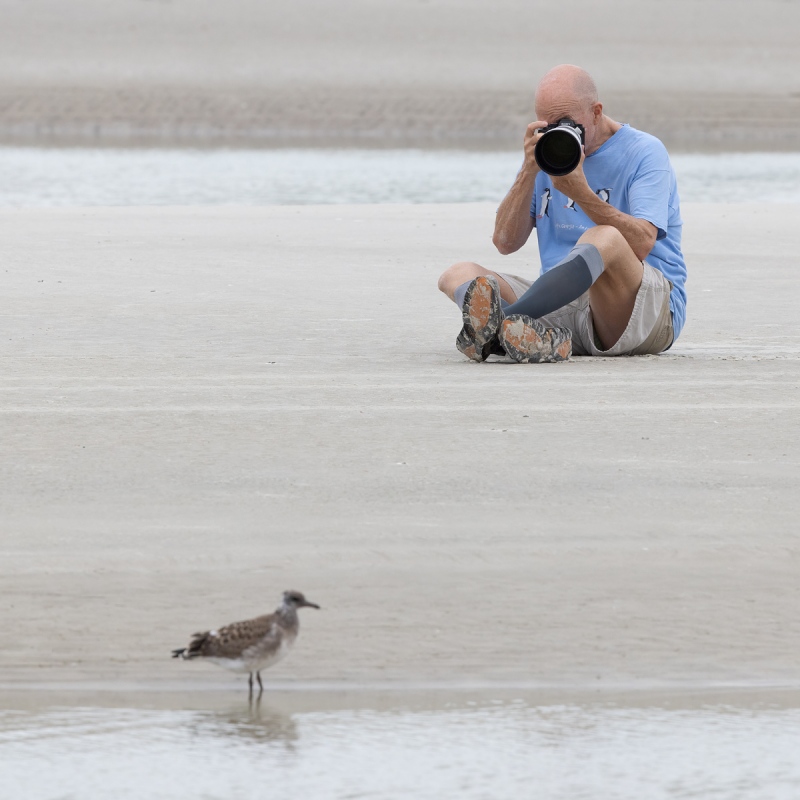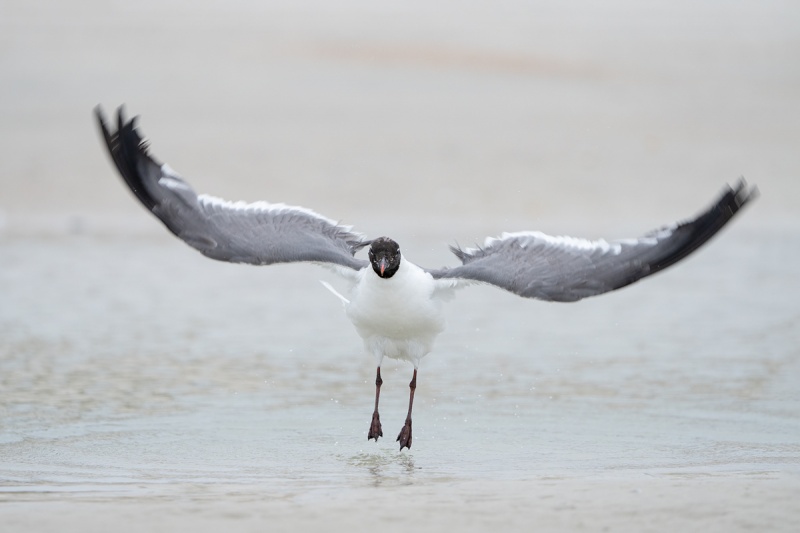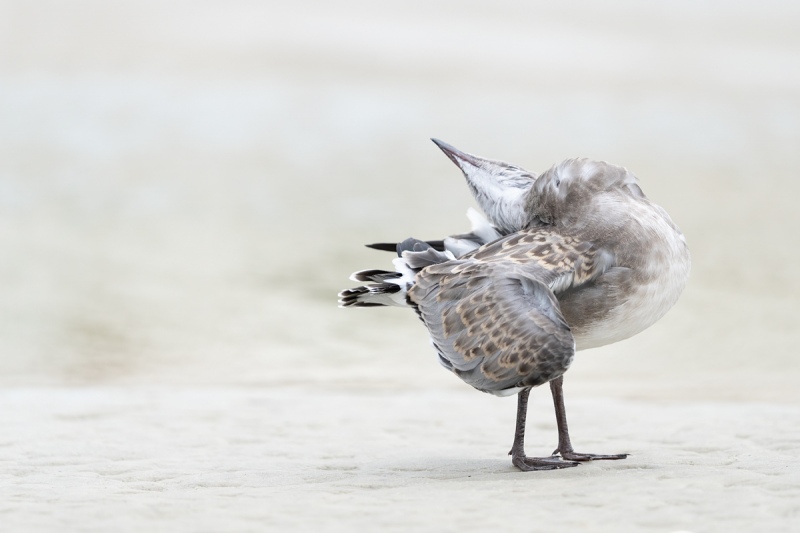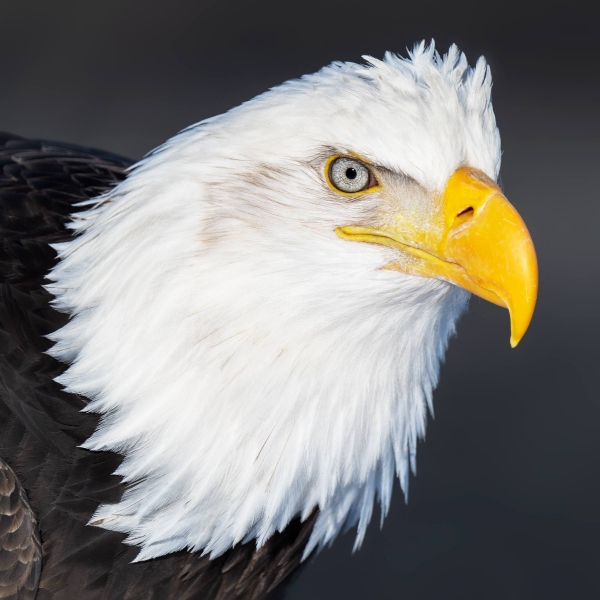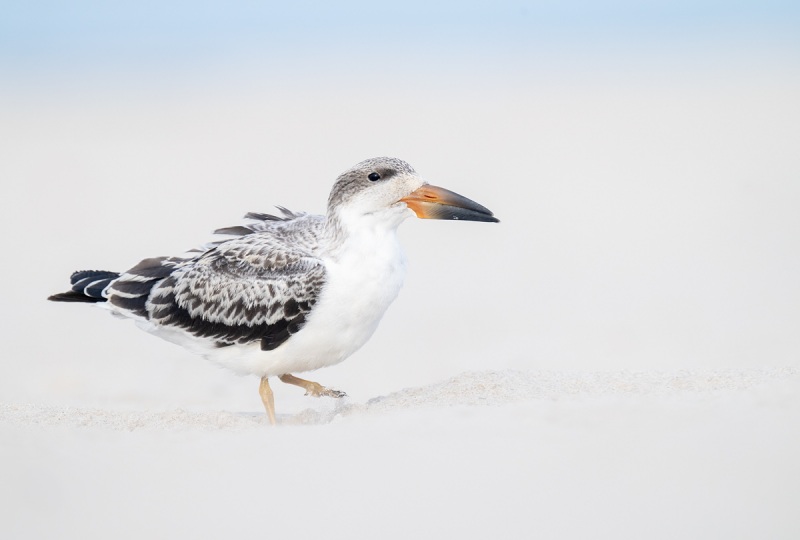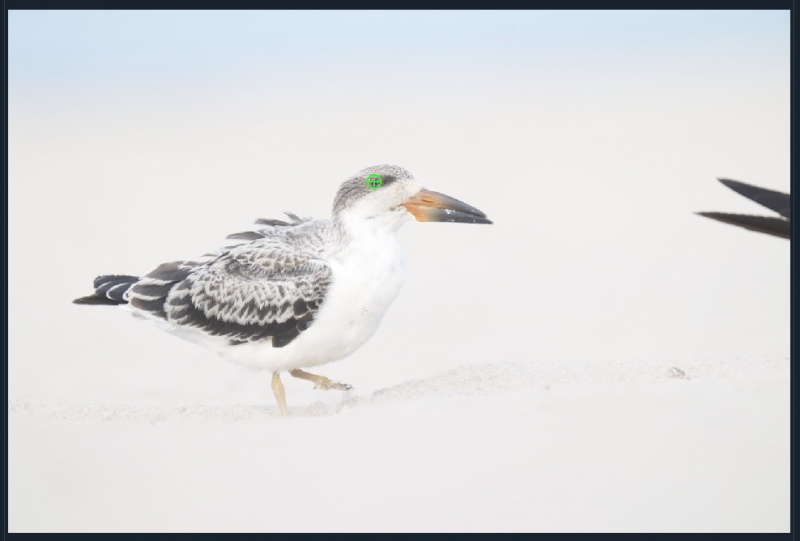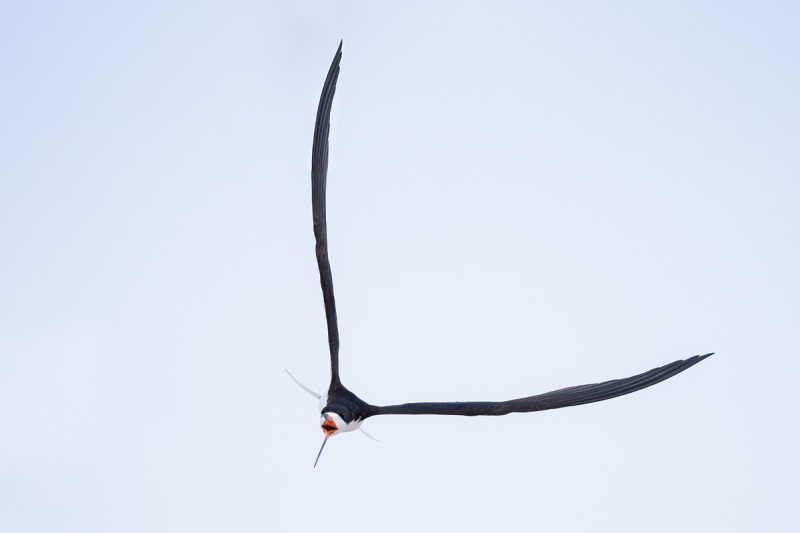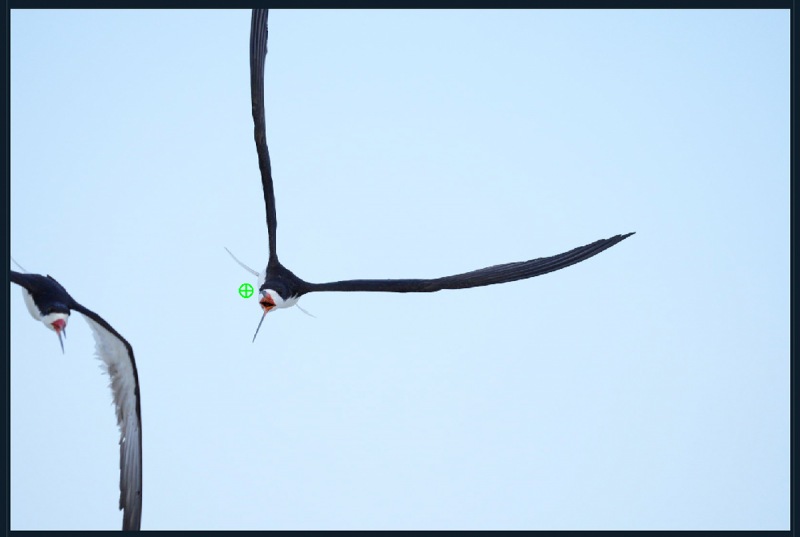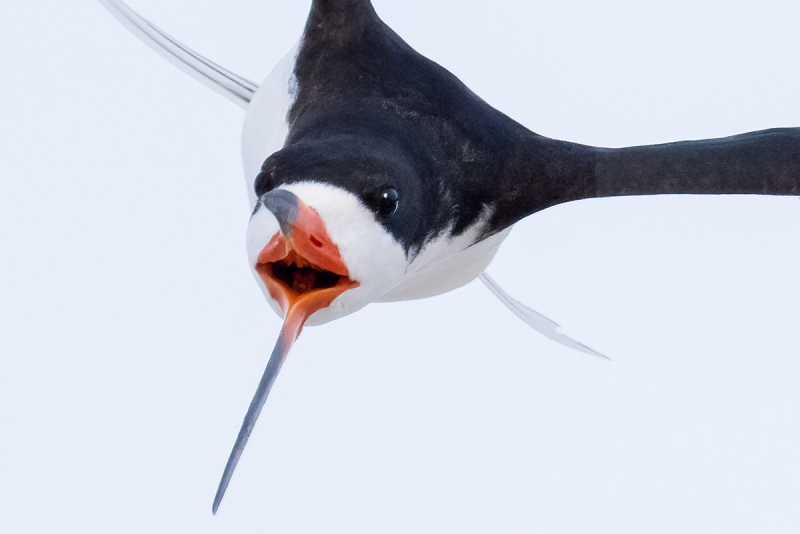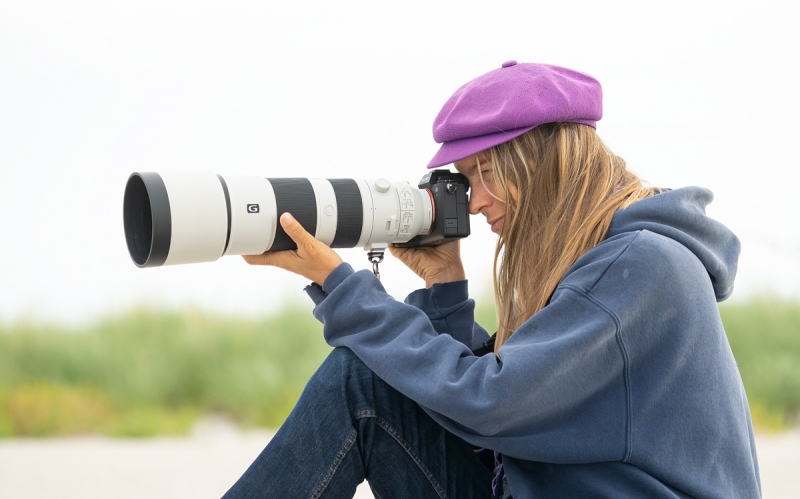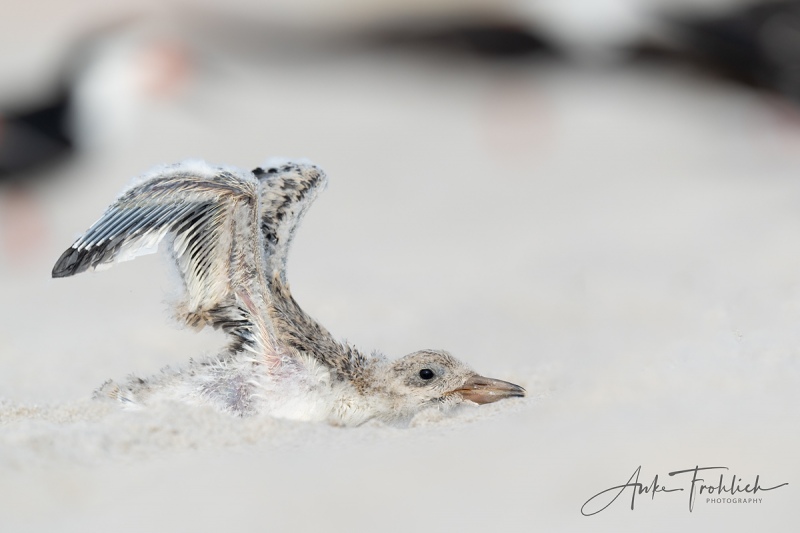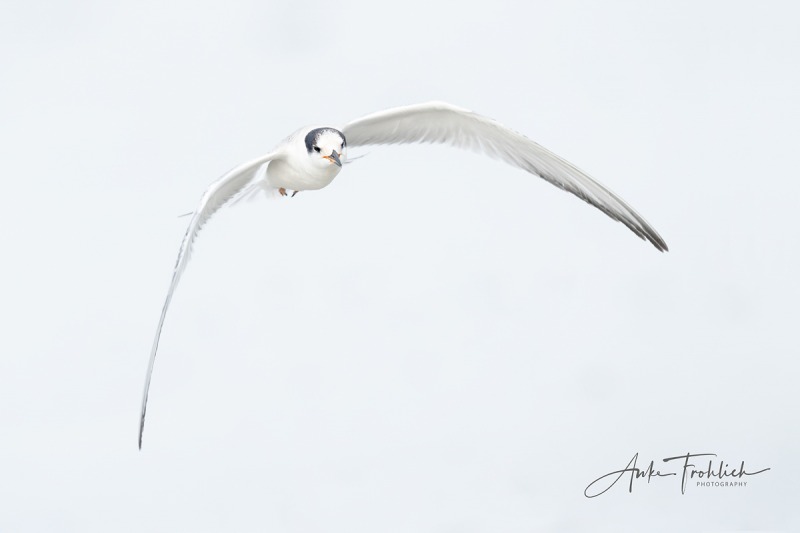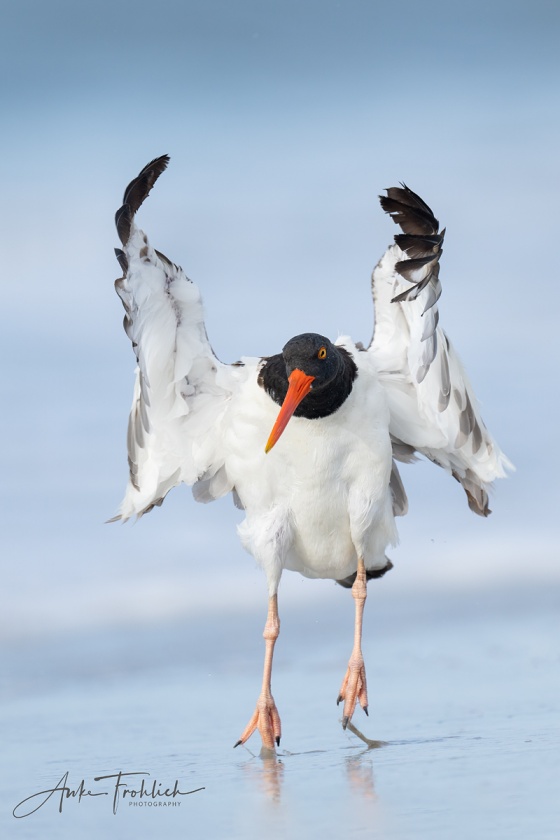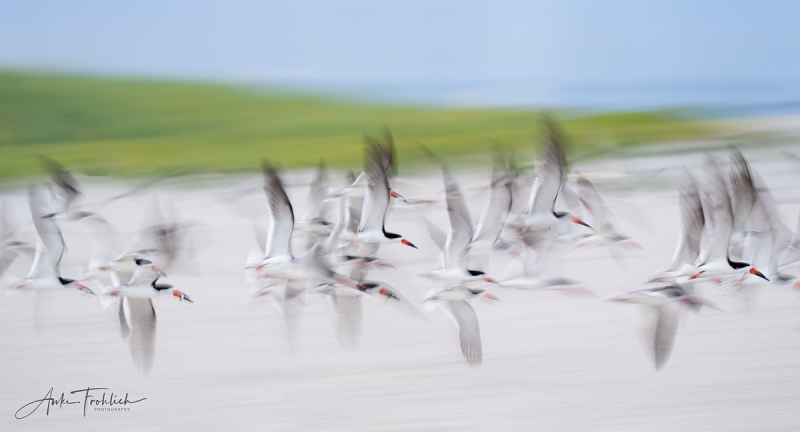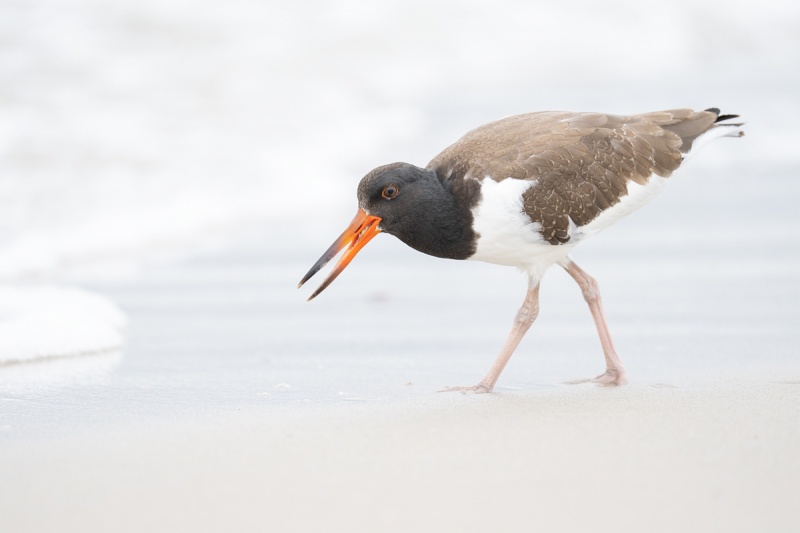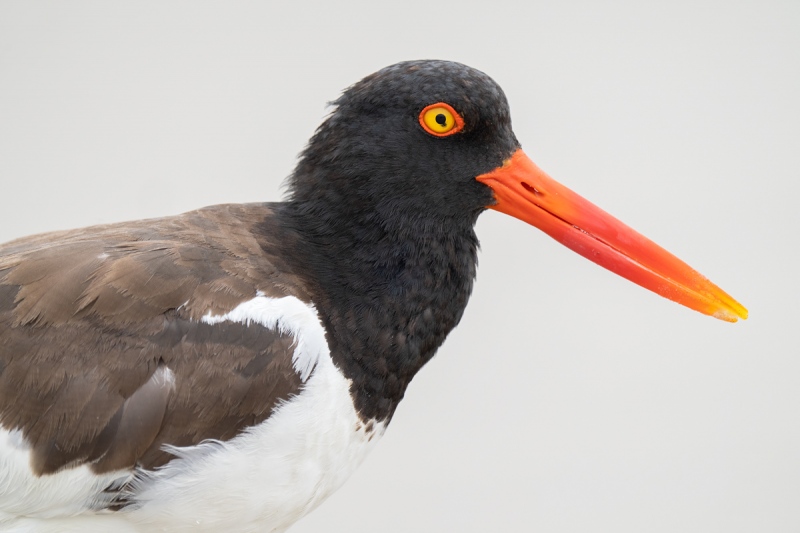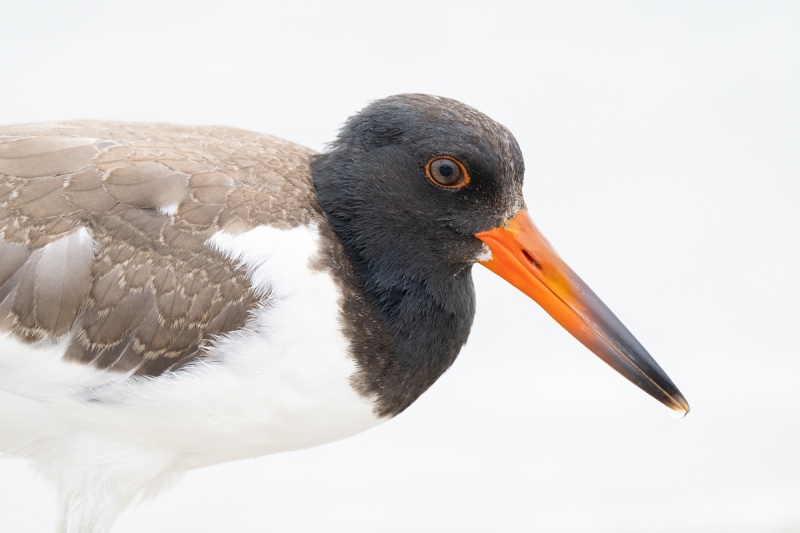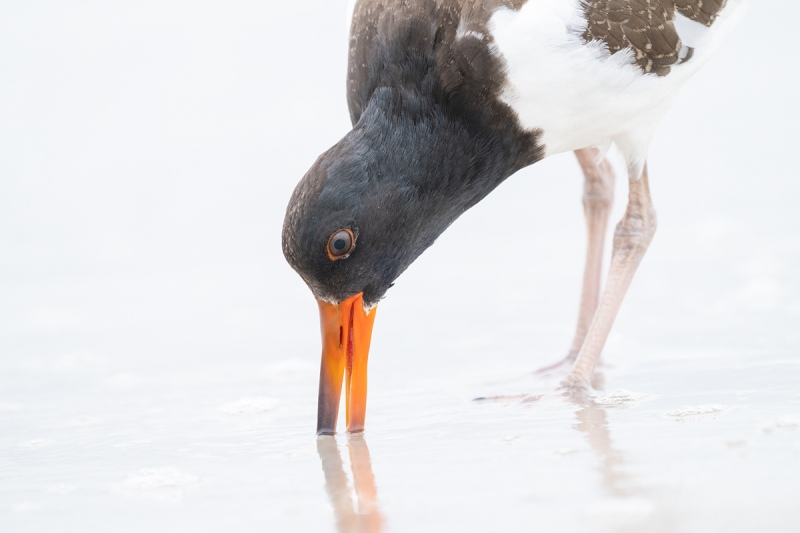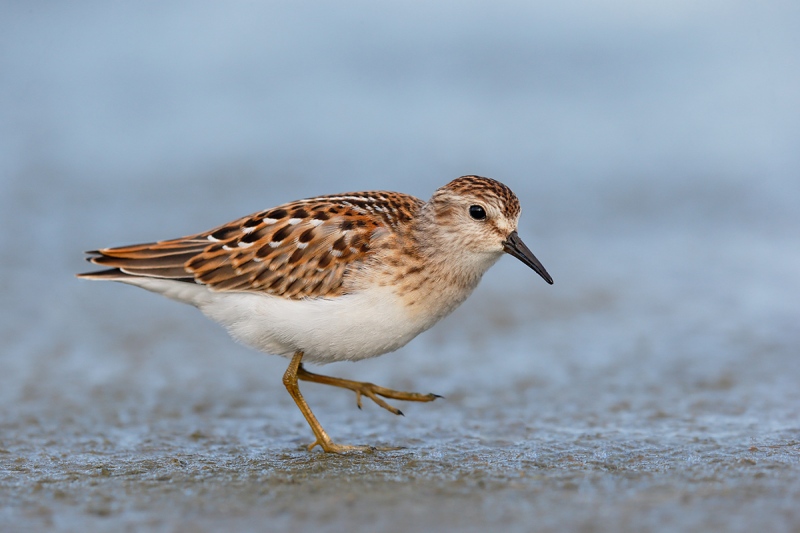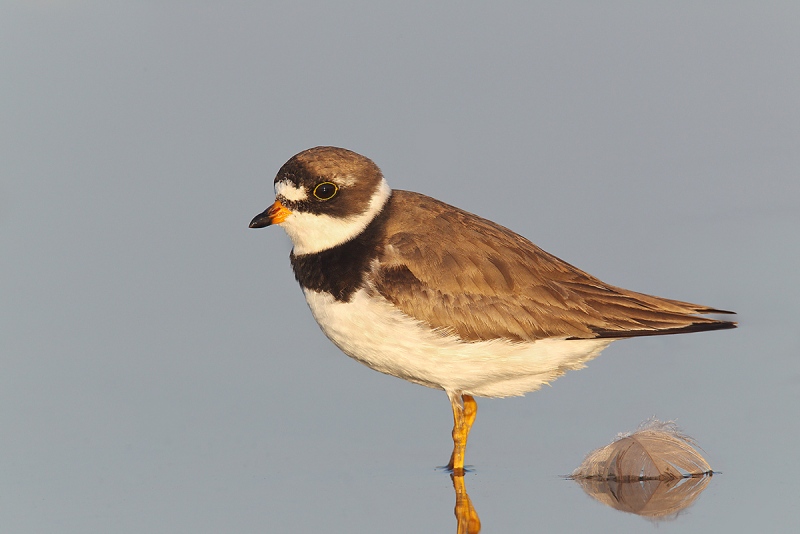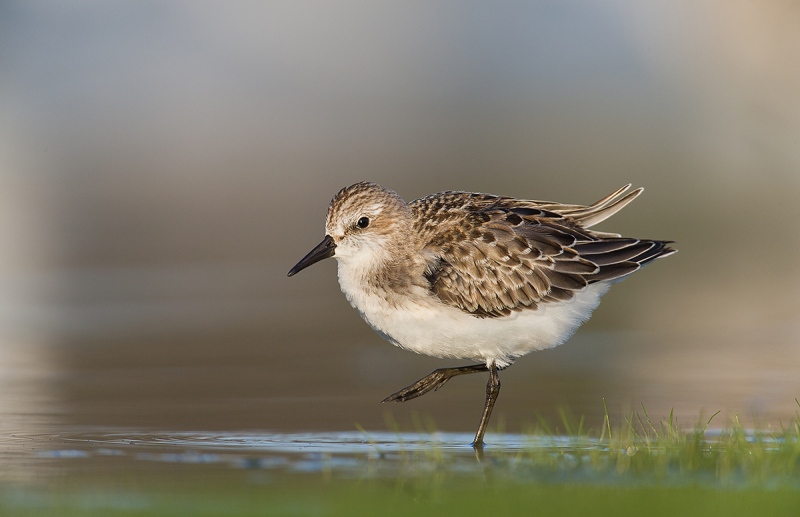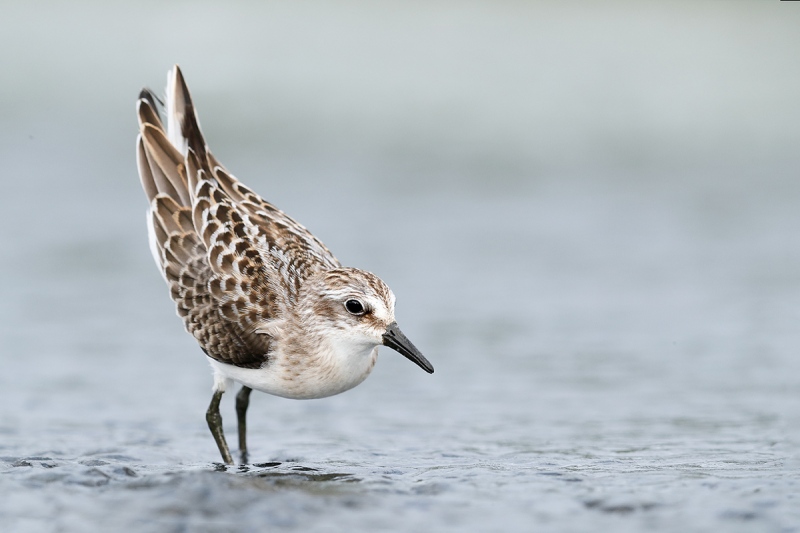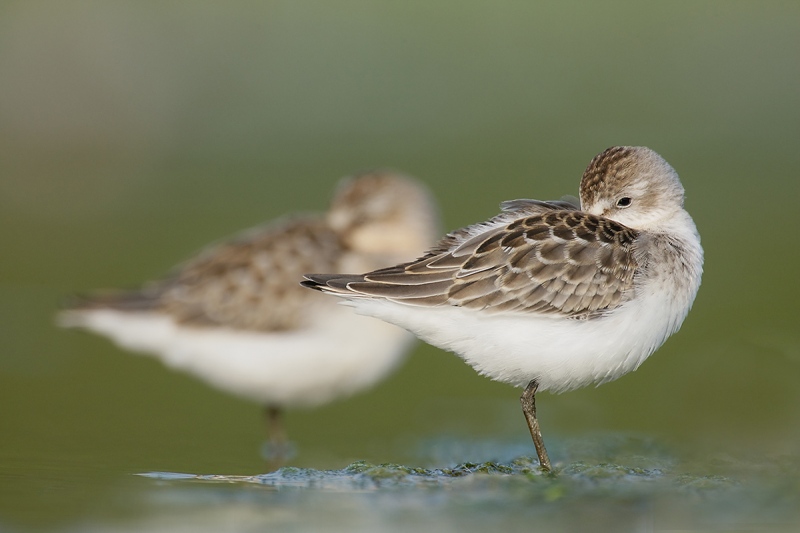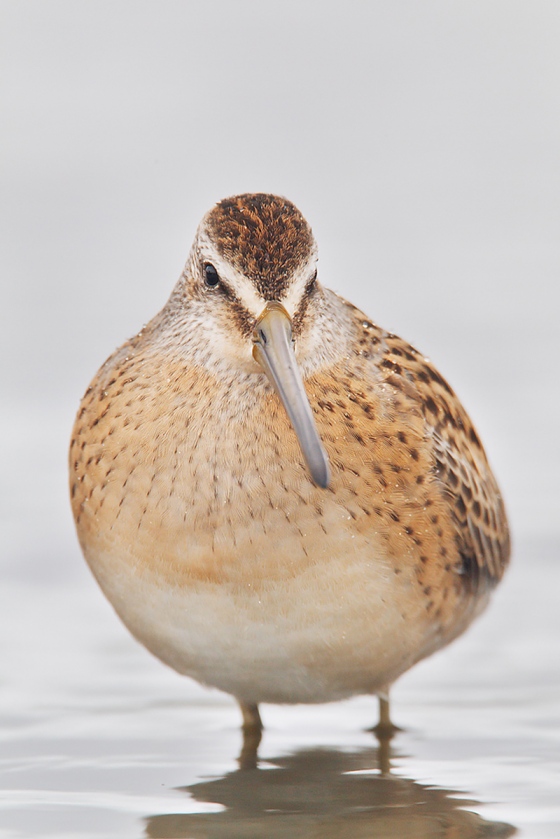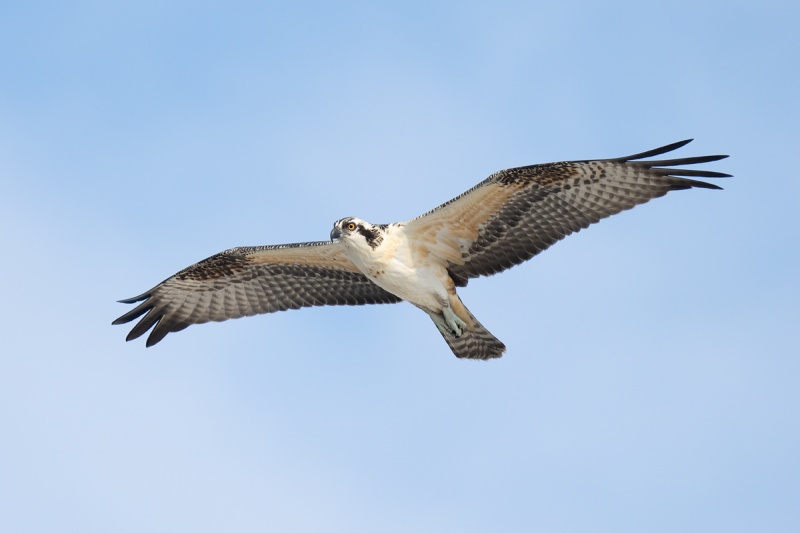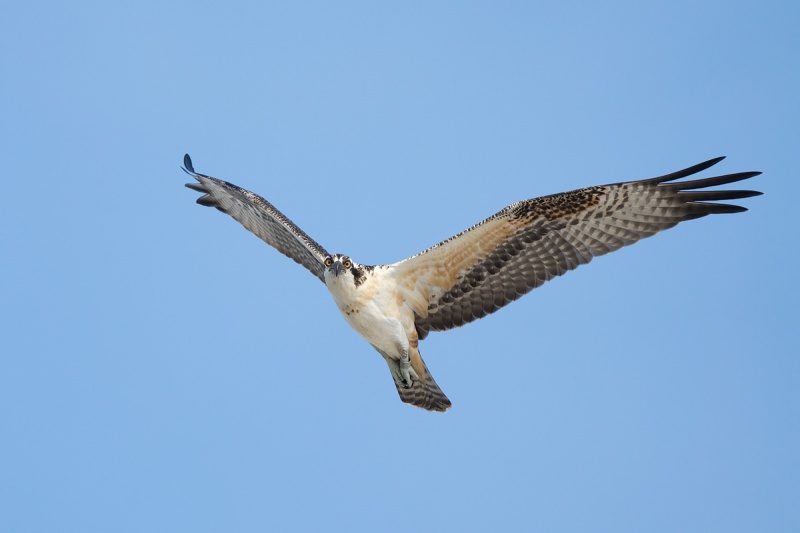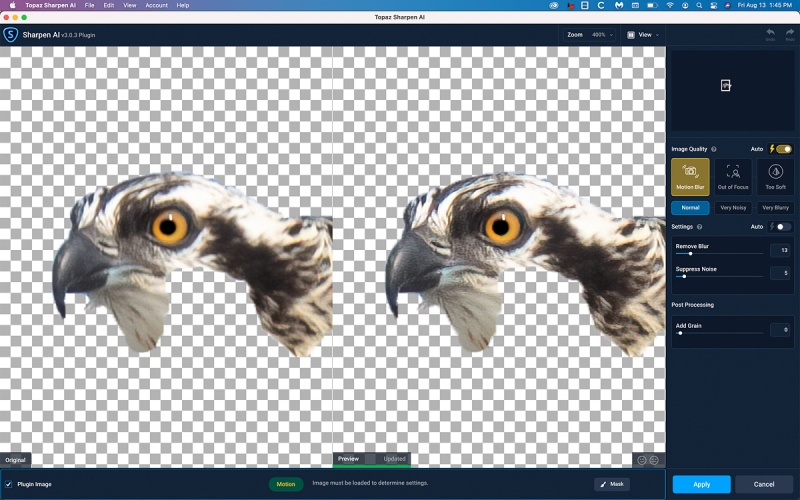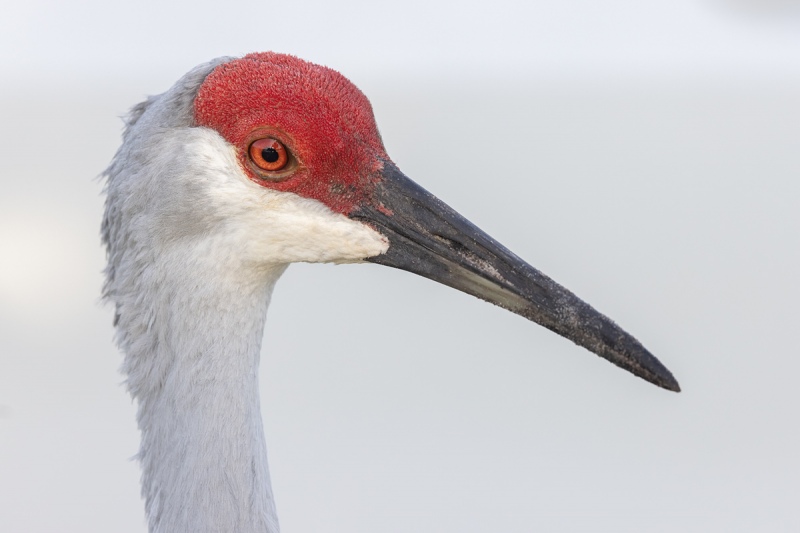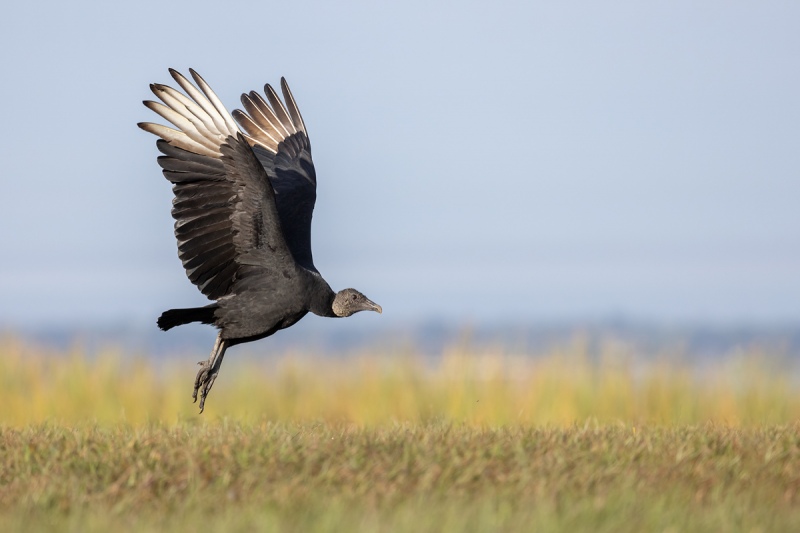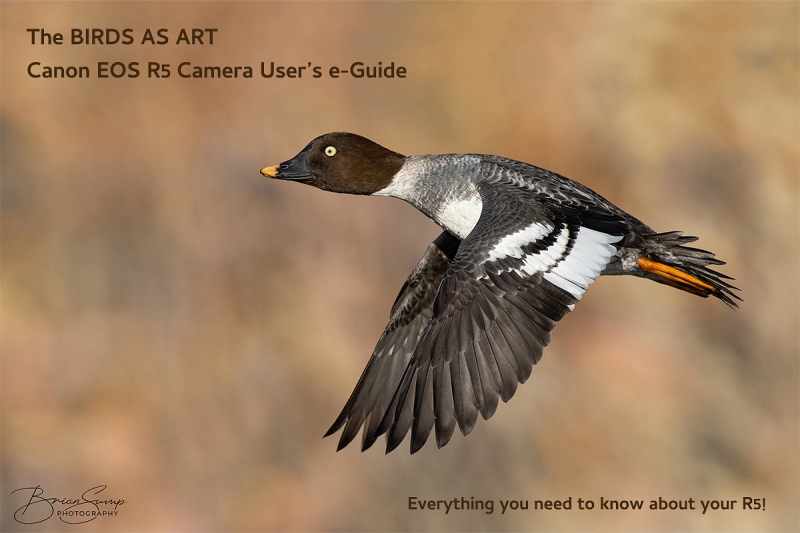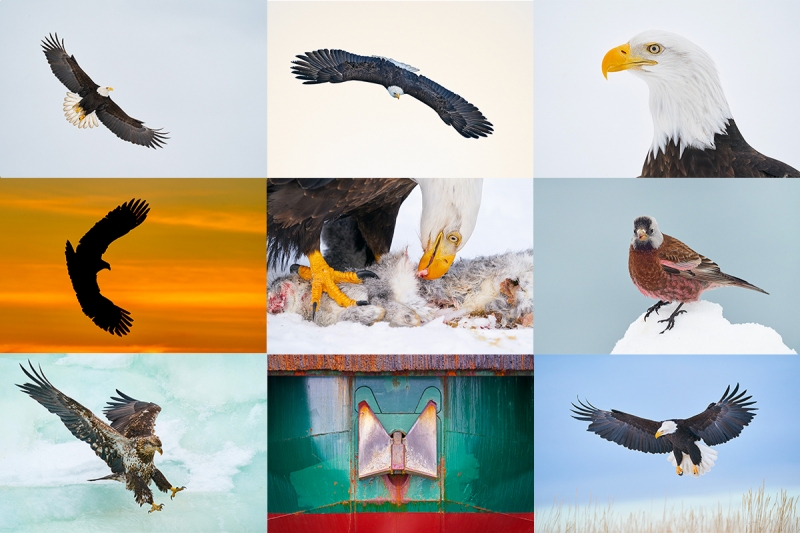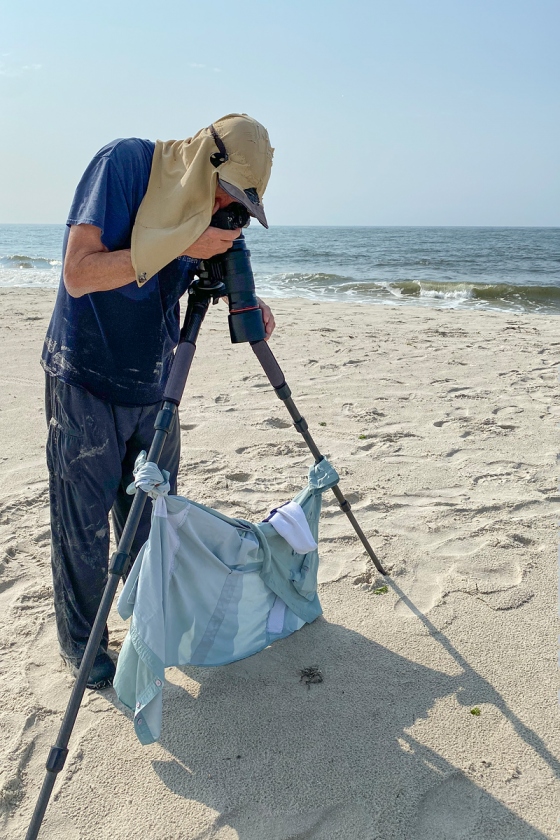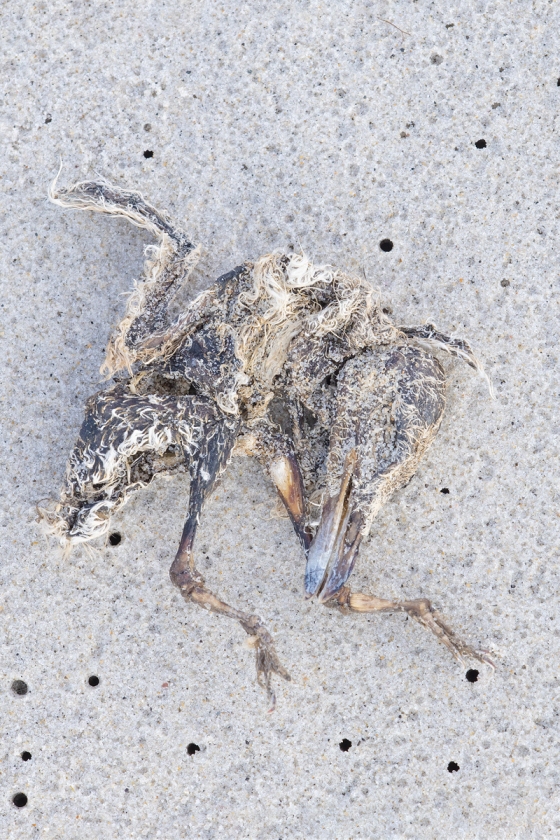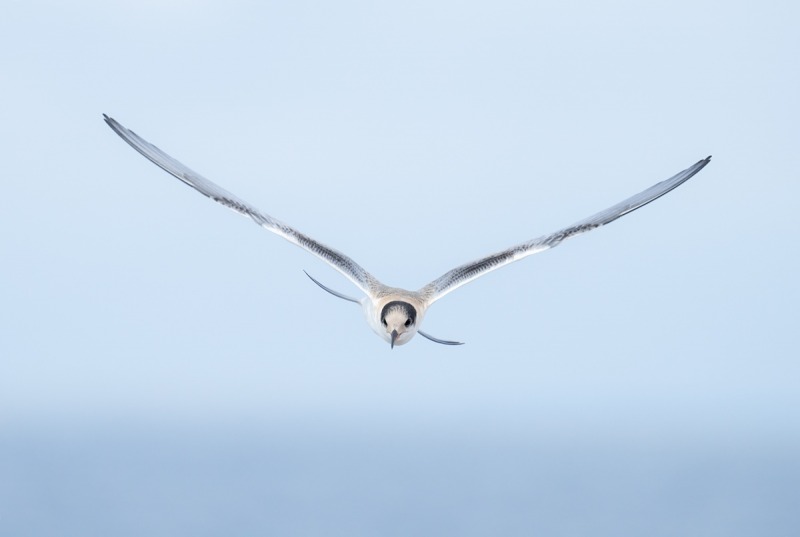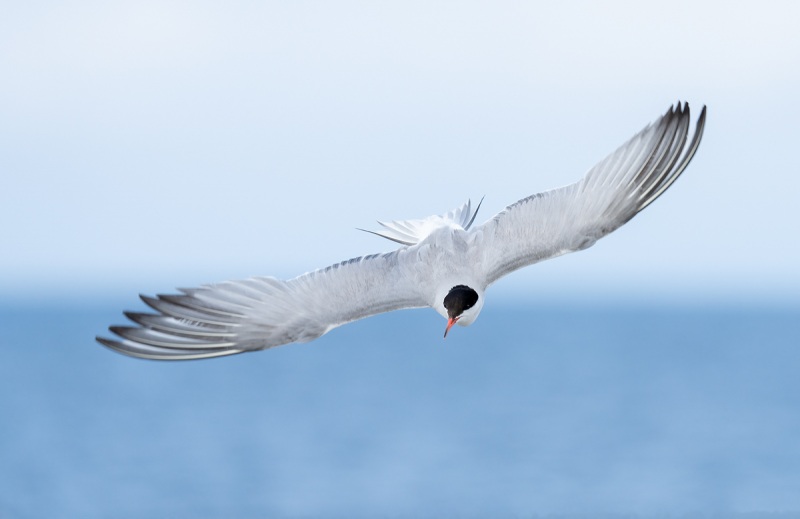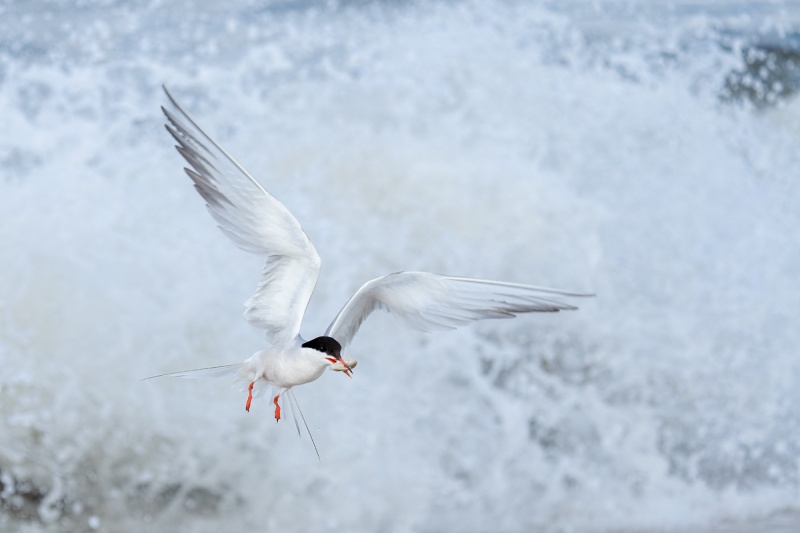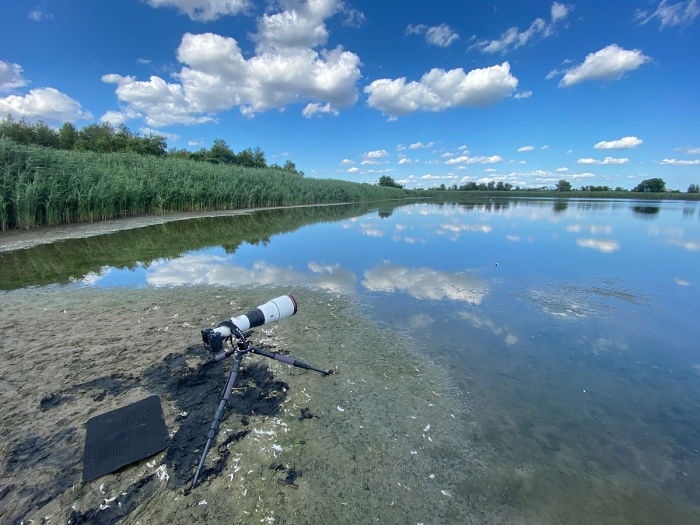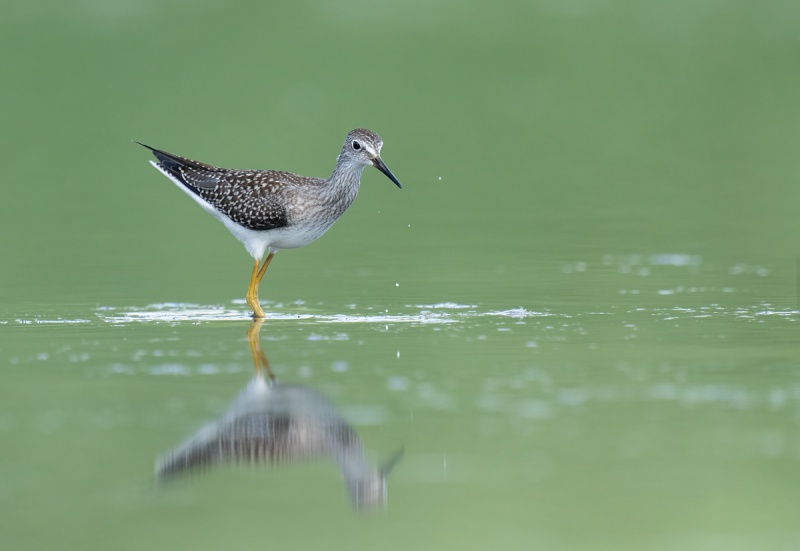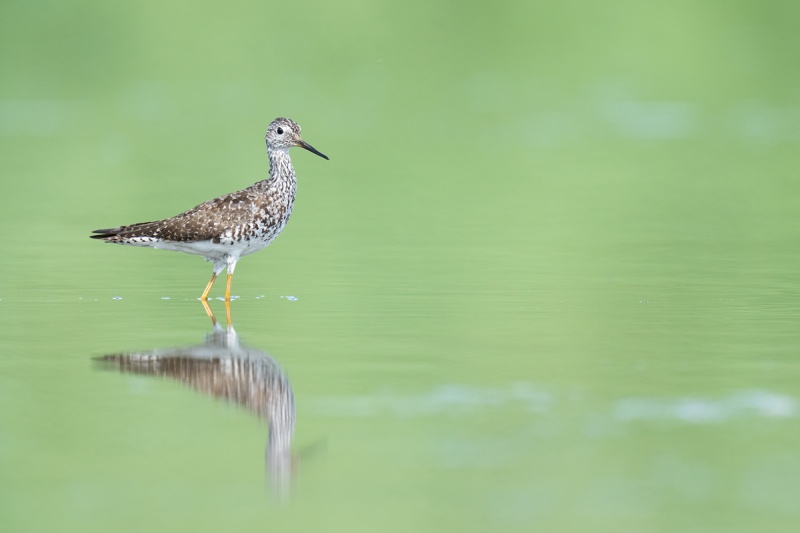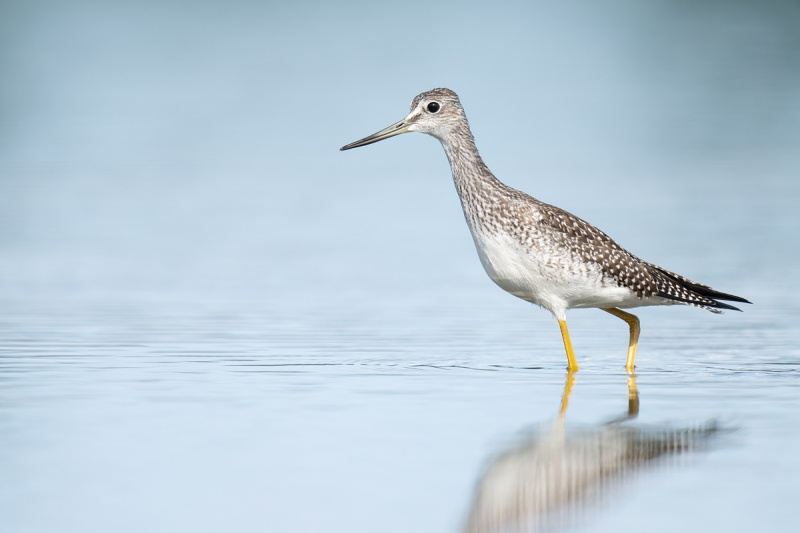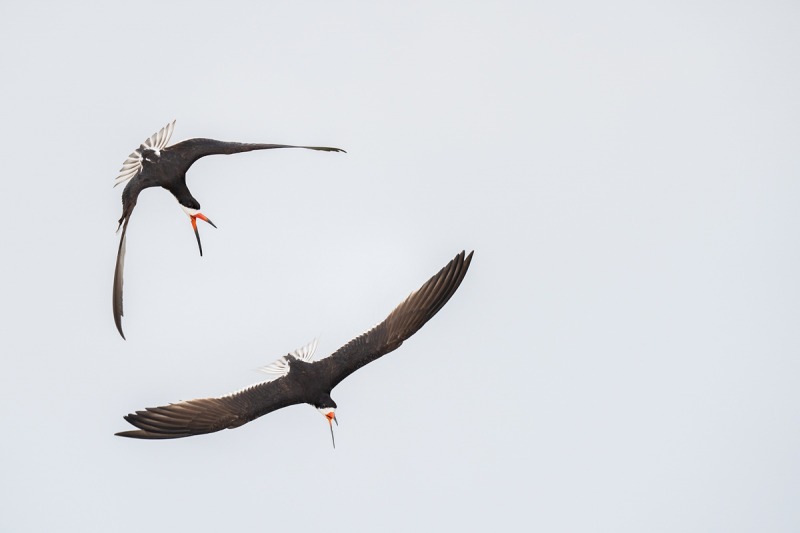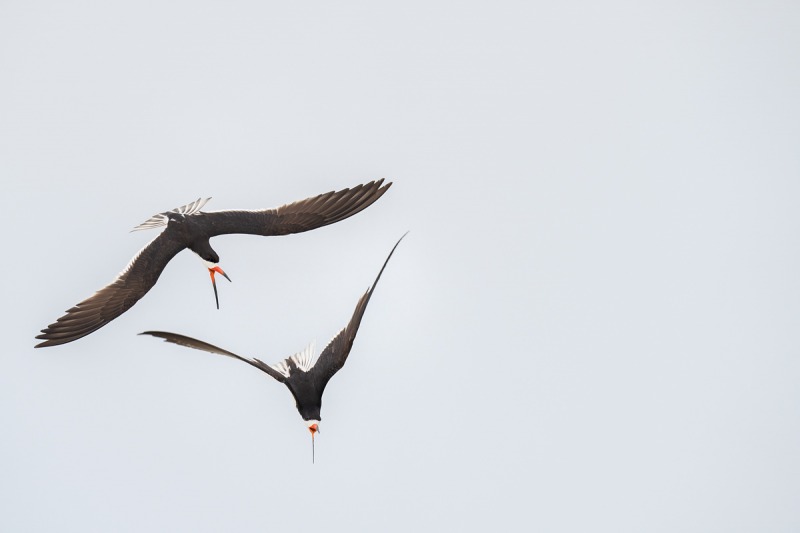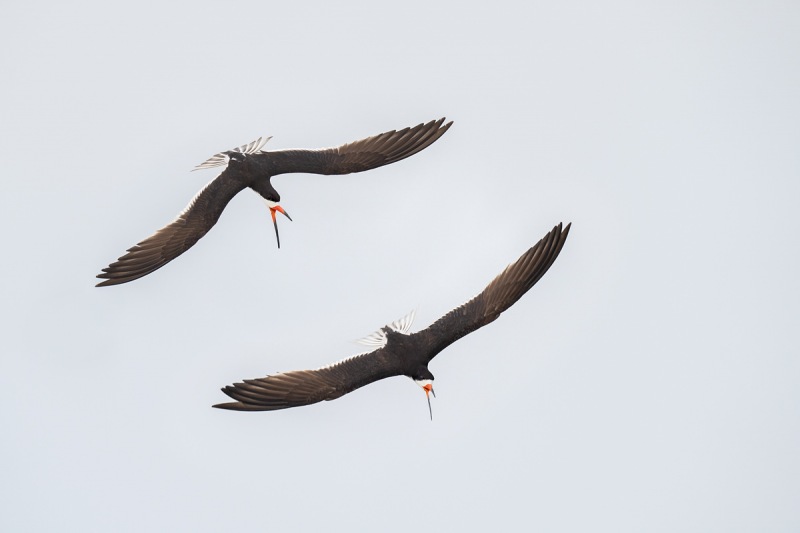August 28th, 2021 What’s Up?
As detailed in the opening of yesterday’s blog post, Friday morning was challenging at best. I kept very few images from a very short session. Today’s featured image was my favorite. Today is Saturday 28 August 2021; we may be headed to Plumb Beach to look for the reported Buff-breasted Sandpiper. Wherever you are, and whatever you are doing, I hope that you too have a great day.
Remember that you can find some great photo accessories (and necessities!) on Amazon by clicking on the Stuff tab on the orange/yellow menu bar above. On a related note, it would be extremely helpful if blog-folks like me, who spend too much money on Amazon, would get in the habit of clicking on the Amazon logo link on the right side of each blog post when they shop online. As you might expect, doing so will not cost you a single penny, but would be appreciated tremendously by yours truly. And doing so works seamlessly with your Amazon Prime account.
This blog post took less than an hour to prepare (including the time spent on the image optimization) and makes 240 consecutive days with a new one. Please remember that if an item — a Delkin flash card, or a tripod head — for example, that is available from B&H and/or Bedfords, is also available in the BAA Online Store, it would be great, and greatly appreciated, if you would opt to purchase from us. We will match any price. Please remember also to use my B&H affiliate links or to save 3% at Bedfords by using the BIRDSASART discount code at checkout. Doing either often earns you free guides and/or discounts. And doing so always earns my great appreciation.
Leg Cramps?
I suffered with nighttime leg cramps for several decades. I often woke tangled in the bedding in crushing pain from a leg cramp, unable to stand or find relief. About two years ago Dr. Cliff Oliver suggested that I try QuintEssential 3.3 – Seawater Electrolyte Liquid Minerals Supplement for Hydration, Muscle Recovery + Energy Support – Liquid Trace Minerals Electrolyte Drink (30 Sachets). The results were amazing. I’ve gone from having several cramps a night to perhaps having one cramp every three of four months. This item is brought to you as a public service.
Please Remember
With income from IPTs now close to zero, please, if you enjoy and learn from the blog, remember to use one of my two affiliate programs when purchasing new gear. Doing so just might make it possible for me to avoid having to try to get a job as a Walmart greeter and will not cost you a single penny more. And if you use Bedfords and remember to enter the BIRDSASART code at checkout, you will save 3% on every order and enjoy free second-day air shipping. In these crazy times — I am out at least forty to sixty thousand dollars so far due to COVID 19 (with lots more to come) — remembering to use my B&H link or to shop at Bedfords will help me out a ton and be greatly appreciated. Overseas folks who cannot order from the US because of import fees, duties, and taxes, are invited to help out by clicking here to leave a blog thank you gift if they see fit.
New and Better Bedfords Discount Policy!
You can now save 3% on all of your Bedfords photo gear purchases by entering the BIRDSASART coupon code at checkout. Your discount will be applied to your pre-tax total. In addition, by using the code you will get 2nd day air shipping via Fed Ex.
Grab a Nikon AF-S Teleconverter TC-14E III and save $14.99. Purchase a Canon EOS R5 and your discount will be $116.97. Purchase a Sony FE 600mm f/4 GM OSS lens and save a remarkable $389.94! Your Bedford’s purchase no longer needs to be greater than $1,000.00 for you to receive a discount. The more you spend, the more you save.
Money Saving Reminder
Many have learned that if you need a hot photo item that is out of stock at B&H and would enjoy free second-day air shipping, your best bet is to click here, place an order with Bedfords, and enter the coupon code BIRDSASART at checkout. If an item is out of stock, contact Steve Elkins via e-mail or on his cell phone at (479) 381-2592 (Central time). Be sure to mention the BIRDSASART coupon code and use it for your online order to save 3% and enjoy free 2nd-day air shipping. Steve has been great at getting folks the hot items that are out of stock at B&H and everywhere else. The wait lists at the big stores can be a year or longer for the hard to get items. Steve will surely get you your gear long before that. For the past year, he has been helping BAA Blog folks get their hands on items like the SONY a9 ii, the SONY 200-600 G OSS lens, the Canon EOS R5, the Canon RF 100-500mm lens, and the Nikon 500mm PF. Steve is personable, helpful, and eager to please.


Gear Questions and Advice
Too many folks attending BAA IPTs (remember those?) and dozens of photographers whom I see in the field and on BPN, are–out of ignorance–using the wrong gear, especially when it comes to tripods and more especially, tripod heads… Please know that I am always glad to answer your gear questions via e-mail.
Sipping
While 98% of the skimming skimmers were skimming away from me into the west wind, I noticed that in addition to the dozens of bathing and drinking Black Skimmers, some young terns were coming to the storm surge/rain pool to bathe and to drink the fresh water. The bathing birds flapped facing west away from the light but some of the drinking terns were not at all concerned with the wind direction.
The AF accuracy and the sharpness of SONY a1 images at 1200mm (on the 600 GM with the 2X TC) continues to astound me.
Color Balance Question
This image was created in warm early morning light. Did I make it too blue?
Typos
With all blog posts, feel free to e-mail or to leave a comment regarding any typos or errors.
August 27th, 2021 What Should Be Up?
For morning bird photography, you should be up. Very early … Learn more below.
What’s Up?
Thanks to the many who commented on the two pleasing blurs featured in yesterday’s blog post. I will share my thoughts with you on those images here tomorrow.
On Thursday, multiple IPT veteran Jim Dolgin joined us for an In-the-Field morning of bird photography at Nickerson Beach. Jim shoots the SONY 200-600 and an a9 ii. I loaned him one of my a1 bodies. After just a few minutes, he said, with regards to the autofocus system with Bird Eye/Face Detection activated, “This thing is sick. I am buying one asap.” With a west southwest wind and a sunny day forecast, I knew that we needed to get to the beach early as our best chances would be for blurs and backlit sunrise stuff with color. We had some great pre-dawn blast-offs, and a fairly decent sunrise muted by distant fog/smog/air pollution. Once the sun was out at full strength, we worked the surf line for gulls and oystercatchers. Jim got some great stuff on the oystercatchers. We then spent several challenging hours at a storm surge/rain pool where the wind against sun conditions made things very challenging. Jim managed the best image of a young skimmer skimming while walking in the shallow water.
On Thursday afternoon, Anke Frohlich and I worked with private client Dan Gerstman. Dan was a complete newbie, not only to bird photography, but to photography in general. He recently purchased a Nikon Z50 with two kit lenses, the longest a 50-250mm zoom. Anke was a plus as she had played with that camera for a bit when it first came out. We wanted to teach Dan to work in Manual mode. The camera was on Auto ISO so the first thing we needed to do was turn that off. We found it in the menu, and turned Auto ISO off, but the body was still in Auto ISO. I was feeling pretty helpless when I noticed a small lever that was set to movie mode. 🙂 That out of the way, working in the shade near the post office in Point Lookout before the beach re-opened to photographers, we showed him how set the shutter speed, the aperture, and the ISO, and to use the analogue exposure scale to get in the vicinity of the correct exposure. The camera was on single frame advance we quickly figured out via a ridiculously named menu item — Release Mode, that let us set 11 fps continuous shooting. The last piece to the puzzle was to set up Playback to show Highlight Alert and the histogram, and to explain both to Dan. He was a quick study, so we headed for the beach.
Dan was blown away by the experience as there were thousands of terns and skimmers blasting off until well after the sun went down. With his limited focal length, I got him on some cooperative oystercatchers and gulls. We had first one and then another Great Black-backed Gull grab a fledged skimmer in flight right in front of us. My shutter speed was way too low, so I was forced to watch as the young skimmer escaped successfully.
Today is Friday 27 August 2021. We were at the beach well before sunrise for another battle with wind against sun conditions. There were few pre-dawn blast offs, and not much doing with a second nicely muted sunrise. I headed back to the storm surge/rain pool and made a few good images of young Common Terns and their perfect reflections. The skimmers, however, were all skimming directly away from us into the west/southwest breeze. By 8am I was napping on the edge of the pool and by nine I was back in the car working on this blog post. Wherever you are, and whatever you are doing, I hope that you too have a great day.
Remember that you can find some great photo accessories (and necessities!) on Amazon by clicking on the Stuff tab on the orange/yellow menu bar above. On a related note, it would be extremely helpful if blog-folks like me, who spend too much money on Amazon, would get in the habit of clicking on the Amazon logo link on the right side of each blog post when they shop online. As you might expect, doing so will not cost you a single penny, but would be appreciated tremendously by yours truly. And doing so works seamlessly with your Amazon Prime account.
This blog post took 90 minutes to prepare (including the time spent on the image optimization) and makes 240 consecutive days with a new one. Please remember that if an item — a Delkin flash card, or a tripod head — for example, that is available from B&H and/or Bedfords, is also available in the BAA Online Store, it would be great, and greatly appreciated, if you would opt to purchase from us. We will match any price. Please remember also to use my B&H affiliate links or to save 3% at Bedfords by using the BIRDSASART discount code at checkout. Doing either often earns you free guides and/or discounts. And doing so always earns my great appreciation.
Please Remember
With income from IPTs now close to zero, please, if you enjoy and learn from the blog, remember to use one of my two affiliate programs when purchasing new gear. Doing so just might make it possible for me to avoid having to try to get a job as a Walmart greeter and will not cost you a single penny more. And if you use Bedfords and remember to enter the BIRDSASART code at checkout, you will save 3% on every order and enjoy free second-day air shipping. In these crazy times — I am out at least forty to sixty thousand dollars so far due to COVID 19 (with lots more to come) — remembering to use my B&H link or to shop at Bedfords will help me out a ton and be greatly appreciated. Overseas folks who cannot order from the US because of import fees, duties, and taxes, are invited to help out by clicking here to leave a blog thank you gift if they see fit.
New and Better Bedfords Discount Policy!
You can now save 3% on all of your Bedfords photo gear purchases by entering the BIRDSASART coupon code at checkout. Your discount will be applied to your pre-tax total. In addition, by using the code you will get 2nd day air shipping via Fed Ex.
Grab a Nikon AF-S Teleconverter TC-14E III and save $14.99. Purchase a Canon EOS R5 and your discount will be $116.97. Purchase a Sony FE 600mm f/4 GM OSS lens and save a remarkable $389.94! Your Bedford’s purchase no longer needs to be greater than $1,000.00 for you to receive a discount. The more you spend, the more you save.
Money Saving Reminder
Many have learned that if you need a hot photo item that is out of stock at B&H and would enjoy free second-day air shipping, your best bet is to click here, place an order with Bedfords, and enter the coupon code BIRDSASART at checkout. If an item is out of stock, contact Steve Elkins via e-mail or on his cell phone at (479) 381-2592 (Central time). Be sure to mention the BIRDSASART coupon code and use it for your online order to save 3% and enjoy free 2nd-day air shipping. Steve has been great at getting folks the hot items that are out of stock at B&H and everywhere else. The wait lists at the big stores can be a year or longer for the hard to get items. Steve will surely get you your gear long before that. For the past year, he has been helping BAA Blog folks get their hands on items like the SONY a9 ii, the SONY 200-600 G OSS lens, the Canon EOS R5, the Canon RF 100-500mm lens, and the Nikon 500mm PF. Steve is personable, helpful, and eager to please.


Gear Questions and Advice
Too many folks attending BAA IPTs (remember those?) and dozens of photographers whom I see in the field and on BPN, are–out of ignorance–using the wrong gear, especially when it comes to tripods and more especially, tripod heads… Please know that I am always glad to answer your gear questions via e-mail.
|
|
|
This image was created on 26 August 2021 at Nickerson Beach. I used the hand held Sony FE 200-600mm f/5.6-6.3 G OSS lens (at 600mm) and The One, the Sony Alpha 1 Mirrorless digital camera. ISO 2000: 1/2000 sec. at f/6.3 (wide open) in Manual mode. AWB at 6:32am on a relatively clear morning.
Tracking: Center Zone/AF-C Bird/Eye Detection AF was active at the moment exposure and performed perfectly.
Be sure to click on the image to enjoy a larger, hi-res version.
Image #1: American Oystercatcher sunrise silhouette
|
Getting Up Early
Yes, you cannot make images like the one immediately above if you sleep in and show up at the beach at 8am. Or, at present, even at 7am. To get in position for the strong backlight, we had to get our feet wet. I advised Jim to try to create an image with the bird as close as possible to the blasting highlights on the receding waves and the wet sand without including any of them in the frame. With today’s featured image — a one-shot wonder, I managed to do just that. I used Tracking: Center Zone to place the bird high left in the frame so as to include the complete reflection.
|
|
Image #1A: The RawDigger screen capture for the American Oystercatcher sunrise silhouette image
|
Ho Hum: Another Dead-Solid Perfect Raw File …
As the 2543 over-exposed pixels in this image (out of 51,000,000) were all in the specular highlight of the reflected sun on the left side of the frame, this is another dead solid perfect exposure. I used my usual cadre of clean-up tools to eliminate those highlights along with a dozen or so additional imperfections.
Note that even when creating silhouettes, it is proper to expose to the right in order to reduce noise levels and avoid the muddy colors that often accompany an underexposed raw file. The silhouette is created during the raw conversion in ACR.
All of the above plus tons more are as detailed in Digital Basic II.
|
|
Image #1A: RawDigger screen capture for the Zebra Swallowtail on Carolina Red Root blossom image
|
Dead-Solid Perfect!
Images where the G channel gets 2/3rds of the way from the 8000 to the 16000 line are perfect exposures. Images where the G channel gets right up to the line are dead-solid perfect. With 195 OvExp pixels out of 51,000,000 this is a dead-solid perfect exposure.
RawDigger — not for the faint of heart …
Nothing has ever helped me learn to create perfect exposures to the degree that RawDigger has. I think that many folks are reluctant to learn that most of their images are underexposed by one or more full stops and that highlight warnings in Photoshop, Lightroom, Capture One, and your in-camera histogram are completely bogus as they are based on the embedded JPEGs. Only your raw files tell the truth all the time. Heck, I resisted RawDigger for several years … Once you get over that feeling, RawDigger can become your very best exposure friend no matter what system you are using. On the recent IPTs and In-the-Field sessions, we have demonstrated that fact. Convincingly.
The RawDigger (pink) Adapted Histogram
In the RawDigger e-Guide, you will learn exactly how to set up the Adapted “pink” RawDigger Histogram and how to use it to quickly and easily evaluate the exposure or raw file brightness of images from all digital cameras currently in use. RawDigger was especially helpful to me when I struggled with R5 exposures and when learned my new camera body, the Sony Alpha a1.
|
|
RawDigger e-Guide with Two Videos
|
The RawDigger e-Guide with Two Videos
by Arthur Morris with Patrick Sparkman
The RawDigger e-Guide was created only for serious photographers who wish to get the absolute most out of their raw files. Most recently, I have come to depend on RawDigger to guide me when adjusting the Exposure slider in Adobe Camera Raw.
Patrick and I began work on the guide in July 2020. At first we struggled. We asked questions. We learned about Max-G values. We could not figure out why the Max G values varied by camera system. IPT veteran Bart Deamer asked lots of questions that we could not answer. We got help from RawDigger creator Iliah Borg. We learned. In December, Patrick came up with an Adapted Histogram that allows us to evaluate the exposures and raw file brightness for all images created with all digital camera bodies from the last two decades. What we learned each time prompted three complete beginning to end re-writes.
The point of the guide is to teach you to truly expose to the mega-Expose-to-the-Right so that you will minimize noise, maximize image quality, best utilize your camera’s dynamic range, and attain the highest possible level of shadow detail in your RAW files in every situation. In addition, your properly exposed RAW files will contain more tonal information and feature the smoothest possible transitions between tones. And your optimized images will feature rich, accurate color.
We teach you why the GREEN channel is almost always the first to over-expose. We save you money by advising you which version of RawDigger you need. We teach you how to interpret the Max G values for your Canon, Nikon, and SONY camera bodies. It is very likely that the Shock-your-World section will shock you. And lastly — thanks to the technical and practical brilliance of Patrick Sparkman — we teach you a simple way to quickly and easily evaluate your exposures and raw file brightness using an Adapted RawDigger histogram.
The flower video takes you through a session where artie edits a folder of images in Capture One while checking the exposures and Max-G values in RawDigger. The Adapted Histogram video examines a series of recent images with the pink histograms and covers lots of fine points including and especially how to deal with specular highlights. The directions for setting up the Adapted Histogram are in the text.
If we priced this guide based on how much effort we put into it, it would sell it for $999.00. But as this guide will be purchased only by a limited number of serious photographers, we have priced it at $51.00. You can order yours here in the BAA Online Store.
SONY a1 AF: Beyond Belief …
a1 Bird-Eye/Face Detection has gotten much better since the V1.10 firmware update that completely eliminated the EVF Blackout problems. It has become easier to trust the AF system whether working birds perched or on the ground, when doing flight photography, or when working off the tilted rear screen with the tripod almost at ground level. In short, thee a1 AF system is amazing.
SONY and artie
Switching to SONY, first with the a9 and the a9 II, and then to the remarkable a1, has enabled me (and others, like Mike De Rosa as seen a while ago in the blog post here), to create images of birds in flight and in action that I could not have even dreamed of when using Canon for 33 years and then Nikon for more than two. Most of the time I am using one of two AF methods that together, cover about 99% of the commonly-encountered bird photography situations. At present, I am experimenting beyond those … Learn more by joining the group!
From Long-ago IPT veteran Keith Kennedy via e-mail
Absolutely great information. I am calling Jim in a few minutes to order a couple of Delkin 128GB UHS-II cards. Your timely email has saved me a ton of money! Many thanks
In the same vein, via e-mail from John LeClair
Well, e-mail #21 alone was worth the price of admission!
From Pamela Viale, after receiving artie’s a1 settings along with detailed instructions on how to copy them to her SONY a1 via e-mail
This e-mail group has been an incredible boon to me! Thank you so much!
From Joe Barranco via e-Mail
Thanks for your great ideas on the A1 set up. I have been getting MANY more keepers doing things your way!
From Barbara White via e-Mail
Wow, I just gotta say – I learn so much from the SONY Alpha a1 Set-up and Info group! My camera is on my desk, and I’m always picking it up and changing something that I’ve read about in the e-mails.
Thanks, Barbara
From Janet Horton via e-Mail
Hi Artie, Mystery solved. Yes, I was able to replicate what you did. I forgot that you have to set self-timer using the upper dial. I am used to that being a MENU selection.
Thanks much, Janet
SONY Alpha a1 Set-up and Info Group
The SONY Alpha a1 Set-up and Info Group is going great guns as more and more folks chime in with thoughtful questions and experience-based answers. As the a1 is becoming more readily available, more and more folks are getting their hands on this amazing body. With two folks joining yesterday, we are now up to an astounding 77 lucky and blessed photographers! Early on, we discussed the myriad AF options. I gave my opinion as to the best one for flight and general bird photography. More recently, we have been in contact with folks at SONY sharing our thoughts, experiences, and frustrations with the EVF blackout problem.
All who purchased their Alpha a1 bodies via a BAA affiliate link will receive a free subscription to the Sony Alpha a1 Set-Up and Info Updates after shooting me their receipts via e-mail. (Note: it may take me several days to confirm B&H orders.) This same service may be purchased by anyone with an a1 body via a $150.00 PayPal sent to birdsasart@verizon.net indicating payment for Alpha a1 Info Updates. Alternatively, folks can call Jim weekdays at 1-863-692-0906 to pay via credit card. New members will receive composite e-mails that summarize all previous discussions.
Typos
With all blog posts, feel free to e-mail or to leave a comment regarding any typos or errors.
August 26th, 2021 Multiple Choice Quiz
Which of today’s featured pleasing (to many folks) blurs do you like best?
A- Image #1 because ____________.
B- Image #2 because ____________.
C- I like both because ____________.
D- I hate all blurs because ____________.
Higher Res Viewing
Please note that the small JPEGs in each blog post are for display purposes only. Clicking on each blog image to enlarge it will bring up a stunning high resolution image. For unknown reasons, the smaller images simply do not look sharp. I am attempting to rectify that situation. In the meantime, click on the images to be impressed by the quality of the new higher res photos.
What’s Up?
Due to popular demand, I created the Adobe Camera Raw/Raw Conversion Video on Wednesday. It will be in the store soon. And I went for a swim with grandson Idris at the community pool at my sister Ilene’s home. Today is Thursday 25 August 2021 and I will be headed early to Nickerson Beach for a private In-the-Field session with IPT veteran Jim Dolgin. I will likely be heading back to Florida in about a week. If you would like to hook up for an In-the-field session at Nickerson Beach, please get in touch via e-mail. Wherever you are, and whatever you are doing, I hope that you too have a great day.
Remember that you can find some great photo accessories (and necessities!) on Amazon by clicking on the Stuff tab on the orange/yellow menu bar above. On a related note, it would be extremely helpful if blog-folks like me, who spend too much money on Amazon, would get in the habit of clicking on the Amazon logo link on the right side of each blog post when they shop online. As you might expect, doing so will not cost you a single penny, but would be appreciated tremendously by yours truly. And doing so works seamlessly with your Amazon Prime account.
This blog post took about one hour to prepare (including the time spent on the image optimization) and makes 239 consecutive days with a new one. Please remember that if an item — a Delkin flash card, or a tripod head — for example, that is available from B&H and/or Bedfords, is also available in the BAA Online Store, it would be great, and greatly appreciated, if you would opt to purchase from us. We will match any price. Please remember also to use my B&H affiliate links or to save 3% at Bedfords by using the BIRDSASART discount code at checkout. Doing either often earns you free guides and/or discounts. And doing so always earns my great appreciation.
Please Remember
With income from IPTs now close to zero, please, if you enjoy and learn from the blog, remember to use one of my two affiliate programs when purchasing new gear. Doing so just might make it possible for me to avoid having to try to get a job as a Walmart greeter and will not cost you a single penny more. And if you use Bedfords and remember to enter the BIRDSASART code at checkout, you will save 3% on every order and enjoy free second-day air shipping. In these crazy times — I am out at least forty to sixty thousand dollars so far due to COVID 19 (with lots more to come) — remembering to use my B&H link or to shop at Bedfords will help me out a ton and be greatly appreciated. Overseas folks who cannot order from the US because of import fees, duties, and taxes, are invited to help out by clicking here to leave a blog thank you gift if they see fit.
New and Better Bedfords Discount Policy!
You can now save 3% on all of your Bedfords photo gear purchases by entering the BIRDSASART coupon code at checkout. Your discount will be applied to your pre-tax total. In addition, by using the code you will get 2nd day air shipping via Fed Ex.
Grab a Nikon AF-S Teleconverter TC-14E III and save $14.99. Purchase a Canon EOS R5 and your discount will be $116.97. Purchase a Sony FE 600mm f/4 GM OSS lens and save a remarkable $389.94! Your Bedford’s purchase no longer needs to be greater than $1,000.00 for you to receive a discount. The more you spend, the more you save.
Money Saving Reminder
Many have learned that if you need a hot photo item that is out of stock at B&H and would enjoy free second-day air shipping, your best bet is to click here, place an order with Bedfords, and enter the coupon code BIRDSASART at checkout. If an item is out of stock, contact Steve Elkins via e-mail or on his cell phone at (479) 381-2592 (Central time). Be sure to mention the BIRDSASART coupon code and use it for your online order to save 3% and enjoy free 2nd-day air shipping. Steve has been great at getting folks the hot items that are out of stock at B&H and everywhere else. The wait lists at the big stores can be a year or longer for the hard to get items. Steve will surely get you your gear long before that. For the past year, he has been helping BAA Blog folks get their hands on items like the SONY a9 ii, the SONY 200-600 G OSS lens, the Canon EOS R5, the Canon RF 100-500mm lens, and the Nikon 500mm PF. Steve is personable, helpful, and eager to please.


Gear Questions and Advice
Too many folks attending BAA IPTs (remember those?) and dozens of photographers whom I see in the field and on BPN, are–out of ignorance–using the wrong gear, especially when it comes to tripods and more especially, tripod heads… Please know that I am always glad to answer your gear questions via e-mail.
|
|
|
This image was created on 5 August 2021 at Nickerson Beach. I used the hand held Sony FE 200-600mm f/5.6-6.3 G OSS lens (at 467mm) and The One, the Sony Alpha 1 Mirrorless digital camera. ISO 250: 1/30 sec. at f/6.3 (wide open) in Manual mode. AWB at 7:21am on a dark, cloudy morning.
Tracking: Center Zone/AF-C Bird/Eye Detection AF was active at the moment exposure and performed as expected: very well.
Be sure to click on the image to enjoy a larger, hi-res version.
Image #1: Black Skimmer striking at fish or drinking
|
The Location and the Situation
Finding this location at Nickerson Beach is easy. As you enter the parking lot, look around. If you see some skimmers and terns roosting in the parking lot, look around some more and you will locate the skimming location. The birds usually cooperate early on cloudy mornings, often — but not always, on mornings with a light drizzle and a wind from somewhere in the north.
Once you’ve figured out where the birds are skimming approach the location slowly and carefully with the wind behind you so that the birds are skimming towards you. Then set a slow shutter speed, determine the right exposure, and make lots of images. You will be deleting a very high percentages of the images that you make; each really good pleasing blur is like winning the lottery.
|
|
|
This image was created on 9 August 2021 at Nickerson Beach. I used the hand held Sony FE 200-600mm f/5.6-6.3 G OSS lens (at 356mm) and The One, the Sony Alpha 1 Mirrorless digital camera. ISO 100: 1/15 sec. at f/7.1 (wide open) in Manual mode. AWB at 6:41am on a cloudy morning.
Tracking: Center Zone/AF-C Bird/Eye Detection AF was active at the moment exposure and performed as expected: very well.
Be sure to click on the image to enjoy a larger, hi-res version.
Image #2: Black Skimmer skimming
|
Vary Your Shutter Speeds
If there are lots of birds skimming, it pays to vary your shutter speed from time to time. Your choices lie somewhere between 1/8 (or very rarely 1/4) sec., and 1/125 sec. All things (especially your ability to match the speed of the bird in flight with your panning speed) being equal, the closer you are to the bird the greater the degree of blurring at a given shutter speed. 1/15 second as in Image #1 is usually regarded as the classic blur speed so it never hurts to start there.
RawDigger showed that both of today’s featured images were close to one stop underexposed. The lower the light, the more likely folks are to underexpose their images. Accurately learning the accuracy of the exposure helps me to adjust the Exposure slider when beginning a raw conversion in ACR.
A Guide to Pleasing Blurs
Learn everything there is to know about creating pleasingly blurred images in A Guide to Pleasing Blurs by Denise Ippolito and yours truly. This 20,585 word, 271 page PDF is illustrated with 144 different, exciting, and artistic images. The guide covers the basics of creating pleasingly blurred images, the factors that influence the degree of blurring, the use of filters in creating pleasing blurs, and a great variety of both in-the-field and Photoshop techniques that can be used to create pleasingly blurred images.
Artie and Denise teach you many different ways to move your lens during the exposure to create a variety of pleasingly blurred images of flowers and trees and water and landscapes. They will teach you to recognize situations where subject movement can be used to your advantage to create pan blurs, wind blurs, and moving water blurs. They will teach you to create zoom-blurs both in the field and during post-processing. Artie shares the techniques that he has used and developed for making blurred images of flocks of geese in flight at his beloved Bosque del Apache and Denise shares her flower blur magic as well as a variety of creative Photoshop techniques that she has developed.
With the advent of digital capture creating blurred images has become a great and inexpensive way to go out with your camera and have fun. And while many folks think that making successful blurred images is the result of being a sloppy photographer, nothing could be further from the truth. In “A Guide to Pleasing Blurs,” Artie and Denise will help you to unleash your creative self.
Typos
With all blog posts, feel free to e-mail or to leave a comment regarding any typos or errors.
August 25th, 2021 Higher Res Viewing
Please note that the small JPEGs in each blog post are for display purposes only. Clicking on each blog image to enlarge it will bring up a stunning high resolution image. For unknown reasons, the smaller images simply do not look sharp. I am attempting to rectify that situation. In the meantime, click on the images to be impressed by the quality of the new higher res photos.
What’s Up?
I got a ton of work done on Tuesday morning and am looking forward to getting back to Nickerson Beach for a few days soon. Huge thanks to Greg Gard for leaving a comment on yesterday’s blog post letting everyone know that as of Tuesday 24 August there was no dry land anywhere on the East Pond as the NYC area got over 4” of rain! On Tuesday afternoon, I took my first swim in more than two weeks; it felt great to get back in the water.
Today is Wednesday 25 August 2021 and I will be staying in and getting lots more work done. I will likely be heading back to Florida in about a week. If you would like to try and hook up for an In-the-field session at Nickerson Beach, please get in touch via e-mail. Wherever you are, and whatever you are doing, I hope that you too have a great day.
Remember that you can find some great photo accessories (and necessities!) on Amazon by clicking on the Stuff tab on the orange/yellow menu bar above. On a related note, it would be extremely helpful if blog-folks like me, who spend too much money on Amazon, would get in the habit of clicking on the Amazon logo link on the right side of each blog post when they shop online. As you might expect, doing so will not cost you a single penny, but would be appreciated tremendously by yours truly. And doing so works seamlessly with your Amazon Prime account.
This blog post took about two hours to prepare (including the time spent on the image optimization) and makes 238 consecutive days with a new one. Please remember that if an item — a Delkin flash card, or a tripod head — for example, that is available from B&H and/or Bedfords, is also available in the BAA Online Store, it would be great, and greatly appreciated, if you would opt to purchase from us. We will match any price. Please remember also to use my B&H affiliate links or to save 3% at Bedfords by using the BIRDSASART discount code at checkout. Doing either often earns you free guides and/or discounts. And doing so always earns my great appreciation.
Selling Your Used Photo Gear Through BIRDS AS ART
Selling your used (or like-new) photo gear through the BAA Blog is a great idea. We charge only a 5% commission. One of the more popular used gear for sale sites charged a minimum of 20%. Plus assorted fees! Yikes. They went out of business. And e-Bay fees are now up to 13%. The minimum item price here is $500 (or less for a $25 fee). If you are interested please scroll down here or shoot us an e-mail with the words Items for Sale Info Request cut and pasted into the Subject line :). Stuff that is priced fairly — I offer pricing advice to those who agree to the terms — usually sells in no time flat. Over the past year, we have sold many dozens of items. Do know that prices on some items like the EOS-1D Mark IV, the old Canon 100-400, the old 500mm, the EOS-7D and 7D Mark II and the original 400mm DO lens have been dropping steadily. Most recently the price of used Canon 600mm f/L IS II lenses have been dropping like a rock with the introduction of the 600 III. You can always see the current listings by clicking here or on the Used Photo Gear tab on the orange-yellow menu bar near the top of each blog post page.
Right now, especially with dSLR bodies, there are some great buys both below and on the Used Gear Page.
Recent Gear Sales
Wally Barkley sold a Sony a9 II in near-mint condition for a BAA record-low $2494.00 (was $2694.00) in mid-August 2021.
Long-time-ago South Georgia shipmate Asta Tobiassen sold his Canon EF 500m f/4 L IS II USM lens in excellent condition for a very low $4999.00, a Canon EOS 5D Mark IV with the BG-E20 Battery Grip, both in like-new condition, for just $1749.00, a Canon EF 100mm f/2.8 USM Macro Lens with the Canon Tripod Mount Ring B (a $149.95 value) in near-mint condition for the very low price of $299.00, a Canon EF 1.4X II teleconverter for a very low $129.00, and a Canon EF 2X III teleconverter for a very low $429.00, all within days of being listed in August 2021.
BAA-friend and many multiple IPT veteran Anita North sold a Sony a9 II in excellent condition (with no battery) for a BAA record-low price in USD in late August 2021.
BAA friend Ron Horn sold his Canon EOS-1DX II in excellent plus condition for the BAA record low price of $2099.00 (was $2199.00) soon after it was list ing in early august 2021.
IPT veteran Sandra Calderbank sold her Canon EOS 7D Mark II in-near mint condition with 21,069 actuations for $549 (was $649.00) in early July 2021.
Multiple IPT veteran Larry Master sold his Sony a9 ii mirrorless digital camera body in near-mint condition (with a very low shutter count of 2340) for $2695.00 (was $2998.00) in early July 2021.
BAA-friend, botanist “Bug” Bob Allen, sold his Canon EF 24-105mm f/4L IS USM Lens in very good condition for $249.00 (was $549.00) in early July 2021.
BAA-friend, botanist “Bug” Bob Allen, sold his Canon Extender EF 1.4x III in excellent condition for $249.00 (was $349.00) in early July.
Canon Price Drops!
Canon EF 100-400m f/4.5-5.6L IS II USM Zoom Lens
Price reduced $100.00 24 August 2021
Long-time-ago South Georgia shipmate Asta Tobiassen is offering a Canon EF 100-400mm f/4.5-5.6L IS II USM zoom lens in excellent condition for $1299.00 (was $1399.00). The sale includes the original box, the carrying case, the front and rear lens caps, the lens hood, a LensCoat, a LensCoat TravelCoat, a LensCoat Hoodie, and insured ground shipping via major courier to lower-48 US addresses only. Your item will not ship until your check clears unless other arrangements are made.
Please contact Asta via e-mail
This incredibly versatile zoom lens — with its amazing .98 meter close focus — was my favorite Canon telephoto zoom lens ever. By far. It is easy to hand hold, great for tight portraits, birds in flight, quasi-macro stuff, and lots more. For flight, it is even better with an R5! The lens sells new for $2399.00 so you can save some hard cash by grabbing Asta’s zoom lens now. artie
Canon EOS 7D Mark II w/BG-E16 Battery Grip & L-Plate
Price reduced $100.00 24 August 2021
Long-time-ago South Georgia shipmate Asta Tobiassen is offering a Canon EOS 7D Mark II in Very Good to Excellent condition with a like-new BG-E16 Battery Grip for a ridiculously low $499.00 (was $599.00). The sale includes the original box, the front cap, the strap, a RRS L-Plate, one extra battery, the charger, the BG-16 battery grip, and insured ground shipping via major courier to lower-48 US addresses only. Your item will not ship until your check clears unless other arrangements are made.
Please contact Asta via e-mail
Years ago, both Patrick Sparkman and I used and loved the 7D Mark II until we both committed to using full-frame Canon bodies. And we both made some truly great images with it. Two of my three 2016 Nature’s Best honored entries were created with the 7D II, one still, and one video. One thing is for sure: the 7D Mark II is the greatest value ever dSLR. artie
Canon EOS-1DX Mark II Professional dSLR
Price reduced $50.00 0n 24 August 2021
IPT veteran Sheldon Goldstein is offering a Canon EOS-1DX Mark II camera body in like-new condition for $2149.00 (was $2,199.00). The body has only 13,700 shutter actuations and was recently cleaned and checked by Canon Professional Services. The sale includes one extra battery, the dual battery charger, the front cap, the, DC Coupler, and insured ground shipping via major courier to lower-48 US addresses only. Your item will not ship until your check clears unless other arrangements are made.
Please contact Sheldon via e-mail or by phone at 646-423-0392 (Eastern time zone).
The 1DX Mark II is a rugged, fast Canon professional digital camera body. It features an excellent AF system and high quality image files with great dynamic range. When he used Canon, it was the first choice of Arash Hazeghi, the world’s premier photographer of birds in flight. This body is still in production and currently sells new for $4,499.00. Save a very sweet $2350.00 by grabbing Sheldon’s dSLR body ASAP. artie
Canon EF 100-400m f/4.5-5.6L IS II USM Zoom Lens
Price reduced $100.00 0n 24 August 2021
IPT veteran Sheldon Goldstein is offering a Canon EF 100-400m f/4.5-5.6L IS II USM zoom lens in excellent condition for $1399 (was $1499.00). The lens was recently cleaned and checked by Canon Professional Services. The sale includes a Wimberley P-20 lens plate (a $52.00 value), the rear lens cap, the front lens cap, the lens case and strap, and insured ground shipping via major courier to lower-48 US addresses only. Your item will not ship until your check clears unless other arrangements are made.
Please contact Sheldon via e-mail or by phone at 646-423-0392 (Eastern time zone).
This incredibly versatile zoom lens — with its amazing .98 meter close focus — was my favorite Canon telephoto zoom lens ever. By far. It is easy to hand hold, great for tight portraits, birds in flight, quasi-macro stuff, and lots more. For flight, it is even better with an R5! The lens sells new for $2399.00 so you can save some hard cash by grabbing Sheldon’s zoom lens now. artie
|
|
|
Click on the image to view a larger, hi-res version.
Image #1: The original showing the AF point for the Semipalmated Sandpiper: molting adult in flight image
|
Universal Advice for Better Flight Photography Results …
Pan faster. As mentioned here often, superior strength, stamina, hand-eye coordination, and fast reflexes will result in better flight images. The rest of us will struggle with keeping the flying bird in the center of the frame as I did with today’s featured image made with “only” the 200-600 G lens. (Hand holding the 600 f/4 for flight photography is much more difficult). In the meantime, for better flight photography results: pan faster!
In the SONY Alpha a1 Set-up and Info Notes #23 e-mail sent this morning, I shared my thoughts on simplifying the AF methods for more efficient shooting. And offered an explanation as to why so many a1 flight images are sharp on the eye even though the AF point is nowhere near the subject. Along with lots more. If you own an a1 and are not a member of the group, you are missing a ton of great info.
SONY Alpha a1 Set-up and Info Group
The SONY Alpha a1 Set-up and Info Group is going great guns as more and more folks chime in with thoughtful questions and experience-based answers. As the a1 is becoming more readily available, more and more folks are getting their hands on this amazing body. With two folks joining yesterday, we are now up to an astounding 78 lucky and blessed photographers! Early on, we discussed the myriad AF options. I gave my opinion as to the best one for flight and general bird photography. More recently, we have been in contact with folks at SONY sharing our thoughts, experiences, and frustrations with the EVF blackout problem.
All who purchased their Alpha a1 bodies via a BAA affiliate link will receive a free subscription to the Sony Alpha a1 Set-Up and Info Updates after shooting me their receipts via e-mail. (Note: it may take me several days to confirm B&H orders.) This same service may be purchased by anyone with an a1 body via a $150.00 PayPal sent to birdsasart@verizon.net indicating payment for Alpha a1 Info Updates. Alternatively, folks can call Jim weekdays at 1-863-692-0906 to pay via credit card. New members will receive composite e-mails that summarize all previous discussions.
|
|
|
Click on the image to view a hi-res version.
Image #1A: Content-Aware Crop setup for the Semipalmated Sandpiper: molting adult in flight image
|
Free Tutorial: Content-Aware Crop
As I was unable to keep the bird in the center of the frame, I relied on Content-aware Crop to save the day, and the image. And since this tool is fairly new with the more recent versions of Photoshop, I decided to offer a short but free tutorial here today.
Convert the image and run Topaz DeNoise. Then hit C for the Crop Tool. Make sure that both the Delete Cropped Pixels and the Content-Aware boxes are checked. Then reduce the size of the image in the window by hitting Command – a few times. Then pull out the love handles to add canvas as needed to add the desired canvas. The hit Enter or click on the check mark to execute the crop. The more canvas that you add, the longer it will take to render. Please remember that this technique is designed to work well with images that have fairly uniform backgrounds.
After the canvas was filled in I executed my final crop and then did some work on the lower left background.
|
|
|
Click on the image to view a larger version.
Image #1B: Topaz Sharpen AI at 200% with Motion Blue on the Semipalmated Sandpiper: molting adult in flight image
|
Topaz Sharpen AI
Having struggled to keep the bird in the frame, I was not surprised that Topaz Sharpen AI selected Motion Blur as best. On the Auto setting, Sharpen AI often overdoes things a bit. In this instance, I opted not to move the sliders back. I reduced the effect as needed by adding an Inverse (Hide-all or Black) Layer Mask and then painting in the effect incrementally as needed. I revealed the eye with a 100% opacity brush and painted the effect onto the bird at 33%. All of that done after selecting the bird, feathering the edges, and placing the selection on its own layer.
Be sure to click on the screen capture to see the incredible elimination of motion blur on the bird’s face.
As regular readers know, I run Topaz DeNoise on virtually every image that I process immediately after executing the crop in Photoshop with the Delete Cropped Pixels box checked. For images made in sunny conditions, I use Standard. For images made in low light, I use Low Light. You can check all four methods by using the Comparison View, but I rarely do that any more as I am confident as noted above.
Great Topaz News!
Folks who use the BAA Topaz link to purchase Sharpen AI, DeNoise AI, or the Utility Bundle (or any other Topaz plug-ins), will receive a 15% discount by entering the ARTHUR15 code at checkout. If the stuff is on sale (as it usually is), you save 15% off of the sale price! To get the discount you must use my link and you must enter the discount code. Be sure to start with this link.
Those who purchase Sharpen AI, DeNoise AI, or any other Topaz plug-ins using my link and then entering the ARTHUR15 code at checkout can e-mail to request a short Getting Started with Topaz e-Guide. Please include a copy of your Topaz receipt that shows the discount. Aside from the basics, the guide explains how to install the plug-ins so that they appear in the Photoshop Filter Menu.
|
|
|
This image was created on 10 August 2021 at Nickerson Beach. I used the hand held Sony FE 200-600mm f/5.6-6.3 G OSS lens (at 600mm) and The One, the Sony Alpha 1 Mirrorless digital camera. ISO 1000: 1/3200 sec. at f/6.3 (wide open) in Manual mode. AWB at 7:54am on a party sunny morning.
Tracking: Center Zone/AF-C Bird/Eye Detection AF was active at the moment exposure and created a sharp-on-the-eye image.
Be sure to click on the image to enjoy a larger, hi-res version.
Image #1C: The optimized image: Semipalmated Sandpiper: molting adult in flight
|
The Optimized SESA in Flight Image
The combination of some rather mediocre flight photography skills, a great lens and camera body, some incredible software, and some excellent post-processing work resulted in a very fine image. Be absolutely sure to click on the new higher res JPEG above to see the spectacular results that began with a seriously mis-framed, under-exposed image. RawDigger showed this one to be just about one stop under. My excuse: I was photographing the much whiter Common Terns in flight so when this darker little guy flew by at knee level, I got on the bird and created four images that I knew would be under-exposed. I examine each image in RawDigger before bring it into Photoshop for the raw conversion to guide me as to how to set the Exposure slider. That process will be detailed in the new Adobe Camera Raw/Raw Conversion e-Guide.
Typos
With all blog posts, feel free to e-mail or to leave a comment regarding any typos or errors.
August 24th, 2021 Higher Res Viewing
Please note that clicking on each blog image to enlarge it will connect you to a higher resolution image. For unknown reasons, the smaller images simply do not look sharp. I am attempting to rectify that situation. In the meantime, click on the images to be impressed by the quality of the new higher res photos.
What’s Up?
After being cooped up in a Rockville Centre hotel for two days due to the rain, I headed back to Ronkonkoma on Monday afternoon. I was thrilled to learn that the Homer/Kachemak Bay Bald Eagle IPT is a complete sellout. To have your name placed on the waiting list, please get in touch via e-mail. I have a private client for Thursday morning — likely at JBWR, and another for Thursday afternoon at Nickerson. I will be scouting the East Pond on Wednesday morning to check the water level after Henri. I will likely be heading back to Florida in about a week. If you would like to try and hook up for an In-the-field session, please get in touch via e-mail.
Today is Tuesday 24 August 2021. I will be catching up on e-mails and lots more. I hope to get to work on e-mail #23 for the Sony A1 Info and Set-Up Group; it will deal with my new simplified approach to the SONY AF system and will likely shock some folks. Wherever you are, and whatever you are doing, I hope that you too have a great day.
Remember that you can find some great photo accessories (and necessities!) on Amazon by clicking on the Stuff tab on the orange/yellow menu bar above. On a related note, it would be extremely helpful if blog-folks like me, who spend too much money on Amazon, would get in the habit of clicking on the Amazon logo link on the right side of each blog post when they shop online. As you might expect, doing so will not cost you a single penny, but would be appreciated tremendously by yours truly. And doing so works seamlessly with your Amazon Prime account.
This blog post took about an hour to prepare (including the time spent on the image optimization) and makes 237 consecutive days with a new one. Please remember that if an item — a Delkin flash card, or a tripod head — for example, that is available from B&H and/or Bedfords, is also available in the BAA Online Store, it would be great, and greatly appreciated, if you would opt to purchase from us. We will match any price. Please remember also to use my B&H affiliate links or to save 3% at Bedfords by using the BIRDSASART discount code at checkout. Doing either often earns you free guides and/or discounts. And doing so always earns my great appreciation.
Wild Ginger
If you enjoy sushi and happen upon a Wild Ginger restaurant, you will not be disappointed. The food and the wait staff at the one in Rockville Centre are both superb.
Please Remember
With income from IPTs now close to zero, please, if you enjoy and learn from the blog, remember to use one of my two affiliate programs when purchasing new gear. Doing so just might make it possible for me to avoid having to try to get a job as a Walmart greeter and will not cost you a single penny more. And if you use Bedfords and remember to enter the BIRDSASART code at checkout, you will save 3% on every order and enjoy free second-day air shipping. In these crazy times — I am out at least forty to sixty thousand dollars so far due to COVID 19 (with lots more to come) — remembering to use my B&H link or to shop at Bedfords will help me out a ton and be greatly appreciated. Overseas folks who cannot order from the US because of import fees, duties, and taxes, are invited to help out by clicking here to leave a blog thank you gift if they see fit.
New and Better Bedfords Discount Policy!
You can now save 3% on all of your Bedfords photo gear purchases by entering the BIRDSASART coupon code at checkout. Your discount will be applied to your pre-tax total. In addition, by using the code you will get 2nd day air shipping via Fed Ex.
Grab a Nikon AF-S Teleconverter TC-14E III and save $14.99. Purchase a Canon EOS R5 and your discount will be $116.97. Purchase a Sony FE 600mm f/4 GM OSS lens and save a remarkable $389.94! Your Bedford’s purchase no longer needs to be greater than $1,000.00 for you to receive a discount. The more you spend, the more you save.
Money Saving Reminder
Many have learned that if you need a hot photo item that is out of stock at B&H and would enjoy free second-day air shipping, your best bet is to click here, place an order with Bedfords, and enter the coupon code BIRDSASART at checkout. If an item is out of stock, contact Steve Elkins via e-mail or on his cell phone at (479) 381-2592 (Central time). Be sure to mention the BIRDSASART coupon code and use it for your online order to save 3% and enjoy free 2nd-day air shipping. Steve has been great at getting folks the hot items that are out of stock at B&H and everywhere else. The wait lists at the big stores can be a year or longer for the hard to get items. Steve will surely get you your gear long before that. For the past year, he has been helping BAA Blog folks get their hands on items like the SONY a9 ii, the SONY 200-600 G OSS lens, the Canon EOS R5, the Canon RF 100-500mm lens, and the Nikon 500mm PF. Steve is personable, helpful, and eager to please.


Gear Questions and Advice
Too many folks attending BAA IPTs (remember those?) and dozens of photographers whom I see in the field and on BPN, are–out of ignorance–using the wrong gear, especially when it comes to tripods and more especially, tripod heads… Please know that I am always glad to answer your gear questions via e-mail.
|
|
|
This image was created on 20 August 2021 at the East Pond, JBWR, Queens, NY. While seated on wet mud and working off the a1’s tilted rear screen on the splayed Induro GIT 304L topped by a Levered-Clamp FlexShooter Pro– with the Sony FE 600mm f/4 GM OSS lens with the Sony FE 1.4x Teleconverter (at 840mm) and The One, the Sony Alpha 1 Mirrorless digital camera. ISO 4000. Exposure determined via Zebras with ISO on the Thumb Wheel: RawDigger showed that the raw file brightness was about 1/3-stop too dark: 1/1000 sec. at f/5.6 (wide open) in Manual mode. AWB at 7:28am on a cloudy morning.
Tracking: Spot S/AF-C with Bird-Eye/Face Detection performed perfectly by tracking and nailing the bird’s eye.
Image #1: The raw file for the Semipalmated Sandpiper/warmly colored juvenile image
|
Cloudy Morning Raw Boredom …
As mentioned in the blog post here, properly exposed raw files created on cloudy days should actually look dull and washed out. You can bring them to life during the raw conversion. In Photoshop, I went with these:
Color Temperature: 5200 (reduced from 5400)
Exposure: +15
Contrast: +6
Highlights: -6
Shadows:-10 (to increase contrast)
Whites: +17 (to brighten the highlights)
Blacks: -26
Vibrance: +44
Saturation: +6
In addition, I did some work on the Color Mixer tab with both the Luminance and Saturation sliders for the Aquas, Greens, and Blues.
It is important to remember that the sliders always need to be fine-tuned to your taste for each individual image. The settings in today’s blog post are a good starting point for images made on dull days, but they should be refined to your personal taste on a file by file basis!
All toward the end of juicing up a rather bland raw file. It is truly amazing how much information (color and otherwise) that a properly exposed raw file contains. The lesson: even though raw files created on cloudy days will and should appear quite lacking, your optimized image files can and should look beyond pleasing; with proper technique during post-processing, they can even pop! I will be doing a video on the basics of converting your raw files with Adobe Camera Raw soon.
The last step in my workflow was to select and sharpen the bird in Topaz Sharpen AI (Motion Blur). The trick with that is to enlarge the image and check the edges of the subject for any artifacting.
|
|
Image #1A: The optimized file for the Semipalmated Sandpiper/warmly colored juvenile image
|
A Warm Juvie SESA
Most young Semipalmated Sandpipers appear grayish with little buff, orangish, or reddish coloration. The atypical bird in today’s featured image was warmly and richly colored, much brighter than the usual young semi. Note the striking buff/orange breast band on this individual. Many shorebirds, gulls, and terns feature such fairly bright breast bands that wear to grey in just a matter of days. The feathers of juvenile shorebirds are more fragile than the feathers of the adults and thus, wear much more quickly.
Note the background clean-up especially just to the left of the bird. In addition, I smoothed parts of the background with a Gaussian Blur that was first hidden by an Inverse or Hide-all mask and then painted in at 33% increments where needed.
The optimized images reflects the colors that I saw in the field in life much accurately than the raw file does. Feel free to leave a comment sharing your thoughts on today’s featured image. What do you like? What don’t you like? What do you think of the processing? Again, be sure to click on the image to see the higher res version.
|
|
The BIRDS AS ART Current Workflow e-Guide (Digital Basics II).
You can order your copy from the BAA Online Store here, by sending a PayPal for $40 here, or by calling Jim or Jennifer weekdays at 863-692-0906 with your credit card in hand. Be sure to specify Digital Basics II.
|
The BIRDS AS ART Current Workflow e-Guide (Digital Basics II)
The raw conversion strategies and the clean-up techniques mentioned above and tons more great Photoshop tips and techniques — along with all of my time-saving personalized Keyboard Shortcuts — are covered in detail in the BIRDS AS ART Current Workflow e-Guide (Digital Basics II), an instructional PDF that is sent via e-mail. Learn more and check out the free excerpt in the blog post here. While the new e-Guide reflects my MacBook Pro/Photo Mechanic/DPP 4/Photoshop workflow, folks using a PC and/or BreezeBrowser will also benefit greatly by studying the material on DB II. Note: folks working on a PC and/or those who do not want to miss anything Photoshop may wish to purchase the original Digital Basics along with DB II while saving $15 by clicking here to buy the DB Bundle.
Folks who learn well by following along rather than by reading can check out the complete collection of MP 4 Photoshop Tutorial Videos by clicking here. Note: all of the videos are now priced at an amazingly low $5.00 each.
You can learn how and why I converted all of my Canon digital RAW files in DPP 4 in the DPP 4 RAW Conversion Guide here. More recently, I became proficient at converting my Nikon RAW (NEF) files in Adobe Camera Raw. About two years ago I began converting my Nikon and Sony RAW files in Capture One Pro 12 . Today I convert all of my SONY raw files in Photoshop with Adobe Camera Raw.
To purchase Capture One, please use this link. Then you can learn more about Capture One in the Capture One Pro 12 Simplified MP4 Video here. The next step would be to get a copy of Arash Hazeghi’s “The Nikon Photographers’ Guide to Phase One Capture One Pro e-Guide” in the blog post here.
You can learn advanced Quick Masking and advanced Layer Masking techniques in APTATS I & II. You can save $15 by purchasing the pair.
Typos
With all blog posts, feel free to e-mail or to leave a comment regarding any typos or errors.
August 23rd, 2021 Your Fave?
Which of today’s four, very strong featured images is the best? All are invited to leave a comment and let us know why they made their choice. Thanks to the many who left thoughtful comments on yesterday’s shorebird images.
This Just In
Please note that clicking on each blog image to enlarge it, will connect you to a higher resolution image. For unknown reasons, the smaller images — even the verticals that are not rendered larger, simply do not look sharp. I am attempting to rectify that situation. In the meantime, click on the images to be impressed by the quality of the photos.
What’s Up?
Aside from some widespread power outages, Tropical Depression Henri did not do too much damage except to my pocketbook. I had to cancel several private In-the-Field sessions due to the rain (all the while while staying at the only nice hotel in close-in Nassau County). I actually headed out to the beach on Sunday morning in light rain, but Nickerson and Jones Beach were both closed because of the approaching “fierce storm.”
Today is Monday 23 August 2021 and it is still raining, 🙁 I will be heading back to younger daughter Alissa’s house after packing up this morning. Wherever you are, and whatever you are doing, I hope that you too have a great day.
Remember that you can find some great photo accessories (and necessities!) on Amazon by clicking on the Stuff tab on the orange/yellow menu bar above. On a related note, it would be extremely helpful if blog-folks like me, who spend too much money on Amazon, would get in the habit of clicking on the Amazon logo link on the right side of each blog post when they shop online. As you might expect, doing so will not cost you a single penny, but would be appreciated tremendously by yours truly. And doing so works seamlessly with your Amazon Prime account.
This blog post took about three hours to prepare (including the time spent on the image optimizations) and makes 236 consecutive days with a new one. Please remember that if an item — a Delkin flash card, or a tripod head — for example, that is available from B&H and/or Bedfords, is also available in the BAA Online Store, it would be great, and greatly appreciated, if you would opt to purchase from us. We will match any price. Please remember also to use my B&H affiliate links or to save 3% at Bedfords by using the BIRDSASART discount code at checkout. Doing either often earns you free guides and/or discounts. And doing so always earns my great appreciation.
Please Remember
With income from IPTs now close to zero, please, if you enjoy and learn from the blog, remember to use one of my two affiliate programs when purchasing new gear. Doing so just might make it possible for me to avoid having to try to get a job as a Walmart greeter and will not cost you a single penny more. And if you use Bedfords and remember to enter the BIRDSASART code at checkout, you will save 3% on every order and enjoy free second-day air shipping. In these crazy times — I am out at least forty to sixty thousand dollars so far due to COVID 19 (with lots more to come) — remembering to use my B&H link or to shop at Bedfords will help me out a ton and be greatly appreciated. Overseas folks who cannot order from the US because of import fees, duties, and taxes, are invited to help out by clicking here to leave a blog thank you gift if they see fit.
New and Better Bedfords Discount Policy!
You can now save 3% on all of your Bedfords photo gear purchases by entering the BIRDSASART coupon code at checkout. Your discount will be applied to your pre-tax total. In addition, by using the code you will get 2nd day air shipping via Fed Ex.
Grab a Nikon AF-S Teleconverter TC-14E III and save $14.99. Purchase a Canon EOS R5 and your discount will be $116.97. Purchase a Sony FE 600mm f/4 GM OSS lens and save a remarkable $389.94! Your Bedford’s purchase no longer needs to be greater than $1,000.00 for you to receive a discount. The more you spend, the more you save.
Money Saving Reminder
Many have learned that if you need a hot photo item that is out of stock at B&H and would enjoy free second-day air shipping, your best bet is to click here, place an order with Bedfords, and enter the coupon code BIRDSASART at checkout. If an item is out of stock, contact Steve Elkins via e-mail or on his cell phone at (479) 381-2592 (Central time). Be sure to mention the BIRDSASART coupon code and use it for your online order to save 3% and enjoy free 2nd-day air shipping. Steve has been great at getting folks the hot items that are out of stock at B&H and everywhere else. The wait lists at the big stores can be a year or longer for the hard to get items. Steve will surely get you your gear long before that. For the past year, he has been helping BAA Blog folks get their hands on items like the SONY a9 ii, the SONY 200-600 G OSS lens, the Canon EOS R5, the Canon RF 100-500mm lens, and the Nikon 500mm PF. Steve is personable, helpful, and eager to please.


Gear Questions and Advice
Too many folks attending BAA IPTs (remember those?) and dozens of photographers whom I see in the field and on BPN, are–out of ignorance–using the wrong gear, especially when it comes to tripods and more especially, tripod heads… Please know that I am always glad to answer your gear questions via e-mail.
|
|
|
This image was created by Anke Frohlich on 21 August 2021 at the East Pond at Jamaica Bay Wildlife Refuge in Queens, NY. While seated on damp mud, she used the hand held Sony FE 600mm f/4 GM OSS lens and The One, the Sony Alpha 1 Mirrorless digital camera. ISO 2500. Exposure determined via Zebras with ISO on the rear dial: 1/2500 sec. at f/4 (wide open). AWB at 6:59am on a mostly cloudy morning.
Tracking: Spot S/AF-C was active at the moment of exposure and performed perfectly. Be sure to click on the image to enjoy the larger version.
Image 1: Lesser Yellowlegs, juvenile (probably retching)
Courtesy of and Copyright Anke Frohlich Photography
|
Anke On Action
Anke especially loves photographing birds that are doing something interesting: foraging, flying, fighting, bathing, preening, or trying to spit up a pellet of indigestible material as in Image #1 above.
Toward those ends, Anke almost never uses a TC so that she can better attain the high shutter speeds needed to freeze action. And similarly, she does not hesitate to use relatively high ISOs.
|
|
|
This image was also created by Anke Frohlich on 21 August 2021 at the East Pond at Jamaica Bay Wildlife Refuge in Queens, NY. While seated on damp mud, she used the hand held Sony FE 600mm f/4 GM OSS lens and The One, the Sony Alpha 1 Mirrorless digital camera. ISO 400. Exposure determined via Zebras with ISO on the rear dial: 1/2500 sec. at f/4.5 (stopped down 1/3-stop). AWB at 7:32 am on a mostly cloudy (then sunny) morning.
Tracking: Spot S/AF-C was active at the moment of exposure and performed perfectly. Be sure to click on the image to enjoy the larger version.
Image 2: Short-billed Dowitcher, preening juvenile.
Courtesy of and Copyright Anke Frohlich Photography
|
Press the Shutter Button!
Anke shoots fairly aggressively, always at 30 fps, usually in relatively short bursts of from 3-5 images for birds on the ground, and longer sequences for birds in flight. She has followed my oft-given advice: In good situations, press and hold down the shutter button once focus has been acquired to ensure having as many different instants and poses to choose from as possible. She has done that in spades with the preening dowitcher image above.
|
|
|
This image was also created by Anke Frohlich on 21 August 2021 at the East Pond at Jamaica Bay Wildlife Refuge in Queens, NY. While seated on damp mud, she used the hand held Sony FE 600mm f/4 GM OSS lens and The One, the Sony Alpha 1 Mirrorless digital camera. ISO 400. Exposure determined via Zebras with ISO on the rear dial: 1/2500 sec. at f/4.5 (stopped down 1/3-stop). AWB at 7:32 am on a mostly cloudy (then sunny) morning.
Tracking: Spot S/AF-C was active at the moment of exposure and performed perfectly. Be sure to click on the image to enjoy the larger version.
Image #3: Lesser Yellowlegs juvenile fighting.
Courtesy of and Copyright Anke Frohlich Photography
|
The Unexpected
Anke loves surprises. Like all of us, she delights in discovering unusual behaviors and poses in her images, stuff that the human eye cannot detect. After spending time observing and figuring out the battling behaviors, she took many hundreds of fighting Lesser Yellowlegs images before the rains put us out of business. Getting a great fighting image is a huge challenge: having two good head angles is a rarity. Having the bird you want in focus, is challenging. And getting both birds on the same plane and sharp is a nearly-impossible when working at close range.
|
|
|
This image was also created by Anke Frohlich on 21 August 2021 at the East Pond at Jamaica Bay Wildlife Refuge in Queens, NY. While standing near the Raunt, she used the hand held Sony FE 600mm f/4 GM OSS lens and The One, the Sony Alpha 1 Mirrorless digital camera. ISO 2500. Exposure determined via Zebras with ISO on the rear dial: 1/2500 sec. at f/7.1 (stopped down 1 2/3-stops!). AWB at 10:15am am on a mostly cloudy morning.
Tracking: Zone/AF-C was active at the moment of exposure and performed perfectly. Be sure to click on the image to enjoy the larger version.
Image #4: Lesser Yellowlegs juvenile landing.
Courtesy of and Copyright Anke Frohlich Photography
|
Hand Holding and Using Smaller Apertures
Like most folks who are physically able to hand hold a 600mm f/4 lens, Anke far prefers shooting flight and action and pretty much everything else without using a tripod. For this angelic image, she stopped down five clicks on aperture while going five clicks higher on ISO then she would have had she been working wide open at f/4. With spectacular results.
Considering that Anke began photographing birds only 14 months ago, her progress has been astounding.
Typos
With all blog posts, feel free to e-mail or to leave a comment regarding any typos or errors.
August 22nd, 2021 Your Fave?
Which of today’s five featured images do you like best? All are invited to leave a comment and let us know why they made their choice.
What’s Up
Saturday morning at the East Pond was very good, but with large groups of birders visiting on the weekend along with a few photographers, photography was not as good as it had been on the previous morning. With lots of birders around you do not have as much freedom to approach the completely tame birds as you do when there is nobody else around. Most of the birders that we ran into had no problem flushing the birds that we had approached so closely and carefully by butt crawling. Speaking gently, without getting pissed off at all, I suggested several things that they could do to minimize the disturbance of the birds as they made their way up the eastern shoreline. The response? “I’ve been doing this for 25 years.” They went on, 100% ignored my suggestions (stay close to the reeds and hold your tripods — they all had spotting scopes — in front front of you rather than on your shoulder), and flushed all the birds when they came upon to the next photographer …
Today is Sunday 22 August and the forecast is for rain all day long. Wherever you are, and whatever you are doing, I hope that you too have a great day.
Please note that it is best to click on each blog image to view it larger. For unknown reasons, the images — even the verticals that are not rendered larger, look sharper once they’ve been clicked on.
Remember that you can find some great photo accessories (and necessities!) on Amazon by clicking on the Stuff tab on the orange/yellow menu bar above. On a related note, it would be extremely helpful if blog-folks like me, who spend too much money on Amazon, would get in the habit of clicking on the Amazon logo link on the right side of each blog post when they shop online. As you might expect, doing so will not cost you a single penny, but would be appreciated tremendously by yours truly. And doing so works seamlessly with your Amazon Prime account.
This blog post took about two hours to prepare and makes 235 consecutive days with a new one. Please remember that if an item — a Delkin flash card, or a tripod head — for example, that is available from B&H and/or Bedfords, is also available in the BAA Online Store, it would be great, and greatly appreciated, if you would opt to purchase from us. We will match any price. Please remember also to use my B&H affiliate links or to save 3% at Bedfords by using the BIRDSASART discount code at checkout. Doing either often earns you free guides and/or discounts. And doing so always earns my great appreciation.
|
|
The Saturday morning In-the-Field group at JBWR in August
From left to right, Brenda Gates and IPT veterans Dianne Heggie and Anke Frohlich.
|
Impromptu Trash Bag Butt Mud-Guards
The ladies all sported impromptu trash bag butt mud-guards. Yours truly opted to sit in the mud with quick-drying slacks and quickly wound up with a wet butt. The ladies stayed clean and dry.
Recipe
One box of heavy duty trash bags (compactor bags would be better).
On roll of paper tape.
One pair of scissors.
Some ingenuity.
|
|
The iPhone Photography e-Guide
To order your copy of the iPhone Photography e-Guide, please click here.
The PDF is sent link by e-mail for downloading: the file is relatively huge at 216 MB.
|
Hard to Believe
Yes, Cliff has a great eye and wonderfully creative vision. Yet it is still hard for me to believe that he can make so many great images with “just“ an i-phone. Almost more amazingly Cliff captures with his iPhone and does all of his post-processing on the phone! In this great new e-Guide written for BIRDS AS ART you will learn to use set up you iPhone quickly and efficiently and how to use it. In addition, there are dozens and dozens of tips on Cliff’s favorite apps and his favorite gear. Scroll down to the bottom to see the Table of Contents.
The iPhone Photography e-Guide: $20.00.
To order your copy of the iPhone Photography e-Guide please click here.
Dr. Cliff Oliver
Dr. Cliff Oliver is an award-winning photographer, former photography instructor for the San Diego Natural History Museum, cutting-edge integrative health care professional, and international workshop leader. He created and taught the first 5-day immersion iPhone photography workshop at Hollyhock, Canada’s premier Leadership Learning Center. He teaches quarterly iPhone photography classes at the Athenaeum Music & Arts Library School of the Arts (these include Art on the iPhone, iPhoneography, Portraits and Selfies, and Practicing in the Field). His images have been on the cover of WildBird magazine, on display at Scripps Oceanography Institute, and been honored with multiple first-place finishes in the International Exhibition of Photography Del Mar. The San Diego Natural History Museum’s, “Birds of the World” centennial exhibit featured several of his images. One of his iPhone images received an honorable mention in the Athenaeum 23rd annual juried exhibition. He has displayed images at Art Speaks: Expressions of Hope and Healing and has produced a series of books, called Zen I, II, III, IV, V, VI and VII that feature original images that promote inner peace. The last 4 books feature only images taken on the iPhone. He teaches individuals and groups the skills of capturing iPhone/mobile photographs and then how to create personalized works of art.
To see some of Cliff’s iPhone images, click here. Learn more about Cliff and what he does on his Center for Balance website here. And don’t forget, if I had never met Cliff I would be pushing up daisies somewhere. To request my Health Basics File that contains the whole story, please shoot me an e-mail by clicking here..
|
|
|
This image was created on 21 August 2021 at the East Pond, Jamaica Bay Wildlife Refuge, Queens, NY. While standing at full height, I used the and held Sony FE 600mm f/4 GM OSS lens and The One, the Sony Alpha 1 Mirrorless digital camera. ISO 800. Exposure determined via Zebras with ISO on the rear dial: 1/5000 sec. at f/4 (wide open) on a then mostly sunny morning.
Tracking: Spot S/AF-C was active at the moment of exposure and performed beyond perfectly. Be sure to click on the image to enjoy the larger version.
Image 1: Lesser Yellowlegs, juvenile on rotting board
|
Almost Famous …
I spotted this young LEYE standing peacefully on an old rotted plank — a remnant of the former baymen’s community know as the Raunt (circa the 1940s & 50s), got into position square to the old board, and made some images. At one point, the lens got too heavy to hold in place while standing so I owe it. The bird executed the most lovely near-wing stretch with its head turned slightly toward me. I missed it 🙁
|
|
|
This image was created on 20 August 2021 at the East Pond, JBWR, Queens, NY. While seated on wet mud, working off the a1’s tilted rear screen on the splayed Induro GIT 304L topped by a Levered-Clamp FlexShooter Pro– with the Sony FE 600mm f/4 GM OSS lens with the Sony FE 1.4x Teleconverter(at 840mm) and The One, the Sony Alpha 1 Mirrorless digital camera. ISO 1250. Exposure determined via Zebras with ISO on the Thumb Wheel: RawDigger showed that the raw file brightness was dead solid perfect: 1/1250 sec. at f/6.3 (stopped down 1/3 stop) in Manual mode. AWB at 11:00am on a then cloudy morning.
Tracking: Spot S/AF-C with Bird-Eye/Face Detection performed perfectly by tracking and nailing the bird’s eye.
Image #2: Short-billed Dowitcher stretching
|
Dull Day Processing
On a mostly dingy day, the properly exposed raw files were dull and washed out. After setting the white and black points, I increased the contrast just a bit, I boosted the Vibrance to an unprecedented 85. Did I overdo it?
|
|
|
This image was created on 21 August 2021 at the East Pond, JBWR, Queens, NY. While seated on wet mud, working off a lowered Induro GIT 304L topped by a Levered-Clamp FlexShooter Pro– with the Sony FE 600mm f/4 GM OSS lens with the Sony FE 1.4x Teleconverter(at 840mm) and The One, the Sony Alpha 1 Mirrorless digital camera. ISO 1600. Exposure determined via Zebras with ISO on the Thumb Wheel: RawDigger showed that the raw file brightness was dead solid perfect: 1/1600 sec. at f/6.3 (stopped down 1/3 stop) in Manual mode. AWB at 11:06am on a then cloudy morning.
Tracking: Spot S/AF-C with Bird-Eye/Face Detection performed perfectly by tracking and nailing the bird’s eye.
Image #3: Wilson’s Phalarope, molting juvenile and molting adult foraging
|
East Pond Phalaropes
There were as many as three Wilson’s and three Red-necked Phalaropes on the pond in early August. We were thrilled on Friday morning to find and photograph one molting adult juvenile Wilson and a molting juvenile. We found them again on Saturday. They were both utterly tame. Here, I rather like the juxtaposition of the sharp juvie and the out-of-focus adult.
|
|
|
This image was created on 21 August 2021 at the East Pond, JBWR, Queens, NY. While seated on wet mud, working off a lowered Induro GIT 304L topped by a Levered-Clamp FlexShooter Pro– with the Sony FE 600mm f/4 GM OSS lens with the Sony FE 1.4x Teleconverter(at 840mm) and The One, the Sony Alpha 1 Mirrorless digital camera. ISO 1600. Exposure determined via Zebras with ISO on the Thumb Wheel: RawDigger showed that the raw file brightness was dead solid perfect: 1/1600 sec. at f/6.3 (stopped down 1/3 stop) in Manual mode. AWB at 11:16am on a then cloudy morning.
Tracking: Spot S/AF-C with Bird-Eye/Face Detection performed perfectly by tracking and nailing the bird’s eye.
Image #4: Wilson’s Phalarope, molting adult foraging
|
Molting Adult Wilson’s Phalarope
The six or eight grey feathers covering the folded wing show that this is an adult birds molting into winter (basic) plumage. The juvenile shown in Image #3 is has only three new, gray feathers coming in as it molts to first-winter.
Typos
With all blog posts, feel free to e-mail or to leave a comment regarding any typos or errors.
August 21st, 2021 What’s Up?
As I had hoped, the East Pond was better than it had been in a decade. The water level is perfect with acres of exposed mud flats. There were dozens of Lesser Yellowlegs, two Wilson’s Phalaropes – a juvie and an adult molting to winter plumage, hundreds of juvenile Short-billed Dowitchers, good numbers of Least and Semipalmated Sandpipers (both ages), a few white-rumps, a single young Greater Yellowlegs, and several dozen adult and fresh juvenile Semipalmated Plovers. All of the bird’s were ridiculously tame. We even did some flight photography with the 600 f/4s. All in all, it was thrilling.
Today is Saturday 21 August 2021. I am meeting three private clients for an In-the-Field workshop at 5:45am. Sunday is looking like a total rainout. Monday is looking great. If you would like to join me on Monday (or possibly Tuesday) please scroll down. Wherever you are, and whatever you are doing, I hope that you too have a great day.
Please note that it is best to click on each blog image to view it larger. For unknown reasons, the images — even the verticals that are not rendered larger, look sharper once they’ve been clicked on.
Remember that you can find some great photo accessories (and necessities!) on Amazon by clicking on the Stuff tab on the orange/yellow menu bar above. On a related note, it would be extremely helpful if blog-folks like me, who spend too much money on Amazon, would get in the habit of clicking on the Amazon logo link on the right side of each blog post when they shop online. As you might expect, doing so will not cost you a single penny, but would be appreciated tremendously by yours truly. And doing so works seamlessly with your Amazon Prime account.
This blog post took about an hour to prepare and makes 233 consecutive days with a new one. Please remember that if an item — a Delkin flash card, or a tripod head — for example, that is available from B&H and/or Bedfords, is also available in the BAA Online Store, it would be great, and greatly appreciated, if you would opt to purchase from us. We will match any price. Please remember also to use my B&H affiliate links or to save 3% at Bedfords by using the BIRDSASART discount code at checkout. Doing either often earns you free guides and/or discounts. And doing so always earns my great appreciation.
|
|
All from the East Pond at JBWR in August
|
Jamaica Bay Wildlife Refuge/East Pond Shorebird In-the-Field Workshops
Monday 23 (and/or possibly Tuesday 24) August 2021.
Morning session: 6:00 until 9:00am (Limit: 6
For many decades, the East Pond at JBWR was the premier spot in North America to photograph southbound migrant shorebirds: small sandpipers (known affectionately as “peeps”), plovers, godwits, dowitchers, yellowlegs, and lots more. The pond, the spot were I would like my ashes to be scattered (in about two decades), has not been good for many years because of gate valve malfunction and mismanagement of the resource. Combined, these resulted in water levels that were too high; the mudflats that normally would provide roosting and feeding locations for large flocks of shorebirds were covered.
The refuge staff finally seems to have things under control this year. Water levels at the south end are reported as the best in a decade. The young birds usually arrive around 15 AUG. They are much, much tamer than the skittish adults that begin arriving around 1 July each year. The tides are perfect for 21-22 AUG. That weekend will potentially offer the best juvenile shorebird photography in many, many years. Weather and migratory patterns permitting. You will need to get your butt muddy as you cannot do the shorebirds while standing.
Consider joining me to learn the history of the pond, to learn to identify and age a variety of shorebird species, to learn how to approach the birds, and to improve your photography. I am expecting to have some very good chances for creating images of single birds in flight.
In-the-Field morning session alone: $350/session. With brunch and image review: $425/per session.
An option would be to stay over, grab a motel room, and do both morning sessions. In addition, you might want to add in a 6pm till sunset session at Nickerson Beach for only $250.00. To learn more or too register, please shoot me an e-mail.
My Bad! Canon RF 28-70mm f/2L USM Lenses in Stock at Bedford’s
The personable, helpful, and always eager-to-please Steve Elkins let me know yesterday that I screwed up. Due to my inability to read, I mistakenly advertised that Bedfords had a good stock of Canon RF 24-70mm f/2.8L IS USM lenses in stock. Bedfords has none of those. Steve, however, does have a good supply of the previously impossible-to-get Canon RF 28-70mm f/2L USM lenses. Grab yours here.
Remember that if you spend more than $7500.00 and use the BIRDS AS ART code at checkout, you earn a free copy of the R5/R6 Camera User’s Guide. Spend less and shoot me an e-mail to learn of your discount. The R5 and R6 are Canon’s best-ever bodies for flight photography and the RF 100-500 lens is a great all-around lens for bird photography. The 28-70mm f/2 is the landscape photographers dream lens.
By e-Mail From Hawaii’s Best Best Photographer
Aloha Artie,
It’s been a while. I always enjoy your blog; it’s the first thing I read each morning! Better than all of the sad Covid news that’s going around.
I sold almost all my EOS cameras and lenses (except for the 500mm f/4 that I bought from you years ago 🙂 and switched to the Canon R5. I bought it through Bedfords and used the BIRDSASART code to get a great discount. Steve Elkins was wonderful to work with. Many thanks for all of this. I’m ready to order the R5 Camera Users Guide from you. Somehow I didn’t know you were giving discounts on the Guide for purchases from Bedford’s. So, what do you need as proof of purchase? I spent $7577 for my new gear at Bedfords Order #45765.
Hope to see you out here one of the days.
All the best,
Jack Jeffrey
Pepeekeo, Hawaii
(Note: Jack received his R5 Guide for free.)
Please Remember
With income from IPTs now close to zero, please, if you enjoy and learn from the blog, remember to use one of my two affiliate programs when purchasing new gear. Doing so just might make it possible for me to avoid having to try to get a job as a Walmart greeter and will not cost you a single penny more. And if you use Bedfords and remember to enter the BIRDSASART code at checkout, you will save 3% on every order and enjoy free second-day air shipping. In these crazy times — I am out at least forty to sixty thousand dollars so far due to COVID 19 (with lots more to come) — remembering to use my B&H link or to shop at Bedfords will help me out a ton and be greatly appreciated. Overseas folks who cannot order from the US because of import fees, duties, and taxes, are invited to help out by clicking here to leave a blog thank you gift if they see fit.
New and Better Bedfords Discount Policy!
You can now save 3% on all of your Bedfords photo gear purchases by entering the BIRDSASART coupon code at checkout. Your discount will be applied to your pre-tax total. In addition, by using the code you will get 2nd day air shipping via Fed Ex.
Grab a Nikon AF-S Teleconverter TC-14E III and save $14.99. Purchase a Canon EOS R5 and your discount will be $116.97. Purchase a Sony FE 600mm f/4 GM OSS lens and save a remarkable $389.94! Your Bedford’s purchase no longer needs to be greater than $1,000.00 for you to receive a discount. The more you spend, the more you save.
Money Saving Reminder
Many have learned that if you need a hot photo item that is out of stock at B&H and would enjoy free second-day air shipping, your best bet is to click here, place an order with Bedfords, and enter the coupon code BIRDSASART at checkout. If an item is out of stock, contact Steve Elkins via e-mail or on his cell phone at (479) 381-2592 (Central time). Be sure to mention the BIRDSASART coupon code and use it for your online order to save 3% and enjoy free 2nd-day air shipping. Steve has been great at getting folks the hot items that are out of stock at B&H and everywhere else. The wait lists at the big stores can be a year or longer for the hard to get items. Steve will surely get you your gear long before that. For the past year, he has been helping BAA Blog folks get their hands on items like the SONY a9 ii, the SONY 200-600 G OSS lens, the Canon EOS R5, the Canon RF 100-500mm lens, and the Nikon 500mm PF. Steve is personable, helpful, and eager to please.


Gear Questions and Advice
Too many folks attending BAA IPTs (remember those?) and dozens of photographers whom I see in the field and on BPN, are–out of ignorance–using the wrong gear, especially when it comes to tripods and more especially, tripod heads… Please know that I am always glad to answer your gear questions via e-mail.
|
|
|
This image was created on 20 August 2021 at the East Pond, Jamaica Bay Wildlife Refuge, Queens, NY. While seated on wet mud, working off the a1’s tilted rear screen on the splayed Induro GIT 304L topped by a Levered-Clamp FlexShooter Pro– with the Sony FE 600mm f/4 GM OSS lens and The One, the Sony Alpha 1 Mirrorless digital camera. ISO 2500. Exposure determined via Zebras with ISO on the rear dial: 1/1000 sec. at f/4 (wide open) on a cloudy morning.
Tracking: Spot S/AF-C was active at the moment of exposure and performed beyond perfectly. Be sure to click on the image to enjoy the larger version.
Image #1: Lesser Yellowlegs, juvenile charging forward
|
This One Amazed Me
We had soft light and beautiful backgrounds. I was at the pretty-much minimum shutter speed for any type of action: 1/1000 sec. I raised the ISO to 2500 and say blinkies on the few light tones on the water. The AF system was tracking the yellowlegs when suddenly and for no reason, it charged straight toward us; I had switched from Tracking: Zone to Tracking: Spot S. As I was working off the rear screen with the tripod very low to the ground at a relatively slow shutter speed, I did not even check the images on the back of the camera. I was shocked and thrilled when I saw the series on my laptop.
|
|
Image 1A: The AF point for the Lesser Yellowlegs, juvenile charging forward image
|
Shockingly Amazing!
I could barely believe that the a1 AF system locked onto the right eye of the young yellowlegs and maintained focus as the bird charged towards me at full speed.
SONY a1 AF: Beyond Belief …
a1 Bird-Eye/Face Detection has gotten much better since the V1.10 firmware update that completely eliminated the EVF Blackout problems. It has become easier to trust the AF system whether working birds perched or on the ground, when doing flight photography, or when working off the tilted rear screen with the tripod almost at ground level. In short, thee a1 AF system is amazing.
SONY and artie
Switching to SONY, first with the a9 and the a9 II, and then to the remarkable a1, has enabled me (and others, like Mike De Rosa as seen a while ago in the blog post here), to create images of birds in flight and in action that I could not have even dreamed of when using Canon for 33 years and then Nikon for more than two. Most of the time I am using one of two AF methods that together, cover about 99% of the commonly-encountered bird photography situations. At present, I am experimenting beyond those … Learn more by joining the group!
From Long-ago IPT veteran Keith Kennedy via e-mail
Absolutely great information. I am calling Jim in a few minutes to order a couple of Delkin 128GB UHS-II cards. Your timely email has saved me a ton of money! Many thanks
In the same vein, via e-mail from John LeClair
Well, e-mail #21 alone was worth the price of admission!
From Pamela Viale, after receiving artie’s a1 settings along with detailed instructions on how to copy them to her SONY a1 via e-mail
This e-mail group has been an incredible boon to me! Thank you so much!
From Joe Barranco via e-Mail
Thanks for your great ideas on the A1 set up. I have been getting MANY more keepers doing things your way!
From Barbara White via e-Mail
Wow, I just gotta say – I learn so much from the SONY Alpha a1 Set-up and Info group! My camera is on my desk, and I’m always picking it up and changing something that I’ve read about in the e-mails.
Thanks, Barbara
From Janet Horton via e-Mail
Hi Artie, Mystery solved. Yes, I was able to replicate what you did. I forgot that you have to set self-timer using the upper dial. I am used to that being a MENU selection.
Thanks much, Janet
SONY Alpha a1 Set-up and Info Group
The SONY Alpha a1 Set-up and Info Group is going great guns as more and more folks chime in with thoughtful questions and experience-based answers. As the a1 is becoming more readily available, more and more folks are getting their hands on this amazing body. With two folks joining yesterday, we are now up to an astounding 77 lucky and blessed photographers! Early on, we discussed the myriad AF options. I gave my opinion as to the best one for flight and general bird photography. More recently, we have been in contact with folks at SONY sharing our thoughts, experiences, and frustrations with the EVF blackout problem.
All who purchased their Alpha a1 bodies via a BAA affiliate link will receive a free subscription to the Sony Alpha a1 Set-Up and Info Updates after shooting me their receipts via e-mail. (Note: it may take me several days to confirm B&H orders.) This same service may be purchased by anyone with an a1 body via a $150.00 PayPal sent to birdsasart@verizon.net indicating payment for Alpha a1 Info Updates. Alternatively, folks can call Jim weekdays at 1-863-692-0906 to pay via credit card. New members will receive composite e-mails that summarize all previous discussions.
Typos
With all blog posts, feel free to e-mail or to leave a comment regarding any typos or errors.
August 20th, 2021 Your Call?
Which of today’s two featured avian images is best? All are invited to leave a comment and let us know why they made their choice.
Canon RF 24-70mm f/2.8L IS USM Lenses in Stock at Bedfords!
The personable, helpful, and always eager-to-please Steve Elkins let me know yesterday that Bedfords just received more than a few Canon RF 24-70mm f/2.8L IS USM lenses. Grab yours here right now to secure one. Remember that if you spend more than $7500.00 and use the BIRDS AS ART code at checkout, you earn a free copy of the R5/R6 Camera User’s Guide. Spend less and shoot me an e-mail to learn of your discount. The R5 and R6 are Canon’s best-ever bodies for flight photography and the RF 100-500 lens is a great all-around lens for bird photography. The 24-70 is the landscape photographers dream lens.
By e-Mail From Hawaii’s Best Best Photographer
Aloha Artie,
It’s been a while. I always enjoy your blog; it’s the first thing I read each morning! Better than all of the sad Covid news that’s going around.
I sold almost all my EOS cameras and lenses (except for the 500mm f/4 that I bought from you years ago 🙂 and switched to the Canon R5. I bought it through Bedfords and used the BIRDSASART code to get a great discount. Steve Elkins was wonderful to work with. Many thanks for all of this. I’m ready to order the R5 Camera Users Guide from you. Somehow I didn’t know you were giving discounts on the Guide for purchases from Bedford’s. So, what do you need as proof of purchase? I spent $7577 for my new gear at Bedfords Order #45765.
Hope to see you out here one of the days.
All the best,
Jack Jeffrey
Pepeekeo, Hawaii
(Note: Jack received his R5 Guide for free.)
What’s Up?
I spent most of Thursday packing up for my upcoming four-morning trip to Jamaica Bay. Today is Friday 20 August and I will be headed west very early. Wherever you are, and whatever you are doing, I hope that you too have a great day.
Please note that it is best to click on each blog image to view it larger. For unknown reasons, the images — even the verticals that are not rendered larger, look sharper once they’ve been clicked on.
Remember that you can find some great photo accessories (and necessities!) on Amazon by clicking on the Stuff tab on the orange/yellow menu bar above. On a related note, it would be extremely helpful if blog-folks like me, who spend too much money on Amazon, would get in the habit of clicking on the Amazon logo link on the right side of each blog post when they shop online. As you might expect, doing so will not cost you a single penny, but would be appreciated tremendously by yours truly. And doing so works seamlessly with your Amazon Prime account.
This blog post took about 90 minutes to prepare and makes 232 consecutive days with a new one. Please remember that if an item — a Delkin flash card, or a tripod head — for example, that is available from B&H and/or Bedfords, is also available in the BAA Online Store, it would be great, and greatly appreciated, if you would opt to purchase from us. We will match any price. Please remember also to use my B&H affiliate links or to save 3% at Bedfords by using the BIRDSASART discount code at checkout. Doing either often earns you free guides and/or discounts. And doing so always earns my great appreciation.
Please Remember
With income from IPTs now close to zero, please, if you enjoy and learn from the blog, remember to use one of my two affiliate programs when purchasing new gear. Doing so just might make it possible for me to avoid having to try to get a job as a Walmart greeter and will not cost you a single penny more. And if you use Bedfords and remember to enter the BIRDSASART code at checkout, you will save 3% on every order and enjoy free second-day air shipping. In these crazy times — I am out at least forty to sixty thousand dollars so far due to COVID 19 (with lots more to come) — remembering to use my B&H link or to shop at Bedfords will help me out a ton and be greatly appreciated. Overseas folks who cannot order from the US because of import fees, duties, and taxes, are invited to help out by clicking here to leave a blog thank you gift if they see fit.
New and Better Bedfords Discount Policy!
You can now save 3% on all of your Bedfords photo gear purchases by entering the BIRDSASART coupon code at checkout. Your discount will be applied to your pre-tax total. In addition, by using the code you will get 2nd day air shipping via Fed Ex.
Grab a Nikon AF-S Teleconverter TC-14E III and save $14.99. Purchase a Canon EOS R5 and your discount will be $116.97. Purchase a Sony FE 600mm f/4 GM OSS lens and save a remarkable $389.94! Your Bedford’s purchase no longer needs to be greater than $1,000.00 for you to receive a discount. The more you spend, the more you save.
Money Saving Reminder
Many have learned that if you need a hot photo item that is out of stock at B&H and would enjoy free second-day air shipping, your best bet is to click here, place an order with Bedfords, and enter the coupon code BIRDSASART at checkout. If an item is out of stock, contact Steve Elkins via e-mail or on his cell phone at (479) 381-2592 (Central time). Be sure to mention the BIRDSASART coupon code and use it for your online order to save 3% and enjoy free 2nd-day air shipping. Steve has been great at getting folks the hot items that are out of stock at B&H and everywhere else. The wait lists at the big stores can be a year or longer for the hard to get items. Steve will surely get you your gear long before that. For the past year, he has been helping BAA Blog folks get their hands on items like the SONY a9 ii, the SONY 200-600 G OSS lens, the Canon EOS R5, the Canon RF 100-500mm lens, and the Nikon 500mm PF. Steve is personable, helpful, and eager to please.


Gear Questions and Advice
Too many folks attending BAA IPTs (remember those?) and dozens of photographers whom I see in the field and on BPN, are–out of ignorance–using the wrong gear, especially when it comes to tripods and more especially, tripod heads… Please know that I am always glad to answer your gear questions via e-mail.
|
|
Image #1: Butt-advancing image
Image courteous and copyright 2021: Clemens Van der Werf
|
Beach Butt-Advancing
Advancing on your butt with the lens resting across your thighs is not as difficult as the look on my face might indicate 🙁
As detailed in yesterday’s blog post:
It is always best to get on the ground sooner rather than later. Flushing a flock of birds as you approach will not help your chances. Then set the lowest shutter speed that will enable you to make sharp images and have a chance to freeze slow-developing action … For me that is 1/500 sec. or thereabouts. Next for me with my Sony gear is to dial the ISO until I see faint Zebras on the subject. With your Zebras set properly as noted in the a1 SONY Alpha a1 Set-up and Info Group e-mails and in the SONY Camera User’s Guide, getting consistently excellent exposures is child’s play. (Note: a1 Group members receive a free copy of the SONY User’s Guide for reference.)
Next I set my AF method. For both of today’s images I went to Tracking: Spot S/AF-C. E-mail #23 to the a1 Group — coming soon — will detail recent changes I have made to further simplify how I used the AF system. Next I place the lens on my thighs and push myself forward with both of my hands (made into fists). You need to be careful that the lens does not fall off into the sand. With practice it becomes easy. One of my main goals is to isolate a single bird or a feeding situation. Such situations are most often found on the edges of the flock, so I go left or right as needed, often to stay on sun angle. On cloudy days like 15 August, you are not restricted by sun angle. Once I get into position, I brush the sand off my hands on my long-sleeved shirt.
Thanks to Clemens for allowing me to share this image with you here.
|
|
Image #2: artie Knee-podding image
Image courteous and copyright 2021: Clemens Van der Werf
|
Knee-podding
I use this technique often. I rest the proximal underside of my left forearm on the back of my left knee and the distal upper portion of my left thigh. It yields a relatively low perspective while enabling me to eliminate potentially distracting elements in the background that would come into play if you worked with the lens on or near the ground. And it allows for the use of shutter speeds as slow as 1/60 second as long as the subject is still.
Thanks again to Clemens for allowing me to share this image with you here.
|
|
|
This image was created on 29 July on one of the Jacksonville IPTs. While seated on wet sand using the knee pod technique, I used the hand held Sony FE 200-600mm f/5.6-6.3 G OSS lens (at 452mm) and The One, the Sony Alpha 1 Mirrorless digital camera. ISO 1600. Exposure determined via Zebras with ISO on the rear dial: 1/1600 sec. at f/6.3 (wide open) in Manual mode. AWB at 6:25pm on a cloudy afternoon.
Center Zone/AF-C Bird/Eye Detection AF was active at the moment exposure and created a sharp-on-the-eye image.
Be sure to click on the image to enjoy a larger, often inexplicably sharper version.
Image #3: Laughing Gull, adult flapping after bath
|
Bathing Gull (and Tern) Tips
When you see a bird dipping its breast and head into shallow water, it will almost always flap at some point. Get closer or zoom in to create dramatic images of the splashing water, or move back and zoom out to create images of the after-bath flapping. It is best to move back or zoom out more than you think is necessary to avoid clipping the wings. I kept ten of 13 sharp images from this series with only one tiny primary tip clipped. There were so many interesting images that choosing just one was difficult.
|
|
|
This image was created on 29 July on one of the Jacksonville IPTs. While seated on wet sand using the knee pod technique, I used the hand held Sony FE 200-600mm f/5.6-6.3 G OSS lens (at 535mm) and The One, the Sony Alpha 1 Mirrorless digital camera. ISO 1600. Exposure determined via Zebras with ISO on the rear dial: 1/1000 sec. at f/6.3 (wide open) in Manual mode. AWB at 6:31pm on a cloudy afternoon.
Tracking: Flexible Spot/AF-C Bird/Eye Detection AF was active at the moment exposure and created a sharp-on-the-eye image.
Be sure to click on the image to enjoy a larger, often inexplicably sharper version.
Image #4: Laughing Gull, juvenile preening after bath
|
After Bath Preening
Do you need to see a bird’s eye or eyes in order to have a successful image?
Typos
With all blog posts, feel free to e-mail or to leave a comment regarding any typos or errors.
August 19th, 2021 Your Call?
Which of today’s two featured images is more endearing? Which one do you like best? All are invited to leave a comment and let us know why they made their choice or choices.
What’s Up?
Not much. I spent most of the day e-mailing and texting. Late in the day, I attempted to check up on the three credit cards that I lost recently in one fell swoop about ten days ago 🙁 Have you ever been in phone system menu hell? Rarely speaking to a human, I spent 1 1/2 hours on the phone dealing with just two of the lost cards. Today is Thursday 18 August 2021. It took me three minutes this morning to request a new card from Citi-AA Advantage … I will be packing for my four-morning JBWR outing. I have been receiving glowing reports about the great conditions and great birds on the East Pond. It is not too late to join me on Saturday or Sunday. Wherever you are, and whatever you are doing, I hope that you too have a great day.
I just realized that August 7 passed last week without notice. It marked 38 years since I bought my SLR and my first telephoto lens: the Canon AE1 and the Canon 400mm f/4.5 FD — all film and manual focus. And boy oh boy, I did not have a clue!
Please note that it is best to click on each blog image to view it larger. For unknown reasons, the images — even the verticals that are not rendered larger, look sharper once they’ve been clicked on.
Remember that you can find some great photo accessories (and necessities!) on Amazon by clicking on the Stuff tab on the orange/yellow menu bar above. On a related note, it would be extremely helpful if blog-folks like me, who spend too much money on Amazon, would get in the habit of clicking on the Amazon logo link on the right side of each blog post when they shop online. As you might expect, doing so will not cost you a single penny, but would be appreciated tremendously by yours truly. And doing so works seamlessly with your Amazon Prime account.
This blog post took about 90 minutes to prepare and makes 231 consecutive days with a new one. Please remember that if an item — a Delkin flash card, or a tripod head — for example, that is available from B&H and/or Bedfords, is also available in the BAA Online Store, it would be great, and greatly appreciated, if you would opt to purchase from us. We will match any price. Please remember also to use my B&H affiliate links or to save 3% at Bedfords by using the BIRDSASART discount code at checkout. Doing either often earns you free guides and/or discounts. And doing so always earns my great appreciation.
German Bird Photography Help Needed
If anyone has any bird photography contacts for folks around Karslruhe or Baden-Baden, please get in touch via e-mail.
|
|
All from the East Pond at JBWR in August
|
Jamaica Bay Wildlife Refuge/East Pond Shorebird In-the-Field Workshops
Saturday 21 August 2021. Morning session: 6:00 until 9:00am (Limit: 6/Openings: 3)
Sunday 22 August 2021. Morning session: 6:00 until 9:00am (Limit 6/Openings 4)
For many decades, the East Pond at JBWR was the premier spot in North America to photograph southbound migrant shorebirds: small sandpipers (known affectionately as “peeps”), plovers, godwits, dowitchers, yellowlegs, and lots more. The pond, the spot where I would like my ashes to be scattered (in about two decades), has not been good for many years because of gate valve malfunction and mismanagement of the resource. Combined, these resulted in water levels that were too high; the mudflats that normally would provide roosting and feeding locations for large flocks of shorebirds were covered.
The refuge staff finally seems to have things under control this year. Water levels at the south end are reported as the best in a decade. The young birds usually arrive around 15 AUG. They are much, much tamer than the skittish adults that begin arriving around 1 July each year. The tides are perfect for 21-22 AUG. That weekend will potentially offer the best juvenile shorebird photography in many, many years. Weather and migratory patterns permitting. You will need to get your butt muddy as you cannot do the shorebirds while standing.
Consider joining me to learn the history of the pond, to learn to identify and age a variety of shorebird species, to learn how to approach the birds, and to improve your photography. I am expecting to have some very good chances for creating images of single birds in flight.
In-the-Field morning session alone: $350/session. With brunch and image review: $425/per session.
An option would be to stay over, grab a motel room, and do both morning sessions. In addition, you might want to add in a 6pm till sunset session at Nickerson Beach for only $250.00. To learn more or too register, please shoot me an e-mail.
Please Remember
With income from IPTs now close to zero, please, if you enjoy and learn from the blog, remember to use one of my two affiliate programs when purchasing new gear. Doing so just might make it possible for me to avoid having to try to get a job as a Walmart greeter and will not cost you a single penny more. And if you use Bedfords and remember to enter the BIRDSASART code at checkout, you will save 3% on every order and enjoy free second-day air shipping. In these crazy times — I am out at least forty to sixty thousand dollars so far due to COVID 19 (with lots more to come) — remembering to use my B&H link or to shop at Bedfords will help me out a ton and be greatly appreciated. Overseas folks who cannot order from the US because of import fees, duties, and taxes, are invited to help out by clicking here to leave a blog thank you gift if they see fit.
New and Better Bedfords Discount Policy!
You can now save 3% on all of your Bedfords photo gear purchases by entering the BIRDSASART coupon code at checkout. Your discount will be applied to your pre-tax total. In addition, by using the code you will get 2nd day air shipping via Fed Ex.
Grab a Nikon AF-S Teleconverter TC-14E III and save $14.99. Purchase a Canon EOS R5 and your discount will be $116.97. Purchase a Sony FE 600mm f/4 GM OSS lens and save a remarkable $389.94! Your Bedford’s purchase no longer needs to be greater than $1,000.00 for you to receive a discount. The more you spend, the more you save.
Money Saving Reminder
Many have learned that if you need a hot photo item that is out of stock at B&H and would enjoy free second-day air shipping, your best bet is to click here, place an order with Bedfords, and enter the coupon code BIRDSASART at checkout. If an item is out of stock, contact Steve Elkins via e-mail or on his cell phone at (479) 381-2592 (Central time). Be sure to mention the BIRDSASART coupon code and use it for your online order to save 3% and enjoy free 2nd-day air shipping. Steve has been great at getting folks the hot items that are out of stock at B&H and everywhere else. The wait lists at the big stores can be a year or longer for the hard to get items. Steve will surely get you your gear long before that. For the past year, he has been helping BAA Blog folks get their hands on items like the SONY a9 ii, the SONY 200-600 G OSS lens, the Canon EOS R5, the Canon RF 100-500mm lens, and the Nikon 500mm PF. Steve is personable, helpful, and eager to please.


Gear Questions and Advice
Too many folks attending BAA IPTs (remember those?) and dozens of photographers whom I see in the field and on BPN, are–out of ignorance–using the wrong gear, especially when it comes to tripods and more especially, tripod heads… Please know that I am always glad to answer your gear questions via e-mail.
|
|
|
This image was created on 15 August 2021 at Nickerson Beach, Long Island, NY. While seated on dry sand using the knee pod technique, I used the hand held I used the hand held Sony FE 200-600mm f/5.6-6.3 G OSS lens with the Sony FE 1.4x Teleconverter (at 840mm) with the One, the Sony a1 Mirrorless Camera. ISO 1600. Exposure determined via Zebras with ISO on the Thumb Wheel: RawDigger showed that the raw file brightness was dead solid perfect: 1/500 sec. at f/9 (wide open) in Manual mode. AWB at 7:11am on a cloudy morning.
Tracking: Spot S/AF-C with Bird-Eye/Face Detection performed perfectly by tracking and nailing the bird’s eye.
Image #1: Black Skimmer fledgling about four weeks old
|
Butt-crawling on the Beach Strategies
It is always best to get on the ground sooner rather than later. Flushing a flock of birds as you approach will not help your chances. Then set the lowest shutter speed that will enable you to make sharp images and have a chance to freeze slow-developing action … For me that is 1/500 sec. or thereabouts. Next for me with my Sony gear is to dial the ISO until I see faint Zebras on the subject. With your Zebras set properly as noted in the a1 SONY Alpha a1 Set-up and Info Group e-mails and in the SONY Camera User’s Guide, getting consistently excellent exposures is child’s play. (Note: a1 Group members receive a free copy of the SONY User’s Guide for reference.)
Next I set my AF method. For both of today’s images I went to Tracking: Spot S/AF-C. E-mail #23 to the a1 Group will detail recent changes I have made to further simplify how I used the AF system. Next I place the lens on my thighs and push myself forward with both of my hands (made into fists). You need to be careful that the lens does not fall off into the sand. With practice it becomes easy. One of my main goals is to isolate a single bird or a feeding situation. Such situations are most often found on the edges of the flock, so I go left or right as needed, often to stay on sun angle. On cloudy days like 15 August, you are not restricted by sun angle. Once I get into position, I brush the sand off my hands on my long-sleeved shirt.
I will usually go to the knee-pod technique first. In some situations, I will put the lens on the ground by building a small sand mound to support the lens hood. Or, I can put the lens either right on the ground or on my left ankle. When working low, I toggle the level to On (of course as detailed in the a Group e-mails). And I make sure to put on my reading glasses so that I can see the AF system in action and better view the level. Once everything is good, I start pushing the shutter button. With the 1.4X TC in place when working at f/9 in low light situations, I am dead in the water as far as flight and fast action is concerned.
|
|
|
This image was created on 15 August 2021 at Nickerson Beach, Long Island, NY. While seated on dry sand using the knee pod technique, I used the hand held I used the hand held Sony FE 200-600mm f/5.6-6.3 G OSS lens with the Sony FE 1.4x Teleconverter (at 840mm) with the One, the Sony a1 Mirrorless Camera. ISO 1600. Exposure determined via Zebras with ISO on the Thumb Wheel: RawDigger showed that the raw file brightness was dead solid perfect: 1/640 sec. at f/9 (wide open) in Manual mode. AWB at 7:33am on a cloudy morning.
Tracking: Spot S/AF-C with Bird-Eye/Face Detection performed perfectly by tracking and nailing the bird’s eye.
Image #2: Black Skimmer chick about three weeks old
|
Skimmer Chicks Getting Bigger
Though there are still some small and medium-sized Black Skimmer chicks about, most are quite large. The bird in Image #1 is about a week older than the large chick in Image #2. Note the longer primary (and tertian ?) feathers of the bird in Image #1. That bird is likely capable of flight. I have loved watching and learning about the growth and development of the Least Tern chicks in South Florida, the Royal Tern and Laughing Gull chicks at Jacksonville, and now, the Black Skimmer chicks at Nickerson Beach.
|
|
Image #2A: AF Point for the Black Skimmer chick about three weeks old image
|
SONY a1 AF: Beyond Belief …
a1 Bird-Eye/Face Detection has gotten much better since the V1.10 firmware update that completely eliminated the EVF Blackout problems. It has become easier to trust the AF system whether working birds perched or on the ground, when doing flight photography, or when working off the tilted rear screen with the tripod almost at ground level. In short, thee a1 AF system is amazing.
SONY and artie
Switching to SONY, first with the a9 and the a9 II, and then to the remarkable a1, has enabled me (and others, like Mike De Rosa as seen a while ago in the blog post here), to create images of birds in flight and in action that I could not have even dreamed of when using Canon for 33 years and then Nikon for more than two. Most of the time I am using one of two AF methods that together, cover about 99% of the commonly-encountered bird photography situations. At present, I am experimenting beyond those … Learn more by joining the group!
From Long-ago IPT veteran Keith Kennedy via e-mail
Absolutely great information. I am calling Jim in a few minutes to order a couple of Delkin 128GB UHS-II cards. Your timely email has saved me a ton of money! Many thanks
In the same vein, via e-mail from John LeClair
Well, e-mail #21 alone was worth the price of admission!
From Pamela Viale, after receiving artie’s a1 settings along with detailed instructions on how to copy them to her SONY a1 via e-mail
This e-mail group has been an incredible boon to me! Thank you so much!
From Joe Barranco via e-Mail
Thanks for your great ideas on the A1 set up. I have been getting MANY more keepers doing things your way!
From Barbara White via e-Mail
Wow, I just gotta say – I learn so much from the SONY Alpha a1 Set-up and Info group! My camera is on my desk, and I’m always picking it up and changing something that I’ve read about in the e-mails.
Thanks, Barbara
From Janet Horton via e-Mail
Hi Artie, Mystery solved. Yes, I was able to replicate what you did. I forgot that you have to set self-timer using the upper dial. I am used to that being a MENU selection.
Thanks much, Janet
SONY Alpha a1 Set-up and Info Group
The SONY Alpha a1 Set-up and Info Group is going great guns as more and more folks chime in with thoughtful questions and experience-based answers. As the a1 is becoming more readily available, more and more folks are getting their hands on this amazing body. With two folks joining yesterday, we are now up to an astounding 67 lucky and blessed photographers! Early on, we discussed the myriad AF options. I gave my opinion as to the best one for flight and general bird photography. More recently, we have been in contact with folks at SONY sharing our thoughts, experiences, and frustrations with the EVF blackout problem.
All who purchased their Alpha a1 bodies via a BAA affiliate link will receive a free subscription to the Sony Alpha a1 Set-Up and Info Updates after shooting me their receipts via e-mail. (Note: it may take me several days to confirm B&H orders.) This same service may be purchased by anyone with an a1 body via a $150.00 PayPal sent to birdsasart@verizon.net indicating payment for Alpha a1 Info Updates. Alternatively, folks can call Jim weekdays at 1-863-692-0906 to pay via credit card. New members will receive composite e-mails that summarize all previous discussions.
Typos
With all blog posts, feel free to e-mail or to leave a comment regarding any typos or errors.
August 18th, 2021 What’s Up?
Yesterday, we enjoyed one last morning (for now) at Nickerson Beach. Grey skies and a stiff wind off the ocean led to some great opportunities for skimmer flight and midair fights. We saw the first flying young skimmers of the season, and even managed a few good frames. Be sure to scroll down to the tight face crop and see if you can figure out what bugs me about today’s featured image.
Today is Wednesday 18 August 2021. I have lots of work to catch up on and lots of laundry to do to get ready for my JBWR weekend. I am thrilled that the Homer Bald Eagle IPT is now a go as there are now just two spots left, one on each segment. Wherever you are, and whatever you are doing, I hope that you too have a great day.
Please note that it is best to click on each blog image to view it larger. For unknown reasons, the images — even the verticals that are not rendered larger, look sharper once they’ve been clicked on.
Remember that you can find some great photo accessories (and necessities!) on Amazon by clicking on the Stuff tab on the orange/yellow menu bar above. On a related note, it would be extremely helpful if blog-folks like me, who spend too much money on Amazon, would get in the habit of clicking on the Amazon logo link on the right side of each blog post when they shop online. As you might expect, doing so will not cost you a single penny, but would be appreciated tremendously by yours truly. And doing so works seamlessly with your Amazon Prime account.
This blog post took about two hours to prepare and makes 230 consecutive days with a new one. Please remember that if an item — a Delkin flash card, or a tripod head — for example, that is available from B&H and/or Bedfords, is also available in the BAA Online Store, it would be great, and greatly appreciated, if you would opt to purchase from us. We will match any price. Please remember also to use my B&H affiliate links or to save 3% at Bedfords by using the BIRDSASART discount code at checkout. Doing either often earns you free guides and/or discounts. And doing so always earns my great appreciation.
|
|
|
This image was created on 10 August 2021 at Nickerson Beach. I used the hand held Sony FE 200-600mm f/5.6-6.3 G OSS lens (at 280mm) and The One, the Sony Alpha 1 Mirrorless digital camera. ISO 3200. Exposure determined via Zebras with ISO on the rear dial: 1/3200 sec. at f/6.3 (wide open) in Manual mode. AWB at 6:35pm on a cloudy afternoon.
Tracking: Center Zone/AF-C Bird/Eye Detection AF was active at the moment exposure and created a sharp-on-the-eye image.
Be sure to click on the image to enjoy the larger version.
Image #1: Black Skimmer screaming in flight
In the original — see below, the primaries of the right (upper) wing were completely clipped
|
Flight Photography at Nickerson Beach
Not counting my scouting walk in the rain on the afternoon of July 29, I have visited the east skimmer colony at Nickerson eleven times. During those outings, I have created somewhere between 10,000 and 20,000 flight images. Though I have made many thousands of sharp flight images, my keeper rate has hovered between two and five percent. Of those, I will process only a handful of the very best, all for the primary purpose of being featured in a blog post. As detailed here previously you need to edit stringently if you are using a high frame-rate camera with a science-fiction-like AF system. If not, your storage capacity will be maxed out quite soon. Razor sharp on the eye with the whole bird (usually :)) in the frame, are just the tip of the iceberg. In addition you are looking at the light, the sky, the subject-to-sensor plane juxtapositions, and the flight poses and wing positions, along with the intangibles: the It factor. As always, different is good and really different is great. For me, today’s featured image has the It factor.
Anyhoo, when I saw the clipped wing on this one, I knew that I would get to it eventually and that it would be featured on the blog. Today is the day.
Dead-Solid Perfect?
RawDigger showed that the raw file brightness for today’s featured image was about 1/3-stop under. As you learn in the RawDigger e-Guide, under-exposing a bit with ISOs greater than 800 will not hurt you very much if at all.
The G channel here made it only 1/3 of the way from the 8000 line to the 16000 line. Images where the G channel gets 2/3rds of the way from the 8000 to the 16000 line are perfect exposures. Images where the G channel gets right up to the line are dead-solid perfect. So we can call the exposure for today’s image very good to excellent.
RawDigger — not for the faint of heart …
Nothing has ever helped me learn to create consistently perfect exposures the way that RawDigger has. I think that many folks are reluctant to learn that most of their images are underexposed by one or more full stops and that highlight warnings in Photoshop, Lightroom, Capture One, and your in-camera histogram are completely bogus as they are based on the embedded JPEGs. Only your raw files tell the truth all the time. Heck, I resisted RawDigger for several years … Once you get over that feeling, RawDigger can become your very best exposure friend no matter what system you are using. On the recent IPTs and In-the-Field sessions, we have demonstrated that fact. Convincingly.
The RawDigger (pink) Adapted Histogram
In the RawDigger e-Guide, you will learn exactly how to set up the Adapted “pink” RawDigger Histogram and how to use it to quickly and easily evaluate the exposure or raw file brightness of images from all digital cameras currently in use. RawDigger was especially helpful to me when I struggled with R5 exposures and when learned my new camera body, the Sony Alpha a1.
|
|
RawDigger e-Guide with Two Videos
|
The RawDigger e-Guide with Two Videos
by Arthur Morris with Patrick Sparkman
The RawDigger e-Guide was created only for serious photographers who wish to get the absolute most out of their raw files.
Patrick and I began work on the guide in July 2020. At first we struggled. We asked questions. We learned about Max-G values. We could not figure out why the Max G values varied by camera system. IPT veteran Bart Deamer asked lots of questions that we could not answer. We got help from RawDigger creator Iliah Borg. We learned. In December, Patrick came up with an Adapted Histogram that allows us to evaluate the exposures and raw file brightness for all images created with all digital camera bodies from the last two decades. What we learned each time prompted three complete beginning to end re-writes.
The point of the guide is to teach you to truly expose to the mega-Expose-to-the-Right so that you will minimize noise, maximize image quality, best utilize your camera’s dynamic range, and attain the highest possible level of shadow detail in your RAW files in every situation. In addition, your properly exposed RAW files will contain more tonal information and feature the smoothest possible transitions between tones. And your optimized images will feature rich, accurate color.
We teach you why the GREEN channel is almost always the first to over-expose. We save you money by advising you which version of RawDigger you need. We teach you how to interpret the Max G values for your Canon, Nikon, and SONY camera bodies. It is very likely that the Shock-your-World section will shock you. And lastly — thanks to the technical and practical brilliance of Patrick Sparkman — we teach you a simple way to quickly and easily evaluate your exposures and raw file brightness using an Adapted RawDigger histogram.
The flower video takes you through a session where artie edits a folder of images in Capture One while checking the exposures and Max-G values in RawDigger. The Adapted Histogram video examines a series of recent images with the pink histograms and covers lots of fine points including and especially how to deal with specular highlights. The directions for setting up the Adapted Histogram are in the text.
If we priced this guide based on how much effort we put into it, it would sell it for $999.00. But as this guide will be purchased only by a limited number of serious photographers, we have priced it at $51.00. You can order yours here in the BAA Online Store.
|
|
AF Point screen capture for the Black Skimmer screaming in flight image
|
The AF Point Screen Capture
As with the Canon R5, you will run across many a1 images where the AF point is not squarely on the bird’s eye, yet the image is razor-sharp (on the eye). Sometimes the AF point is in the middle of the sky, yet your flight image is more than sharp enough. These two bodies feature fabulous eye tracking AF systems. My thoughts are that although the AF system is fast enough to track the bird’s face or eye but that the system that records the AF system is not quite fast enough to keep up with the real time AF. Perhaps …
See the screen capture below to see how well the AF tracking worked with today’s image.
|
|
An unsharpened tight crop of the face from the Black Skimmer screaming in flight image
|
Sharp Enough for You?
Is this image sharp enough for you? Folks who routinely view their images by zooming in to 100% and beyond will can answer this question from a good perspective. It is well more than sharp enough for me.
Eye Doctor Work
Note the neat Eye Doctor work on an image made on a dreary day. I added a catchlight and lightened the light crescent at the back of the bird’s left eye. The trick is to blow the eye up so that you can get a good idea of where the natural reflections are, and work from there. All and tons more as detailed in Digital Basics II.
What Bugs Me?
In this extreme close-up, you can see the only thing about this image that bugs me. And no, it is not the white sky. The flaw is the result of a bit of bad luck. If you think that you know what it is, please leave a comment and share your thoughts.
SONY a1 AF: Beyond Belief …
As Bird-Eye/Face Detection has gotten much better since the V1.10 firmware update that completely eliminated the EVF Blackout problems, it has become easier to trust the AF system whether doing flight photography or when working off the tilted rear screen with the tripod almost at ground level.
SONY and artie
Switching to SONY, first with the a9 and the a9 II, and then to the remarkable a1, has enabled me (and others, like Mike De Rosa as seen a while ago in the blog post here), to create images of birds in flight and in action that I could not have even dreamed of when using Canon for 33 years and then Nikon for more than two. Most of the time I am using one of two AF methods that together, cover about 99% of the commonly-encountered bird photography situations. At present, I am experimenting beyond those … Learn more by joining the group!
From Long-ago IPT veteran Keith Kennedy via e-mail
Absolutely great information. I am calling Jim in a few minutes to order a couple of Delkin 128GB UHS-II cards. Your timely email has saved me a ton of money! Many thanks
In the same vein, via e-mail from John LeClair
Well, e-mail #21 alone was worth the price of admission!
From Pamela Viale, after receiving artie’s a1 settings along with detailed instructions on how to copy them to her SONY a1 via e-mail
This e-mail group has been an incredible boon to me! Thank you so much!
From Joe Barranco via e-Mail
Thanks for your great ideas on the A1 set up. I have been getting MANY more keepers doing things your way!
From Barbara White via e-Mail
Wow, I just gotta say – I learn so much from the SONY Alpha a1 Set-up and Info group! My camera is on my desk, and I’m always picking it up and changing something that I’ve read about in the e-mails.
Thanks, Barbara
From Janet Horton via e-Mail
Hi Artie, Mystery solved. Yes, I was able to replicate what you did. I forgot that you have to set self-timer using the upper dial. I am used to that being a MENU selection.
Thanks much, Janet
SONY Alpha a1 Set-up and Info Group
The SONY Alpha a1 Set-up and Info Group is going great guns as more and more folks chime in with thoughtful questions and experience-based answers. As the a1 is becoming more readily available, more and more folks are getting their hands on this amazing body. With two folks joining yesterday, we are now up to an astounding 67 lucky and blessed photographers! Early on, we discussed the myriad AF options. I gave my opinion as to the best one for flight and general bird photography. More recently, we have been in contact with folks at SONY sharing our thoughts, experiences, and frustrations with the EVF blackout problem.
All who purchased their Alpha a1 bodies via a BAA affiliate link will receive a free subscription to the Sony Alpha a1 Set-Up and Info Updates after shooting me their receipts via e-mail. (Note: it may take me several days to confirm B&H orders.) This same service may be purchased by anyone with an a1 body via a $150.00 PayPal sent to birdsasart@verizon.net indicating payment for Alpha a1 Info Updates. Alternatively, folks can call Jim weekdays at 1-863-692-0906 to pay via credit card. New members will receive composite e-mails that summarize all previous discussions.
Typos
With all blog posts, feel free to e-mail or to leave a comment regarding any typos or errors.
August 17th, 2021 Please Be So Kind …
Be so kind as to leave a comment and let us know which of Anke Frohlich’s four featured image you like best, and why.
What’s Up?
On Monday morning, Nickerson was once again not terrible and it was not great. Again, we worked at creating pleasing blurs. The researchers keep erecting more and more colony ropes on the beach where the skimmers are roosting. The next day, the birds move to a nearby location outside the “new” ropes. The researchers have been doing the same thing for years. In addition to limiting photographer access, these changes introduce lots of distracting background elements. And worst of all, the researchers themselves admit that the more ropes, the more skimmers will be maimed or killed during blast-offs … Speaking of visiting photographers, the last two days have been particularly revealing. The number of folks who stay a mile from the birds, who shoot facing into the wind, and/or with the sun in their faces or at 90 degrees from them, has been truly astonishing.
Thanks to the many who left thoughtful comments on the JBWR August 2021 Goal: Better These Six Images blog post here.
Speaking of which:
Bill Goodhew/August 15, 2021 at 8:33 pm
Is “juvenal” a special spelling of “juvenile” used in relation to ornithology, or just a misspelling? My dictionary just says it is the name of a Roman satirist.
Steve Schiff/August 16, 2021 at 9:07 pm · Reply · Edit
That’s what I was wondering!
Arthur Morris/BIRDS AS ART — August 17, 2021 at 10:01 am
Excellent question guys. I have been waiting for someone to ask it for years. Juvenile is good as either a noun or an adjective. Juvenal is fine only when used as an adjective describing only the word plumage 🙂
Please remember that it is best to click on each blog image to view it larger. For unknown reasons, the images — even the verticals that are not rendered larger, look sharper once they’ve been clicked on.
Today is Tuesday 16 August. I will be spending a second and final-for-now morning with In-the-Field client Anke Frohlich at Nickerson. I am looking forward to visiting the East Pond at Jamaica Bay Wildlife Refuge next weekend. I was glad to learn yesterday that there are now just two spots left on the Homer Bald Eagle IPT, one on the first segment and one on the second. Wherever you are, and whatever you are doing, I hope that you too have a great day.
Remember that you can find some great photo accessories (and necessities!) on Amazon by clicking on the Stuff tab on the orange/yellow menu bar above. On a related note, it would be extremely helpful if blog-folks like me, who spend too much money on Amazon, would get in the habit of clicking on the Amazon logo link on the right side of each blog post when they shop online. As you might expect, doing so will not cost you a single penny, but would be appreciated tremendously by yours truly. And doing so works seamlessly with your Amazon Prime account.
This blog post took about two hours to prepare and makes 230 consecutive days with a new one. Please remember that if an item — a Delkin flash card, or a tripod head — for example, that is available from B&H and/or Bedfords, is also available in the BAA Online Store, it would be great, and greatly appreciated, if you would opt to purchase from us. We will match any price. Please remember also to use my B&H affiliate links or to save 3% at Bedfords by using the BIRDSASART discount code at checkout. Doing either often earns you free guides and/or discounts. And doing so always earns my great appreciation.
|
|
All from the East Pond at JBWR in August
|
Jamaica Bay Wildlife Refuge/East Pond Shorebird In-the-Field Workshops
Saturday 21 August 2021. Morning session: 6:00 until 9:00am (Limit: 6/Openings: 3)
Sunday 22 August 2021. Morning session: 6:00 until 9:00am (Limit 6/Openings 4)
For many decades, the East Pond at JBWR was the premier spot in North America to photograph southbound migrant shorebirds: small sandpipers (known affectionately as “peeps”), plovers, godwits, dowitchers, yellowlegs, and lots more. The pond, the spot were I would like my ashes to be scattered (in about two decades), has not been good for many years because of gate valve malfunction and mismanagement of the resource. Combined, these resulted in water levels that were too high; the mudflats that normally would provide roosting and feeding locations for large flocks of shorebirds were covered.
The refuge staff finally seems to have things under control this year. Water levels at the south end are reported as the best in a decade. The young birds usually arrive around 15 AUG. They are much, much tamer than the skittish adults that begin arriving around 1 July each year. The tides are perfect for 21-22 AUG. That weekend will potentially offer the best juvenile shorebird photography in many, many years. Weather and migratory patterns permitting. You will need to get your butt muddy as you cannot do the shorebirds while standing.
Consider joining me to learn the history of the pond, to learn to identify and age a variety of shorebird species, to learn how to approach the birds, and to improve your photography. I am expecting to have some very good chances for creating images of single birds in flight.
In-the-Field morning session alone: $350/session. With brunch and image review: $425/per session.
An option would be to stay over, grab a motel room, and do both morning sessions. In addition, you might want to add in a 6pm till sunset session at Nickerson Beach for only $250.00. To learn more or too register, please shoot me an e-mail.
Please Remember
With income from IPTs now close to zero, please, if you enjoy and learn from the blog, remember to use one of my two affiliate programs when purchasing new gear. Doing so just might make it possible for me to avoid having to try to get a job as a Walmart greeter and will not cost you a single penny more. And if you use Bedfords and remember to enter the BIRDSASART code at checkout, you will save 3% on every order and enjoy free second-day air shipping. In these crazy times — I am out at least forty to sixty thousand dollars so far due to COVID 19 (with lots more to come) — remembering to use my B&H link or to shop at Bedfords will help me out a ton and be greatly appreciated. Overseas folks who cannot order from the US because of import fees, duties, and taxes, are invited to help out by clicking here to leave a blog thank you gift if they see fit.
New and Better Bedfords Discount Policy!
You can now save 3% on all of your Bedfords photo gear purchases by entering the BIRDSASART coupon code at checkout. Your discount will be applied to your pre-tax total. In addition, by using the code you will get 2nd day air shipping via Fed Ex.
Grab a Nikon AF-S Teleconverter TC-14E III and save $14.99. Purchase a Canon EOS R5 and your discount will be $116.97. Purchase a Sony FE 600mm f/4 GM OSS lens and save a remarkable $389.94! Your Bedford’s purchase no longer needs to be greater than $1,000.00 for you to receive a discount. The more you spend, the more you save.
Money Saving Reminder
Many have learned that if you need a hot photo item that is out of stock at B&H and would enjoy free second-day air shipping, your best bet is to click here, place an order with Bedfords, and enter the coupon code BIRDSASART at checkout. If an item is out of stock, contact Steve Elkins via e-mail or on his cell phone at (479) 381-2592 (Central time). Be sure to mention the BIRDSASART coupon code and use it for your online order to save 3% and enjoy free 2nd-day air shipping. Steve has been great at getting folks the hot items that are out of stock at B&H and everywhere else. The wait lists at the big stores can be a year or longer for the hard to get items. Steve will surely get you your gear long before that. For the past year, he has been helping BAA Blog folks get their hands on items like the SONY a9 ii, the SONY 200-600 G OSS lens, the Canon EOS R5, the Canon RF 100-500mm lens, and the Nikon 500mm PF. Steve is personable, helpful, and eager to please.


Gear Questions and Advice
Too many folks attending BAA IPTs (remember those?) and dozens of photographers whom I see in the field and on BPN, are–out of ignorance–using the wrong gear, especially when it comes to tripods and more especially, tripod heads… Please know that I am always glad to answer your gear questions via e-mail.
|
|
|
This image was created on 17 August 2021 at Nickerson Beach by yours truly. While seated on dry sand, I used the hand held/knee-pod supported Sony FE 200-600mm f/5.6-6.3 G OSS lens (at 205mm) and The One, the Sony Alpha 1 Mirrorless digital camera. ISO 1250. Exposure determined via Zebras with ISO on the rear dial: 1/500 sec. at f/6.3 (wide open) in Manual mode. AWB at 7:15am on a cloudy morning.
Tracking: Tracking Spot S/AF-C Human/Eye Detection AF was active at the moment exposure and performed perfectly.
Be sure to click on the image to enjoy the larger version.
Image 1: Anke Frohlich using the knee-pod technique with the SONY 200-600 and the a1
|
Right Knee-Podding
I use my left eye at the viewfinder with my left forearm resting on my left knee. Interestingly enough, Anke uses her right eye and rests her lens on her right knee. If you use the knee-pod technique you are invited to leave a comment letting us know which is your dominant eye and which knee you use.
|
|
|
This image was created on 15 August 2021 at Nickerson Beach by Anke Frohlich. While seated on dry sand, she used the hand held/knee-pod supported Sony FE 600mm f/4 GM OSS lens and The One, the Sony Alpha 1 Mirrorless digital camera. ISO 500. Exposure determined via Zebras with ISO on the rear dial: 1/1600 sec. at f/5 (stopped down two thirds stop). AWB at 8:01am on a mostly sunny morning.
Tracking: Spot S/AF-C was active at the moment of exposure and performed perfectly. Be sure to click on the image to enjoy the larger version.
Image 2: Black Skimmer chick in scrape stretching wings
Courtesy of and Copyright Anke Frohlich Photography
|
When Sitting is Better Than Being at Ground Level
Had Anke opted to get the camera on the ground, the adult skimmers in the background would have merged with the skimmer chick. By supporting her left forearm on her bent right knee, she had enough elevation to separate the stretching chick from the adults.
|
|
|
This image was created on 15 August 2021 at Nickerson Beach by Anke Frohlich. While seated on dry sand, she used the hand held Sony FE 600mm f/4 GM OSS lens and The One, the Sony Alpha 1 Mirrorless digital camera. ISO 500. Exposure determined via Zebras with ISO on the rear dial: 1/1600 sec. at f/5 (stopped down two-thirds stop). AWB at 8:01am on a mostly sunny morning.
Tracking: Spot S/AF-C was active at the moment of exposure and performed perfectly. Be sure to click on the image to enjoy the larger version.
Image 3: Common Tern juvenile in flight
Courtesy of and Copyright Anke Frohlich Photography
|
Young Commons in Flight
As the young terns do not do much fishing or crabbing on their own, getting a decent flight shot is not easy. Here, handholding the 600 f/4 was the key to success in relatively low light.
|
|
|
This image was created on 15 August 2021 at Nickerson Beach by Anke Frohlich. While seated on dry sand, she used the hand held Sony FE 600mm f/4 GM OSS lens and The One, the Sony Alpha 1 Mirrorless digital camera. ISO 500. Exposure determined via Zebras with ISO on the rear dial: 1/2000 sec. at f/4 (wide open). AWB at 8:30am on a mostly partly cloudy morning.
Tracking: Center Zone/AF-C was active at the moment of exposure and performed perfectly. Be sure to click on the image to enjoy the larger version.
Image 4: American Oystercatcher jumping
Courtesy of and Copyright Anke Frohlich Photography
|
Jump Shot
Working loose gives you a chance when unexpected action occurs. Sharp SONY a1 images allow for substantial crops; this one was cropped from a horizontal original. Viveza was used to enrich the colors of the water background.
|
|
|
This image was created on 16 August 2021 at Nickerson Beach by Anke Frohlich. She used the hand held Sony FE 200-600mm f/5.6-6.3 G OSS lens (at 202mm) and The One, the Sony Alpha 1 Mirrorless digital camera. ISO 320. Exposure determined via Zebras with ISO on the rear dial: 1/15 sec. at f/6.3 (wide open) in Manual mode. AWB at 6:08am on a cloudy morning.
Tracking: Center Zone/AF-C Bird/Eye Detection AF was active at the moment exposure and created a sharp-on-the-eye image.
Be sure to click on the image to enjoy the larger version.
Image #5: Black Skimmer flock blur
Courtesy of and Copyright Anke Frohlich Photography
|
Creating Pleasing Blurs
On our trips to Nickerson a week ago, Anke said that she knew nothing about creating pleasing blurs. I taught her the basics and again she not only picked up the principles quickly and in short order, fell in love with creating pleasing blurs. Right off the bat we had a great morning doing skimmer skimming blurs in the parking lots ponds, and have been getting to the beach earlier and earlier in an effort to create some really special pleasing blurs. We both like her Image #4 a lot.
A Guide to Pleasing Blurs
Learn everything there is to know about creating pleasingly blurred images in A Guide to Pleasing Blurs by Denise Ippolito and yours truly. This 20,585 word, 271 page PDF is illustrated with 144 different, exciting, and artistic images. The guide covers the basics of creating pleasingly blurred images, the factors that influence the degree of blurring, the use of filters in creating pleasing blurs, and a great variety of both in-the-field and Photoshop techniques that can be used to create pleasingly blurred images.
Artie and Denise teach you many different ways to move your lens during the exposure to create a variety of pleasingly blurred images of flowers and trees and water and landscapes. They will teach you to recognize situations where subject movement can be used to your advantage to create pan blurs, wind blurs, and moving water blurs. They will teach you to create zoom-blurs both in the field and during post-processing. Artie shares the techniques that he has used and developed for making blurred images of flocks of geese in flight at his beloved Bosque del Apache and Denise shares her flower blur magic as well as a variety of creative Photoshop techniques that she has developed.
With the advent of digital capture creating blurred images has become a great and inexpensive way to go out with your camera and have fun. And while many folks think that making successful blurred images is the result of being a sloppy photographer, nothing could be further from the truth. In “A Guide to Pleasing Blurs” Artie and Denise will help you to unleash your creative self.
Typos
With all blog posts, feel free to e-mail or to leave a comment regarding any typos or errors.
August 16th, 2021 What’s Up?
I was glad to learn that the Homer Bald Eagle IPT is a near sell-out. There is just one slot left on each segment.
Today is Monday 16 August 2021. Nickerson was good again on Monday morning. It was sunny at first with a northeast wind, followed by increasing cloudiness. Wherever you are, and whatever you are doing, I hope that you too have a great day.
Remember that you can find some great photo accessories (and necessities!) on Amazon by clicking on the Stuff tab on the orange/yellow menu bar above. On a related note, it would be extremely helpful if blog-folks like me, who spend too much money on Amazon, would get in the habit of clicking on the Amazon logo link on the right side of each blog post when they shop online. As you might expect, doing so will not cost you a single penny, but would be appreciated tremendously by yours truly. And doing so works seamlessly with your Amazon Prime account.
This blog post took about two hours to prepare and makes 229 consecutive days with a new one. Please remember that if an item — a Delkin flash card, or a tripod head — for example, that is available from B&H and/or Bedfords, is also available in the BAA Online Store, it would be great, and greatly appreciated, if you would opt to purchase from us. We will match any price. Please remember also to use my B&H affiliate links or to save 3% at Bedfords by using the BIRDSASART discount code at checkout. Doing either often earns you free guides and/or discounts. And doing so always earns my great appreciation.
|
|
All from the East Pond at JBWR in August
|
Jamaica Bay Wildlife Refuge/East Pond Shorebird In-the-Field Workshops
Saturday 21 August 2021. Morning session: 6:00 until 9:00am (Limit: 6/Openings: 3)
Sunday 22 August 2021. Morning session: 6:00 until 9:00am (Limit 6/Openings 4)
For many decades, the East Pond at JBWR was the premier spot in North America to photograph southbound migrant shorebirds: small sandpipers (known affectionately as “peeps”), plovers, godwits, dowitchers, yellowlegs, and lots more. The pond, the spot were I would like my ashes to be scattered (in about two decades), has not been good for many years because of gate valve malfunction and mismanagement of the resource. Combined, these resulted in water levels that were too high; the mudflats that normally would provide roosting and feeding locations for large flocks of shorebirds were covered.
The refuge staff finally seems to have things under control this year. Water levels at the south end are reported as the best in a decade. The young birds usually arrive around 15 AUG. They are much, much tamer than the skittish adults that begin arriving around 1 July each year. The tides are perfect for 21-22 AUG. That weekend will potentially offer the best juvenile shorebird photography in many, many years. Weather and migratory patterns permitting. You will need to get your butt muddy as you cannot do the shorebirds while standing.
Consider joining me to learn the history of the pond, to learn to identify and age a variety of shorebird species, to learn how to approach the birds, and to improve your photography. I am expecting to have some very good chances for creating images of single birds in flight.
In-the-Field morning session alone: $350/session. With brunch and image review: $425/per session.
An option would be to stay over, grab a motel room, and do both morning sessions. In addition, you might want to add in a 6pm till sunset session at Nickerson Beach for only $250.00. To learn more or too register, please shoot me an e-mail.
|
|
|
This image was created on 9 August 2021 at Nickerson Beach. Sitting on damp sand, I used the hand held Sony FE 200-600mm f/5.6-6.3 G OSS lens (at 600mm) and The One, the Sony Alpha 1 Mirrorless digital camera. ISO 800. Exposure determined via Zebras with ISO on the rear dial: 1/1000 sec. at f/6.3 (wide open) in Manual mode. RawDigger showed that the exposure was perfect. AWB at 11:17am on a cloudy morning.
Tracking: Spot S/AF-C Bird/Eye Detection AF was active at the moment exposure and performed perfectly by tracking and nailing the bird’s eye.
Click on the image to view a larger version.
Image #1: American Oystercatcher swallowing mole crab
|
Un-banded Oystercatchers
It is difficult to find un-banded oystercatchers at Nickerson Beach in this and most years. In this situation we had a banded adult with two young, one banded and one un-banded. I concentrated on the un-banded chick 🙂
|
|
|
This image was created on 9 August 2021 at Nickerson Beach, Long Island, NY. While seated on dry sand, I use the hand held Sony FE 600mm f/4 GM OSS lens with the Sony FE 1.4x Teleconverter(at 840mm) and The One, the Sony Alpha 1 Mirrorless digital camera. ISO 1250. Exposure determined via Zebras with ISO on the Thumb Wheel: RawDigger showed that the raw file brightness was perfect: 1/640 sec. at f/9 (wide open) in Manual mode. AWB at 11:24am on a cloudy morning.
Tracking: Spot S/AF-C with Bird-Eye/Face Detection performed perfectly by tracking and nailing the bird’s eye.
Image #2: American Oystercatcher adult head portrait
|
Eliminating the Bands
As the adult bird was super-tame, I added the 1.4X TC and scootched forward on my butt to make some head portraits. Surprisingly, this one was sharp at 1/640 even though the bird was walking briskly up the berm.
|
|
|
This image was created on 9 August 2021 at Nickerson Beach, Long Island, NY. While seated on dry sand, I used the hand held Sony FE 600mm f/4 GM OSS lens with the Sony FE 1.4x Teleconverter(at 840mm) and The One, the Sony Alpha 1 Mirrorless digital camera. ISO 2000. Exposure determined via Zebras with ISO on the Thumb Wheel: RawDigger showed that the raw file brightness was perfect: 1/1000 sec. at f/9 (wide open) in Manual mode. AWB at 11:27am on a cloudy morning.
Tracking: Spot S/AF-C with Bird-Eye/Face Detection performed perfectly by tracking and nailing the bird’s eye.
Image #3: American Oystercatcher juvenile head portrait
|
Super-Tame
With lots of folks enjoying the beach, walking and swimming, most of the nesting oystercatchers are completely acclimated to folks walking by at close range. Note that for each image, I first chose a shutter speed that I thought would be fast enough to create a sharp image. Then I roll the thumb dial until faint Zebras appear. From looking at the exposure data is it obvious that the light was changing quite a bit.
|
|
|
This image was created on 9 August 2021 at Nickerson Beach, Long Island, NY. While seated on dry sand, I used the hand held Sony FE 600mm f/4 GM OSS lens with the Sony FE 1.4x Teleconverter(at 840mm) and The One, the Sony Alpha 1 Mirrorless digital camera. ISO 2000. Exposure determined via Zebras with ISO on the Thumb Wheel: RawDigger showed that the raw file brightness was perfect: 1/1000 sec. at f/9 (wide open) in Manual mode. AWB at 11:28am on a cloudy morning.
Tracking: Spot S/AF-C with Bird-Eye/Face Detection performed perfectly by tracking and nailing the bird’s eye.
Image #4: American Oystercatcher juvenile probing for invertebrates
|
Tracking: Spot S
I recently simplified my a1 AF set-up. The next e-mail to the a1 Group will detail the changes that I made.
Highlight Brightness Question?
Are the white feathers and the pink legs of the birds presented in today’s featured images too light for your taste? Any and all comments are welcome.
SONY a1 AF: Beyond Belief …
As Bird-Eye/Face Detection has gotten much better since the V1.10 firmware update that completely eliminated the EVF Blackout problems, it has become easier to trust the AF system when working off the tilted rear screen with the tripod almost at ground level.
AF performance for this eleven-frame sequence was science-fiction-like. It either nailed the chick’s eye or tracked the forehead even as the bird charged toward me. All eleven images were sharp on the eye. I had been working at ISO with a lower shutter speed when I remembered that I had lost lots of similar images to motion blur so I doubled the shutter speed and doubled the ISO. With excellent results. I remember making dozens of images like this with my Canon gear. All were sharp. On the bird’s feet …
Thursday’s Stats
For the day, I created 3359 images. After the first edit, I deleted 3190 of those. In other words, 94.9% were put in the trash. A large percentage of those I kept will follow on the second edit. I kept 143 image out of the 2287 from the cloudy morning session, a 6.25% keeper rate. With wind against sun in the afternoon, I kept only 26 out of 1010 image, a paltry 2 1/2% keeper ratio …
SONY and artie
Switching to SONY, first with the a9 and the a9 II, and then with the remarkable a1, has enabled me (and others, like Mike De Rosa as seen recently in the blog post here), to create images of birds in flight and in action that I could not have even dreamed of when using Canon for 33 years and then Nikon for more than two. Most of the time I am using one of two AF methods that together, cover about 99% of the commonly-encountered bird photography situations. At present, I am experimenting beyond those … Learn more by joining the group!
From Long-ago IPT veteran Keith Kennedy via e-mail
Absolutely great information. I am calling Jim in a few minutes to order a couple of Delkin 128GB UHS-II cards. Your timely email has saved me a ton of money! Many thanks
In the same vein, via e-mail from John LeClair
Well, e-mail #21 alone was worth the price of admission!
From Pamela Viale, after receiving artie’s a1 settings along with detailed instructions on how to copy them to her SONY a1 via e-mail
This e-mail group has been an incredible boon to me! Thank you so much!
From Joe Barranco via e-Mail
Thanks for your great ideas on the A1 set up. I have been getting MANY more keepers doing things your way!
From Barbara White via e-Mail
Wow, I just gotta say – I learn so much from the SONY Alpha a1 Set-up and Info group! My camera is on my desk, and I’m always picking it up and changing something that I’ve read about in the e-mails.
Thanks, Barbara
From Janet Horton via e-Mail
Hi Artie, Mystery solved. Yes, I was able to replicate what you did. I forgot that you have to set self-timer using the upper dial. I am used to that being a MENU selection.
Thanks much, Janet
SONY Alpha a1 Set-up and Info Group
The SONY Alpha a1 Set-up and Info Group is going great guns as more and more folks chime in with thoughtful questions and experience-based answers. As the a1 is becoming more readily available, more and more folks are getting their hands on this amazing body. With two folks joining yesterday, we are now up to an astounding 67 lucky and blessed photographers! Early on, we discussed the myriad AF options. I gave my opinion as to the best one for flight and general bird photography. More recently, we have been in contact with folks at SONY sharing our thoughts, experiences, and frustrations with the EVF blackout problem.
All who purchased their Alpha a1 bodies via a BAA affiliate link will receive a free subscription to the Sony Alpha a1 Set-Up and Info Updates after shooting me their receipts via e-mail. (Note: it may take me several days to confirm B&H orders.) This same service may be purchased by anyone with an a1 body via a $150.00 PayPal sent to birdsasart@verizon.net indicating payment for Alpha a1 Info Updates. Alternatively, folks can call Jim weekdays at 1-863-692-0906 to pay via credit card. New members will receive composite e-mails that summarize all previous discussions.
Typos
With all blog posts, feel free to e-mail or to leave a comment regarding any typos or errors.
August 15th, 2021 Your Fave?
Which of today’s six featured shorebird images is the strongest? All are invited to leave a comment and let us know why you made your choice.
What’s Up?
It was delightfully cool at Nickerson Beach early on the morning of Sunday 15 August 2021. And the photography was pretty good as well with the brisk north wind. I did lots of blurs when it was cloudy, and then went down to the surf for flight and skimmers skimming when the sun came out. Wherever you are, and whatever you are doing, I hope that you too have a great day.
Remember that you can find some great photo accessories (and necessities!) on Amazon by clicking on the Stuff tab on the orange/yellow menu bar above. On a related note, it would be extremely helpful if blog-folks like me, who spend too much money on Amazon, would get in the habit of clicking on the Amazon logo link on the right side of each blog post when they shop online. As you might expect, doing so will not cost you a single penny, but would be appreciated tremendously by yours truly. And doing so works seamlessly with your Amazon Prime account.
This blog post took more than an hour to prepare and makes 228 consecutive days with a new one. Please remember that if an item — a Delkin flash card, or a tripod head — for example, that is available from B&H and/or Bedfords, is also available in the BAA Online Store, it would be great, and greatly appreciated, if you would opt to purchase from us. We will match any price. Please remember also to use my B&H affiliate links or to save 3% at Bedfords by using the BIRDSASART discount code at checkout. Doing either often earns you free guides and/or discounts. And doing so always earns my great appreciation.
|
|
All from the East Pond at JBWR in August
|
Jamaica Bay Wildlife Refuge/East Pond Shorebird In-the-Field Workshops
Saturday 21 August 2021. Morning session: 6:00 until 9:00am (Limit: 6/Openings: 3)
Sunday 22 August 2021. Morning session: 6:00 until 9:00am (Limit 6/Openings 4)
For many decades, the East Pond at JBWR was the premier spot in North America to photograph southbound migrant shorebirds: small sandpipers (known affectionately as “peeps”), plovers, godwits, dowitchers, yellowlegs, and lots more. The pond, the spot were I would like my ashes to be scattered (in about two decades), has not been good for many years because of gate valve malfunction and mismanagement of the resource. Combined, these resulted in water levels that were too high; the mudflats that normally would provide roosting and feeding locations for large flocks of shorebirds were covered.
The refuge staff finally seems to have things under control this year. Water levels at the south end are reported as the best in a decade. The young birds usually arrive around 15 AUG. They are much, much tamer than the skittish adults that begin arriving around 1 July each year. The tides are perfect for 21-22 AUG. That weekend will potentially offer the best juvenile shorebird photography in many, many years. Weather and migratory patterns permitting. You will need to get your butt muddy as you cannot do the shorebirds while standing.
Consider joining me to learn the history of the pond, to learn to identify and age a variety of shorebird species, to learn how to approach the birds, and to improve your photography. I am expecting to have some very good chances for creating images of single birds in flight.
In-the-Field morning session alone: $350/session. With brunch and image review: $425/per session.
An option would be to stay over, grab a motel room, and do both morning sessions. In addition, you might want to add in a 6pm till sunset session at Nickerson Beach for only $250.00. To learn more or too register, please shoot me an e-mail.
Update on Canon Stuff in Stock at Bedfords!
The personable, helpful, and always eager-to-please Steve Elkins let me know that Bedfords now has a very few R5-s left along with several R6 bodies. Those along with a very few RF 100-500 lenses and a good supply of the new Canon RF 100mm f/2.8 Macro lenses. He expects the R5-s and the RF 100-500mm lenses to be gone soon. Spend more than $7500.00 and use the BIRDS AS ART code at checkout to earn a free copy of the R5/R6 Camera User’s Guide. Spend less and shoot me an e-mail to learn of your discount. The R5 and R6 are Canon’s best-ever bodies for flight photography and makes a great all around lens for bird photography. And the 100mm focal lengths, long the favorite macro focal length of Denise Ippolito, is both hugely popular and effective for small subjects like flowers, insects, and more.
Please Remember
With income from IPTs now close to zero, please, if you enjoy and learn from the blog, remember to use one of my two affiliate programs when purchasing new gear. Doing so just might make it possible for me to avoid having to try to get a job as a Walmart greeter and will not cost you a single penny more. And if you use Bedfords and remember to enter the BIRDSASART code at checkout, you will save 3% on every order and enjoy free second-day air shipping. In these crazy times — I am out at least forty to sixty thousand dollars so far due to COVID 19 (with lots more to come) — remembering to use my B&H link or to shop at Bedfords will help me out a ton and be greatly appreciated. Overseas folks who cannot order from the US because of import fees, duties, and taxes, are invited to help out by clicking here to leave a blog thank you gift if they see fit.
New and Better Bedfords Discount Policy!
You can now save 3% on all of your Bedfords photo gear purchases by entering the BIRDSASART coupon code at checkout. Your discount will be applied to your pre-tax total. In addition, by using the code you will get 2nd day air shipping via Fed Ex.
Grab a Nikon AF-S Teleconverter TC-14E III and save $14.99. Purchase a Canon EOS R5 and your discount will be $116.97. Purchase a Sony FE 600mm f/4 GM OSS lens and save a remarkable $389.94! Your Bedford’s purchase no longer needs to be greater than $1,000.00 for you to receive a discount. The more you spend, the more you save.
Money Saving Reminder
Many have learned that if you need a hot photo item that is out of stock at B&H and would enjoy free second-day air shipping, your best bet is to click here, place an order with Bedfords, and enter the coupon code BIRDSASART at checkout. If an item is out of stock, contact Steve Elkins via e-mail or on his cell phone at (479) 381-2592 (Central time). Be sure to mention the BIRDSASART coupon code and use it for your online order to save 3% and enjoy free 2nd-day air shipping. Steve has been great at getting folks the hot items that are out of stock at B&H and everywhere else. The wait lists at the big stores can be a year or longer for the hard to get items. Steve will surely get you your gear long before that. For the past year, he has been helping BAA Blog folks get their hands on items like the SONY a9 ii, the SONY 200-600 G OSS lens, the Canon EOS R5, the Canon RF 100-500mm lens, and the Nikon 500mm PF. Steve is personable, helpful, and eager to please.


Gear Questions and Advice
Too many folks attending BAA IPTs (remember those?) and dozens of photographers whom I see in the field and on BPN, are–out of ignorance–using the wrong gear, especially when it comes to tripods and more especially, tripod heads… Please know that I am always glad to answer your gear questions via e-mail.
|
|
|
August 23, 2014 at the East Pond, JBWR, Queens, NY.
Image #1: Least Sandpiper in fresh juvenal plumage
|
JBWR August 2021 Goal: Better These Six Images
Least Sandpiper aka “least” or LESA
This coming weekend I am hoping to make lots of high quality images of the four species featured in today’s blog post. In addition, I will — weather permitting, be trying for some incoming flight shots. I’d love for you to join us on Saturday or Sunday for some potentially great photography and the chance to learn a ton about shorebirds from one of the men who “wrote the book.” In my case, Shorebirds: Beautiful Beachcombers.
The bird in Image#1 is a Least Sandpiper; note the yellow legs and the fine-tipped bill). It is in fresh juvenal plumage; note the overall warm tones, the neat, fringed feathers, the evenly patterned upperparts, and the buffy breast band.
|
|
|
August 20, 2010 at the East Pond, JBWR, Queens, NY.
Image #2: Semipalmated Plover worn adult
|
Semipalmated Plover aka “semi-plover” or SEPL
This bird is an adult. The upperparts are the color of wet mud. Note that the edges of the feathers of the bird’s upperparts show significant fraying and wear. This in contrast with the fresh, unworn feathers of the other birds, all juveniles, that are featured in this blog post. Plovers have larger eyes and shorter bills than most sandpipers to facilitate capturing prey on the surface of the mud or sand or grass. The longer bills of the sandpipers probe the substrate and find their prey by touch; the tips of their bills are flexible and sensitive.
|
|
|
August 28, 2012 at the East Pond, JBWR, Queens, NY.
Image #3: Semipalmated Sandpiper in moderately fresh juvenal plumage
|
Semipalmated Sandpiper aka “semi-sand” or SESA
This is by far the most common of the southbound migrant shorebirds; it would not be uncommon to see as many as 1000-1500 adults on the East Pond in mid-July. This bird exhibits a fairly warm, evenly patterned appearance with each feather edged in either buff or off-white. The feather edgings are showing a tiny bit of wear. The legs of this species are always dark — usually black or a very dark green on some young birds.
|
|
|
August 8, 2016 at the East Pond, JBWR, Queens, NY.
Image #4: Semipalmated Sandpiper: this is a moderately fresh juvenile aggressively defending its feeding territory
|
Threat Display Over Feeding Territory
This young semi-sand was threatening another bird of the same species that was encroaching on its feeding territory. Such encounters are fairly common. This juvenile is a bit grayer than average.
|
|
|
August 24, 2007 at the East Pond, JBWR, Queens, NY.
Image #5: Semipalmated Sandpipers: juveniles in juxtaposition
|
Creating Juxtapositions
Look for a bird that lines up pleasingly with another. Focus on the closest bird and then fire away. Work quickly as pleasing juxtapositions may last only a moment or two.
|
|
|
August 22, 2010 at the East Pond, JBWR, Queens, NY.
Image #6: Short-billed Dowitcher in very fresh Juvenal plumage
|
Short-billed Dowitcher aka “short-billed” or SBDO
Juveniles of this species are drop-dead gorgeous with rich, warm, orange tones predominating. Chances are excellent of getting some great stuff of birds of this species in killer fresh juvenal plumage … This image was made with fill flash on a very dull day. I have been thinking about getting a SONY or Good flash for my SONY system …
Typos
With all blog posts, feel free to e-mail or to leave a comment regarding any typos or errors.
August 14th, 2021 Your Fave?
Which of today’s juvie Osprey flight shots is the stronger? Please leave a comment and let us know why you made your choice.
What’s Up?
Not much. I drove down to the Fish Store in Bayport to get some flounder filets and a dozen and a half Little-necked clams on the half shell for dinner. Alissa and Ajiniyaz and I enjoyed the meal greatly. Today is Saturday 14 August 2021. Again, I will be doing some serious relaxing today. And if it clouds over early, I may take a walk in the woods at Avalon Nature Preserve in Stony Brook. There are just three slots left on the Homer/Kachemak Bay Bald Eagle IPTs, two on the first trip, one on the second. Scroll down a bit for Info on the Jamaica Bay Wildlife Refuge/East Pond Shorebird In-the-Field Workshops. Wherever you are, and whatever you are doing, I hope that you too have a great day.
Remember that you can find some great photo accessories (and necessities!) on Amazon by clicking on the Stuff tab on the orange/yellow menu bar above. On a related note, it would be extremely helpful if blog-folks like me, who spend too much money on Amazon, would get in the habit of clicking on the Amazon logo link on the right side of each blog post when they shop online. As you might expect, doing so will not cost you a single penny, but would be appreciated tremendously by yours truly. And doing so works seamlessly with your Amazon Prime account.
This blog post took about an hour to prepare and makes 227 consecutive days with a new one. Please remember that if an item — a Delkin flash card, or a tripod head — for example, that is available from B&H and/or Bedfords, is also available in the BAA Online Store, it would be great, and greatly appreciated, if you would opt to purchase from us. We will match any price. Please remember also to use my B&H affiliate links or to save 3% at Bedfords by using the BIRDSASART discount code at checkout. Doing either often earns you free guides and/or discounts. And doing so always earns my great appreciation.
|
|
All from the East Pond at JBWR in August
|
Jamaica Bay Wildlife Refuge/East Pond Shorebird In-the-Field Workshops
Saturday 21 August 2021. Morning session: 6:00 until 9:00am (Limit: 6/Openings: 3)
Sunday 22 August 2021. Morning session: 6:00 until 9:00am (Limit 6/Openings 4)
For many decades, the East Pond at JBWR was the premier spot in North America to photograph southbound migrant shorebirds: small sandpipers (know affectionately as “peeps”), plovers, godwits, dowitchers, yellowlegs, and lots more. The pond, the spot where I would like my ashes to be scattered (in about two decades), has not been good for many years because of gate valve malfunction and mismanagement of the resource. Combined, these resulted in water levels that were too high; the mudflats that normally would provide roosting and feeding locations for large flocks of shorebirds were covered.
The refuge staff finally seems to have things under control this year. Water levels at the south end are reported as the best in a decade. The young birds usually arrive around 15 AUG. They are much, much tamer than the skittish adults that begin arriving around 1 July each year. The tides are perfect for 21-22 AUG. That weekend will potentially offer the best juvenile shorebird photography in many, many years. Weather and migratory patterns permitting. You will need to get your butt muddy as you cannot do the shorebirds while standing.
Consider joining me to learn the history of the pond, to learn to identify and age a variety of shorebird species, to learn how to approach the birds, and to improve your photography. I am expecting to have some very good chances for creating images of single birds in flight.
In-the-Field morning session alone: $350/session. With brunch and image review: $425/per session.
An option would be to stay over, grab a motel room, and do both morning sessions. In addition, you might want to add in a 6pm till sunset session at Nickerson Beach for only $250.00. To learn more or too register, please shoot me an e-mail.
Update on Canon Stuff in Stock at Bedfords!
The personable, helpful, and always eager-to-please Steve Elkins let me know that Bedfords now has a very few R5-s left along with several R6 bodies. Those along with a very few RF 100-500 lenses and a good supply of the new Canon RF 100mm f/2.8 Macro lenses. He expects the R5-s and the RF 100-500mm lenses to be gone soon. Spend more than $7500.00 and use the BIRDS AS ART code at checkout to earn a free copy of the R5/R6 Camera User’s Guide. Spend less and shoot me an e-mail to learn of your discount. The R5 and R6 are Canon’s best-ever bodies for flight photography and makes a great all around lens for bird photography. And the 100mm focal lengths, long the favorite macro focal length of Denise Ippolito, is both hugely popular and effective for small subjects like flowers, insects, and more.
Please Remember
With income from IPTs now close to zero, please, if you enjoy and learn from the blog, remember to use one of my two affiliate programs when purchasing new gear. Doing so just might make it possible for me to avoid having to try to get a job as a Walmart greeter and will not cost you a single penny more. And if you use Bedfords and remember to enter the BIRDSASART code at checkout, you will save 3% on every order and enjoy free second-day air shipping. In these crazy times — I am out at least forty to sixty thousand dollars so far due to COVID 19 (with lots more to come) — remembering to use my B&H link or to shop at Bedfords will help me out a ton and be greatly appreciated. Overseas folks who cannot order from the US because of import fees, duties, and taxes, are invited to help out by clicking here to leave a blog thank you gift if they see fit.
New and Better Bedfords Discount Policy!
You can now save 3% on all of your Bedfords photo gear purchases by entering the BIRDSASART coupon code at checkout. Your discount will be applied to your pre-tax total. In addition, by using the code you will get 2nd day air shipping via Fed Ex.
Grab a Nikon AF-S Teleconverter TC-14E III and save $14.99. Purchase a Canon EOS R5 and your discount will be $116.97. Purchase a Sony FE 600mm f/4 GM OSS lens and save a remarkable $389.94! Your Bedford’s purchase no longer needs to be greater than $1,000.00 for you to receive a discount. The more you spend, the more you save.
Money Saving Reminder
Many have learned that if you need a hot photo item that is out of stock at B&H and would enjoy free second-day air shipping, your best bet is to click here, place an order with Bedfords, and enter the coupon code BIRDSASART at checkout. If an item is out of stock, contact Steve Elkins via e-mail or on his cell phone at (479) 381-2592 (Central time). Be sure to mention the BIRDSASART coupon code and use it for your online order to save 3% and enjoy free 2nd-day air shipping. Steve has been great at getting folks the hot items that are out of stock at B&H and everywhere else. The wait lists at the big stores can be a year or longer for the hard to get items. Steve will surely get you your gear long before that. For the past year, he has been helping BAA Blog folks get their hands on items like the SONY a9 ii, the SONY 200-600 G OSS lens, the Canon EOS R5, the Canon RF 100-500mm lens, and the Nikon 500mm PF. Steve is personable, helpful, and eager to please.


Gear Questions and Advice
Too many folks attending BAA IPTs (remember those?) and dozens of photographers whom I see in the field and on BPN, are–out of ignorance–using the wrong gear, especially when it comes to tripods and more especially, tripod heads… Please know that I am always glad to answer your gear questions via e-mail.
|
|
|
This image was created on 10 August 2021 at Nickerson Beach. Sitting on damp sand, I used the hand held Sony FE 200-600mm f/5.6-6.3 G OSS lens (at 600mm) and The One, the Sony Alpha 1 Mirrorless digital camera. ISO 1000. Exposure determined via Zebras with ISO on the rear dial: 1/2500 sec. at f/6.3 (wide open) in Manual mode. RawDigger showed that the raw file brightness was perfect. AWB at 8:02am on a mostly sunny morning.
Tracking: Center Zone/AF-C Bird/Eye Detection AF was active at the moment exposure and created a sharp-on-the-eye image.
Click on the image to view a larger version.
Image #1: Osprey fresh juvenile in flight (metal band removed).
|
On Sitting Still
On my last few visits to Nickerson Beach, I have been trying a somewhat new (for me) approach to bird photography. Rather than chasing birds up and down the beach, I look for a nice patch of clean sand, take a seat, and wait. This has proven to be very productive both along the surf line and at the colony ropes. When sitting at the edge of the beach as I was for today’s featured images, you never know what might fly by in addition to lots of Common Terns. We’ve had lots of fly-by Ospreys, including an adult with a two-pound Bluefish. I did not spot it until it was past sun angle 🙁 In addition we have had Sanderlings, Semipalmated Sandpipers, and Ring-billed, Laughing, Great Black-backed, an Herring Gulls either fly by overhead or land in front of us. And by sitting in stillness near the colony ropes, chicks and adults, some with fish, will come and go, often landing quite close. In short, good things often come to those who wait.
I did not notice the metal band on this bird when I processed Image #1. When I processed Image #2, it jumped right out at me. I decided to remove the band from this image but left it in place for comparison purposes with Image #2. I used a series of small transformed Quick Masks refined with a Regular Layer Mask to do the repair.
|
|
|
This image was also and obviously created on 10 August 2021 at Nickerson Beach. Sitting on damp sand, I used the hand held Sony FE 200-600mm f/5.6-6.3 G OSS lens (at 600mm) and The One, the Sony Alpha 1 Mirrorless digital camera. ISO 1000. Exposure determined via Zebras with ISO on the rear dial: 1/2500 sec. at f/6.3 (wide open) in Manual mode. RawDigger showed that the raw file brightness was perfect. AWB at 8:02am on a mostly sunny morning.
Tracking: Center Zone/AF-C Bird/Eye Detection AF was active at the moment exposure and created a sharp-on-the-eye image.
Click on the image to view a larger version.
Image #2: Osprey fresh juvenile in flight looking down (metal band on left leg).
|
Stare Down
In the first three frames of an approximately 20-frame sequence, this handsome young Osprey was looking to its right. With most of the rest, it was looking pretty much straight ahead as in Image #1. In the last few frames, including Image #2, it looked right down at me as it flew by.
|
|
|
Click on the screen Capture to view a larger version.
Image #3: Topaz Sharpen AI on Motion Blur with the Osprey fresh juvenile in flight (metal band removed) image.
|
Topaz Sharpen AI on the Young Osprey Lessons
With Image #1, I selected the darker feathers of the face with the Quick Selection Tool (W), put the selection on a layer, and ran Topaz AI Sharpen on that layer only. Auto selected Motion Blur as best. Click on the image to see the amazing improvement as AI Sharpen re-aligned the pixels. With Image #2, I ran Topaz AI Sharpen the whole image (knowing in advance that that was a very poor choice. Again, Auto selected Motion Blur as best. I hit Apply and when the changes were rendered in Photoshop and I clicked the eyeball for the AI Sharpen layer on and off, I saw an ugly green and purple halo around the edges of the bird. In a word, don’t ever apply Topaz AI Sharpen to an entire image. Select the subject before bringing the image into Topaz Sharpen AI. And yes, I know that using Topaz Mask to make the selection would do at least as good a job (if not better), but the Quick Selection Tool is quick 🙂
Topaz DeNoise
Be sure to click on the screen capture to see the complete elimination of noise in the after image on our right. And note that if anything, the fine details are sharper than in the original.
As regular readers know, I run DeNoise on virtually every image that I process immediately after executing the crop with the Delete Cropped Pixels box checked. For images made in sunny conditions, I used Standard. For images made in low light, I use Low Light. You can check all four methods by using the Comparison View but I rarely do that any more as I am confident as noted above.
Great Topaz News!
Folks who use the BAA Topaz link to purchase Sharpen AI, DeNoise AI, or the Utility Bundle (or any other Topaz plug-ins), will receive a 15% discount by entering the ARTHUR15 code at checkout. If the stuff is on sale (as it usually is), you save 15% off of the sale price! To get the discount you must use my link and you must enter the discount code. Be sure to start with this link.
Those who purchase Sharpen AI, DeNoise AI, or any other Topaz plug-ins using my link and then entering the ARTHUR15 code at checkout can e-mail to request a short Getting Started with Topaz e-Guide. Please include a copy of your Topaz receipt that shows the discount. Aside from the basics, the guide explains how to install the plug-ins so that they appear in the Photoshop Filter Menu.
|
|
The BIRDS AS ART Current Workflow e-Guide (Digital Basics II).
You can order your copy from the BAA Online Store here, by sending a PayPal for $40 here, or by calling Jim or Jennifer weekdays at 863-692-0906 with your credit card in hand. Be sure to specify Digital Basics II.
|
The BIRDS AS ART Current Workflow e-Guide (Digital Basics II)
Everything mentioned above and tons more great Photoshop tips and techniques — along with all of my personalized Keyboard Shortcuts — are covered in detail in the BIRDS AS ART Current Workflow e-Guide (Digital Basics II), an instructional PDF that is sent via e-mail. Learn more and check out the free excerpt in the blog post here. While the new e-Guide reflects my MacBook Pro/Photo Mechanic/DPP 4/Photoshop workflow, folks using a PC and/or BreezeBrowser will also benefit greatly by studying the material on DB II. Note: folks working on a PC and/or those who do not want to miss anything Photoshop may wish to purchase the original Digital Basics along with DB II while saving $15 by clicking here to buy the DB Bundle.
Folks who learn well by following along rather than by reading, can check out the complete collection of MP 4 Photoshop Tutorial Videos by clicking here. Note: all of the videos are now priced at an amazingly low $5.00 each.
You can learn how and why I converted all of my Canon digital RAW files in DPP 4 in the DPP 4 RAW Conversion Guide here. More recently, I became proficient at converting my Nikon RAW (NEF) files in Adobe Camera Raw. About two years ago I began converting my Nikon and Sony RAW files in Capture One Pro 12 and continue to do so today.
To purchase Capture One, please use this link. Then you can learn more about Capture One in the Capture One Pro 12 Simplified MP4 Video here. The next step would be to get a copy of Arash Hazeghi’s “The Nikon Photographers’ Guide to Phase One Capture One Pro e-Guide” in the blog post here.
You can learn advanced Quick Masking and advanced Layer Masking techniques in APTATS I & II. You can save $15 by purchasing the pair.
Typos
With all blog posts, feel free to e-mail or to leave a comment regarding any typos or errors.
August 13th, 2021 Canon Stuff in Stock at Bedfords!
The personable, helpful, and always eager-to-please.Steve Elkins let me know yesterday that Bedfords has a decent supply of Canon R5-s and several R6-s in stock, a very few RF 100-500 lenses, and lots of the new Canon RF 100mm f/2.8 Macro lenses. He expects the 100-500mm to be gone soon. Spend more than $7500.00 and use the BIRDS AS ART code at checkout to earn a free copy of the R5/R6 Camera User’s Guide. Spend less and shoot me an e-mail to learn of your discount. The R5 and R6 are Canon’s best-ever bodies for flight photography and makes a great all around lens for bird photography. And the 100mm focal lengths, long the favorite macro focal length of Denise Ippolito, is both hugely popular and effective for small subjects like flowers, insects, and more.
What’s Up?
As always, wind against sun for bird photography made things very tough on bird photography at Nickerson on Thursday morning. I had to buy some new charging cords at the Apple Store on the way back to Lissy’s. I stayed up very late picking my keepers from the last three days:
TUES 8/11: kept 60 out of 1687.
WED 8/10: kept 71 out of 1926.
THURS 8/12: kept 3 out of 64.
74 out of 3677 is a lowest-ever 2% keeper rate. It does not show that I am getting worse. The trick when shooting 30fps is to edit very, very tightly. If you kept every sharp image your storage capacity would be overwhelmed. Along the way, I deleting more than 2000 perfectly framed, well exposed, super-sharp flight images. Most of the keepers featured a variety of different and dynamic poses and wing positions. Head angle, subject-to-sensor-plane juxtaposition, and the visibility of the bill of the tern were also important factors.
I ripped off a long series of a juvie Osprey that flew right at me directly overhead and was kind enough to look down at me. Strategy and photo (s) soon.
Be sure to learn by scrolling down and taking a catch at the Head Angle Question item.
It is supposed to be sweltering here on Long Island again today. I have lots of catching up to do. Wherever you are, and whatever you are doing, I hope that you too have a great day.
Remember that you can find some great photo accessories (and necessities!) on Amazon by clicking on the Stuff tab on the orange/yellow menu bar above. On a related note, it would be extremely helpful if blog-folks like me, who spend too much money on Amazon, would get in the habit of clicking on the Amazon logo link on the right side of each blog post when they shop online. As you might expect, doing so will not cost you a single penny, but would be appreciated tremendously by yours truly. And doing so works seamlessly with your Amazon Prime account.
This blog post took about an hour to prepare and makes 226 consecutive days with a new one. Please remember that if an item — a Delkin flash card, or a tripod head — for example, that is available from B&H and/or Bedfords, and is also available in the BAA Online Store, it would be great, and greatly appreciated if you would opt to purchase from us. We will match any price. Please remember also to use my B&H affiliate links or to save 3% at Bedfords by using the BIRDSASART discount code at checkout. Doing either often earns you free guides and/or discounts. And doing so always earns my great appreciation.
Please Remember
With income from IPTs now close to zero, please, if you enjoy and learn from the blog, remember to use one of my two affiliate programs when purchasing new gear. Doing so just might make it possible for me to avoid having to try to get a job as a Walmart greeter and will not cost you a single penny more. And if you use Bedfords and remember to enter the BIRDSASART code at checkout, you will save 3% on every order and enjoy free second-day air shipping. In these crazy times — I am out at least forty to sixty thousand dollars so far due to COVID 19 (with lots more to come) — remembering to use my B&H link or to shop at Bedfords will help me out a ton and be greatly appreciated. Overseas folks who cannot order from the US because of import fees, duties, and taxes, are invited to help out by clicking here to leave a blog thank you gift if they see fit.
New and Better Bedfords Discount Policy!
You can now save 3% on all of your Bedfords photo gear purchases by entering the BIRDSASART coupon code at checkout. Your discount will be applied to your pre-tax total. In addition, by using the code you will get 2nd day air shipping via Fed Ex.
Grab a Nikon AF-S Teleconverter TC-14E III and save $14.99. Purchase a Canon EOS R5 and your discount will be $116.97. Purchase a Sony FE 600mm f/4 GM OSS lens and save a remarkable $389.94! Your Bedford’s purchase no longer needs to be greater than $1,000.00 for you to receive a discount. The more you spend, the more you save.
Money Saving Reminder
Many have learned that if you need a hot photo item that is out of stock at B&H and would enjoy free second-day air shipping, your best bet is to click here, place an order with Bedfords, and enter the coupon code BIRDSASART at checkout. If an item is out of stock, contact Steve Elkins via e-mail or on his cell phone at (479) 381-2592 (Central time). Be sure to mention the BIRDSASART coupon code and use it for your online order to save 3% and enjoy free 2nd-day air shipping. Steve has been great at getting folks the hot items that are out of stock at B&H and everywhere else. The wait lists at the big stores can be a year or longer for the hard to get items. Steve will surely get you your gear long before that. For the past year, he has been helping BAA Blog folks get their hands on items like the SONY a9 ii, the SONY 200-600 G OSS lens, the Canon EOS R5, the Canon RF 100-500mm lens, and the Nikon 500mm PF. Steve is personable, helpful, and eager to please.


Gear Questions and Advice
Too many folks attending BAA IPTs (remember those?) and dozens of photographers whom I see in the field and on BPN, are–out of ignorance–using the wrong gear, especially when it comes to tripods and more especially, tripod heads… Please know that I am always glad to answer your gear questions via e-mail.
|
|
|
This image was created on 13 December 2020 at Indian Lake Estates, FL. I used the handheld Canon RF 100-500mm f/4.5-7.1L IS USM lens (at 343mm) and the highly touted 45MP Canon EOS R5 Mirrorless Digital camera body. ISO 2500. Exposure determined via the in-viewfinder histogram and highlight alert evaluation. 1/800 sec. at f/9 (stopped down 2/3-stop) in Manual mode. AWB at 8:03am on a cloudy fairly-bright morning.
Face Detection + Tracking/AI Servo AF was active at the moment of exposure and performed perfectly.
Click on the image to see a larger version.
Image #1: Sandhill Crane adult head portrait
|
Tight Work
With it’s less than four-foot Minimum Focusing Distance (MFD) at 500mm, the RF 100-500 is an ideal lens for creating tight head portraits of relatively tame birds. It is of course, amazingly versatile, and kills with the RF 1.4X TC (albeit at f/10). Sunny days, therefore, are best for that combo. And the image quality of sharp R5 images is fabulous offering superb FFD (fine feather detail).
|
|
|
This image was created on 13 December 2020 at Indian Lake Estates, FL. I used the handheld Canon RF 100-500mm f/4.5-7.1L IS USM lens (at 500mm) and the highly touted 45MP Canon EOS R5 Mirrorless Digital camera body. ISO 1600. Exposure determined via the in-viewfinder histogram and highlight alert evaluation. 1/2500 sec. at f/7.1 (wide open) in Manual mode. AWB at 8:41am on a mostly sunny morning.
Face Detection + Tracking/AI Servo AF was active at the moment of exposure and performed perfectly.
Click on the image to see a larger version.
Image #2: Black Vulture taking flight
|
R5/RF 100-500mm for Flight
These two Canon mirrorless bodies feature the best-ever AF system that performs superbly for those like me who want to become better at photographing birds in flight.
Head Angle Question
One of today’s featured images needed a bit less head turn, and one of them needed a bit more head turn. Which is which? And why?
|
|
|
Cover Image courtesy of and Copyright 2021 Brian Sump (Sump scores!)
|
The BIRDS AS ART Canon EOS R5 Camera User’s e-Guide: $75.00
The guide is 82 pages long: 21,458 words. It includes more than 50 DPP 4 AF system-depicting screen captures. And a 31 minute 44 second educational video. This guide took three and a half months of hard work and a ton of help from at least seventeen very helpful and generous folks.
The guide covers — in great detail — all Menu Items that are relevant to bird, nature, and wildlife photography. It does not cover video. The section on AF methods and the AF Gallery is simply superb and will allow you to get the most out of your R5/R6. This sections is one of the great strengths of this guide. I share my thoughts on what I am sure is the single best AF Method for photographing birds in flight. As most of you know, the guide includes a simple and easy way to change AF Methods that was introduced to me by Geoff Newhouse. In the AF Gallery you will see exactly how Face Detection plus Tracking AF works. In the Educational R5 Gallery video, I share my favorite R5 images along with dozens of bird photography tips and techniques.
In addition, I teach you how to get the best exposures with your R5. Detailed instructions on using the great In-camera HDR and Multiple Exposure features will be appreciated by creative folks who like to have fun. The three shutter modes are explained in detail as well. Bruce Dudek solved the can’t-get-to-Auto ISO problem that had stumped everyone at Canon. This information is of course shared in the guide. You will learn how to set up your EVF (Electronic Viewfinder) and Screen toggle options. Not to mention that the mysterious performance of the Q Button is revealed and simplified. Brian Sump’s images reveal how well you can do when using the R5 with EF lenses using one of the three Canon EF-EOS R Mount Adapters (as Donna did with Image #1 below). You will learn how I use Customize Dials to put either ISO or EC on the Thumb Dial and how to set up and save Custom Shooting Modes (C1-C3) that can remember both your Customize Dial and Customize Button settings! That is something that none of the SONY bodies do. 🙁 Near the end of the guide I share my all-important MY MENU items with you.
Like all BAA educational materials, the R5 guide is written in my informal, easy-to-follow style. I am quite proud of this guide and look forward to hearing your thoughts on our hard work.
You can purchase your copy of the BIRDS AS ART Canon EOS R5 Camera User’s e-Guide for $75.00 here in the BAA Online Store or by calling Jim in the office weekday afternoons at 863-692-0906 with your credit card in hand.
Typos
With all blog posts, feel free to e-mail or to leave a comment regarding any typos or errors.
August 12th, 2021 What’s Up?
We did well on Wednesday morning despite the south wind as I came up with a new strategy for photographing the feeding terns on mornings with less than ideal conditions: a south wind and clear skies … Wednesday afternoon was looking good. You cannot get into Nickerson until after 6pm if you are not a Nassau County resident (even though the entry booths close at 5pm). The nearest that I can figure is that non-Nassau County residents might spread COVID between the hours of 5 and 6pm, but that after 6pm studies have shown that Nassau County residents will not spread COVID at the beach. Not to mention that the chances of catching COVID at the beach on a windy day are far less than 0.000000000001% …
Anyhoo, we got to the beach at 6:00pm sharp to find a strong southwest wind and clear skies. These are perfect conditions for doing battling skimmers in midair. At ten minutes after six, a huge black cloud appeared and blocked out the sun for the rest of the day. We tried to create some pleasing blurs but pretty much failed.
I was thrilled to learn yesterday that the Homer IPT is a near sell-out.
Today is Thursday 12 August. Private client Bill Schneider is flying home to Naples, FL this morning. The forecast is for clear skies with southwest winds, i.e., death on bird photography. Wherever you are, and whatever you are doing, I hope that you too have a great day.
Remember that you can find some great photo accessories (and necessities!) on Amazon by clicking on the Stuff tab on the orange/yellow menu bar above. On a related note, it would be extremely helpful if blog-folks like me, who spend too much money on Amazon, would get in the habit of clicking on the Amazon logo link on the right side of each blog post when they shop online. As you might expect, doing so will not cost you a single penny, but would be appreciated tremendously by yours truly. And doing so works seamlessly with your Amazon Prime account.
This blog post took about an hour to prepare and makes 225 consecutive days with a new one. Please remember that if an item — a Delkin flash card, or a tripod head — for example, that is available from B&H and/or Bedfords, and is also available in the BAA Online Store, it would be great, and greatly appreciated if you would opt to purchase from us. We will match any price. Please remember also to use my B&H affiliate links or to save 3% at Bedfords by using the BIRDSASART discount code at checkout. Doing either often earns you free guides and/or discounts. And doing so always earns my great appreciation.
|
|
|
Click on the composite to view a larger version.
The Homer 2020 IPTs images
|
Homer Bald Eagles Winter 2022
The photography on this trip of a lifetime is beyond amazing. You can do the whole trip with either the Canon 100-500 or the SONY 200-600 along with any 70-200mm lens. Flight photography until you cannot raise your arms, creative set-ups, lots of snow we hope (earlier in the season is best for that), and lots of opportunities for point-blank head portraits and talon shots. All in a variety of spectacular settings. This is an expensive (but competitively priced) trip. If you are seriously interested in joining me for the world’s best Homer/Kachemak Bay Bald Eagle trip(s) — mid-FEB thru early MARCH 2022, please contact me immediately via e-mail for dates and details. I have found a roommate for all eleven days! The trip is close to a sellout.
Please Remember
With income from IPTs now close to zero, please, if you enjoy and learn from the blog, remember to use one of my two affiliate programs when purchasing new gear. Doing so just might make it possible for me to avoid having to try to get a job as a Walmart greeter and will not cost you a single penny more. And if you use Bedfords and remember to enter the BIRDSASART code at checkout, you will save 3% on every order and enjoy free second-day air shipping. In these crazy times — I am out at least forty to sixty thousand dollars so far due to COVID 19 (with lots more to come) — remembering to use my B&H link or to shop at Bedfords will help me out a ton and be greatly appreciated. Overseas folks who cannot order from the US because of import fees, duties, and taxes, are invited to help out by clicking here to leave a blog thank you gift if they see fit.
New and Better Bedfords Discount Policy!
You can now save 3% on all of your Bedfords photo gear purchases by entering the BIRDSASART coupon code at checkout. Your discount will be applied to your pre-tax total. In addition, by using the code you will get 2nd day air shipping via Fed Ex.
Grab a Nikon AF-S Teleconverter TC-14E III and save $14.99. Purchase a Canon EOS R5 and your discount will be $116.97. Purchase a Sony FE 600mm f/4 GM OSS lens and save a remarkable $389.94! Your Bedford’s purchase no longer needs to be greater than $1,000.00 for you to receive a discount. The more you spend, the more you save.
Money Saving Reminder
Many have learned that if you need a hot photo item that is out of stock at B&H and would enjoy free second-day air shipping, your best bet is to click here, place an order with Bedfords, and enter the coupon code BIRDSASART at checkout. If an item is out of stock, contact Steve Elkins via e-mail or on his cell phone at (479) 381-2592 (Central time). Be sure to mention the BIRDSASART coupon code and use it for your online order to save 3% and enjoy free 2nd-day air shipping. Steve has been great at getting folks the hot items that are out of stock at B&H and everywhere else. The wait lists at the big stores can be a year or longer for the hard to get items. Steve will surely get you your gear long before that. For the past year, he has been helping BAA Blog folks get their hands on items like the SONY a9 ii, the SONY 200-600 G OSS lens, the Canon EOS R5, the Canon RF 100-500mm lens, and the Nikon 500mm PF. Steve is personable, helpful, and eager to please.


Gear Questions and Advice
Too many folks attending BAA IPTs (remember those?) and dozens of photographers whom I see in the field and on BPN, are–out of ignorance–using the wrong gear, especially when it comes to tripods and more especially, tripod heads… Please know that I am always glad to answer your gear questions via e-mail.
|
|
|
I-Phone 10 image
Image #1: 180 macro shaded setup
|
Morning Macro Saved by a Shirt!
For several decades I have been suggested that the best way to improve your sunny day macro photography is to shade the subject. Another constant theme in nature photography is that you often need to think out of the box in the field to solve this or that thorny logistical problem. Above you see that I have used a long-sleeved shirt tied to two tripod legs to shade the subject. I’ve had three or four similar shirts. I got them almost two decades ago when filming several episodes of the Canon Photo Safari TV programs. Anyway, the shirt plus a little ingenuity solved the shade problem. (When I tried to shade the subject with my legs, some light was always creeping into the frame …)
Beach Nesting Bird Survival or the Lack Thereof …
In the modern world, beach nesting birds like skimmers, terns, and some plovers, are having a really tough time. Development has destroyed probably 80-90% of the habitat that was available to them 200 years ago. Then, there is lots of human disturbance; can you say there frisbee accidentally went into the colony? And drones! Add in increasing numbers of avian predators like crows, along with lots of ground predators like raccoons and feral cats, among others. And we’ve seen recently on the blog (here) what can happen when a skimmer chick inadvertently strays too far from its nest or into the territory of another skimmer family. Finally add in coastal storms, their numbers increasing with global warming, and life as a beach nesting bird is quite fragile, and often quite short.
I found this small, dead, skimmer chick on the beach, and quickly realized that photographing it in the sun would be a losing, too-contrasty situation. For me, the image depicts the fragility that goes along with nesting on the sand …
SONY and artie
Switching to SONY, first with the a9 and the a9 II, and then with the remarkable a1, has enabled me (and others, like Mike De Rosa as seen recently in the blog post here), to create images of birds in flight and in action that I could not have even dreamed of when using Canon for 33 years and then Nikon for more than two. Most of the time I am using one of two AF methods that together, cover about 99% of the commonly-encountered bird photography situations. At present, I am experimenting beyond those … Learn more by joining the group!
From Long-ago IPT veteran Keith Kennedy via e-mail
Absolutely great information. I am calling Jim in a few minutes to order a couple of Delkin 128GB UHS-II cards. Your timely email has saved me a ton of money! Many thanks
In the same vein, via e-mail from John LeClair
Well, e-mail #21 alone was worth the price of admission!
From Pamela Viale, after receiving artie’s a1 settings along with detailed instructions on how to copy them to her SONY a1 via e-mail
This e-mail group has been an incredible boon to me! Thank you so much!
From Joe Barranco via e-Mail
Thanks for your great ideas on the A1 set up. I have been getting MANY more keepers doing things your way!
From Barbara White via e-Mail
Wow, I just gotta say – I learn so much from the SONY Alpha a1 Set-up and Info group! My camera is on my desk, and I’m always picking it up and changing something that I’ve read about in the e-mails.
Thanks, Barbara
From Janet Horton via e-Mail
Hi Artie, Mystery solved. Yes, I was able to replicate what you did. I forgot that you have to set self-timer using the upper dial. I am used to that being a MENU selection.
Thanks much, Janet
SONY Alpha a1 Set-up and Info Group
The SONY Alpha a1 Set-up and Info Group is going great guns as more and more folks chime in with thoughtful questions and experience-based answers. As the a1 is becoming more readily available, more and more folks are getting their hands on this amazing body. With two folks joining yesterday, we are now up to an astounding 67 lucky and blessed photographers! Early on, we discussed the myriad AF options. I gave my opinion as to the best one for flight and general bird photography. More recently, we have been in contact with folks at SONY sharing our thoughts, experiences, and frustrations with the EVF blackout problem.
All who purchased their Alpha a1 bodies via a BAA affiliate link will receive a free subscription to the Sony Alpha a1 Set-Up and Info Updates after shooting me their receipts via e-mail. (Note: it may take me several days to confirm B&H orders.) This same service may be purchased by anyone with an a1 body via a $150.00 PayPal sent to birdsasart@verizon.net indicating payment for Alpha a1 Info Updates. Alternatively, folks can call Jim weekdays at 1-863-692-0906 to pay via credit card. New members will receive composite e-mails that summarize all previous discussions.
Typos
With all blog posts, feel free to e-mail or to leave a comment regarding any typos or errors.
August 11th, 2021 Your Call?
Which of today’s three featured images do you like best? Please leave a comment and be sure to let us know why.
What’s Up
Tuesday was a tough day at Nickerson. It started off OK, but the sun broke through early and the wind switched from east to south making things difficult. The afternoon was wild as a huge storm approached late in the day.
Today is Wednesday 11 August and the forecast is even worse with similar sky conditions and a southwest wind. You gotta love it. We may wind up doing some beach macro … Wherever you are, and whatever you are doing, I hope that you too have a great day.
Remember that you can find some great photo accessories (and necessities!) on Amazon by clicking on the Stuff tab on the orange/yellow menu bar above. On a related note, it would be extremely helpful if blog-folks like me, who spend too much money on Amazon, would get in the habit of clicking on the Amazon logo link on the right side of each blog post when they shop online. As you might expect, doing so will not cost you a single penny, but would be appreciated tremendously by yours truly. And doing so works seamlessly with your Amazon Prime account.
This blog post took about an hour to prepare and makes 225 consecutive days with a new one. Please remember that if an item — a Delkin flash card, or a tripod head — for example, that is available from B&H and/or Bedfords, and is also available in the BAA Online Store, it would be great, and greatly appreciated if you would opt to purchase from us. We will match any price. Please remember also to use my B&H affiliate links or to save 3% at Bedfords by using the BIRDSASART discount code at checkout. Doing either often earns you free guides and/or discounts. And doing so always earns my great appreciation.
|
|
|
Click on the composite to view a larger version.
The Homer 2020 IPTs image
|
Homer Bald Eagles Winter 2022
The photography on this trip of a lifetime is beyond amazing. You can do the whole trip with either the Canon 100-500 or the SONY 200-600 along with any 70-200mm lens. Flight photography until you cannot raise your arms, creative set-ups, lots of snow we hope (earlier in the season is best for that), and lots of opportunities for point-blank head portraits and talon shots. All in a variety of spectacular settings. This is an expensive (but competitively priced) trip. If you are seriously interested in joining me for the world’s best Homer/Kachemak Bay Bald Eagle trip(s) — mid-FEB thru early MARCH 2022, please contact me immediately via e-mail for dates and details. I have found a roommate for all eleven days! The trip is close to a sellout.
Please Remember
With income from IPTs now close to zero, please, if you enjoy and learn from the blog, remember to use one of my two affiliate programs when purchasing new gear. Doing so just might make it possible for me to avoid having to try to get a job as a Walmart greeter and will not cost you a single penny more. And if you use Bedfords and remember to enter the BIRDSASART code at checkout, you will save 3% on every order and enjoy free second-day air shipping. In these crazy times — I am out at least forty to sixty thousand dollars so far due to COVID 19 (with lots more to come) — remembering to use my B&H link or to shop at Bedfords will help me out a ton and be greatly appreciated. Overseas folks who cannot order from the US because of import fees, duties, and taxes, are invited to help out by clicking here to leave a blog thank you gift if they see fit.
New and Better Bedfords Discount Policy!
You can now save 3% on all of your Bedfords photo gear purchases by entering the BIRDSASART coupon code at checkout. Your discount will be applied to your pre-tax total. In addition, by using the code you will get 2nd day air shipping via Fed Ex.
Grab a Nikon AF-S Teleconverter TC-14E III and save $14.99. Purchase a Canon EOS R5 and your discount will be $116.97. Purchase a Sony FE 600mm f/4 GM OSS lens and save a remarkable $389.94! Your Bedford’s purchase no longer needs to be greater than $1,000.00 for you to receive a discount. The more you spend, the more you save.
Money Saving Reminder
Many have learned that if you need a hot photo item that is out of stock at B&H and would enjoy free second-day air shipping, your best bet is to click here, place an order with Bedfords, and enter the coupon code BIRDSASART at checkout. If an item is out of stock, contact Steve Elkins via e-mail or on his cell phone at (479) 381-2592 (Central time). Be sure to mention the BIRDSASART coupon code and use it for your online order to save 3% and enjoy free 2nd-day air shipping. Steve has been great at getting folks the hot items that are out of stock at B&H and everywhere else. The wait lists at the big stores can be a year or longer for the hard to get items. Steve will surely get you your gear long before that. For the past year, he has been helping BAA Blog folks get their hands on items like the SONY a9 ii, the SONY 200-600 G OSS lens, the Canon EOS R5, the Canon RF 100-500mm lens, and the Nikon 500mm PF. Steve is personable, helpful, and eager to please.


Gear Questions and Advice
Too many folks attending BAA IPTs (remember those?) and dozens of photographers whom I see in the field and on BPN, are–out of ignorance–using the wrong gear, especially when it comes to tripods and more especially, tripod heads… Please know that I am always glad to answer your gear questions via e-mail.
|
|
|
This image was created on 9 August 2021 at Nickerson Beach. I used the hand held Sony FE 200-600mm f/5.6-6.3 G OSS lens (at 600mm) and The One, the Sony Alpha 1 Mirrorless digital camera. ISO 1600. Exposure determined via Zebras with ISO on the rear dial: 1/2500 sec. at f/6.3 (wide open) in Manual mode. RawDigger showed that the raw file brightness was perfect. AWB at 9:08am on a partly cloudy morning.
Tracking: Center Zone/AF-C Bird/Eye Detection AF was active at the moment exposure and created a sharp-on-the-eye image.
Click on the image to view a larger version.
Image #1: Common Tern juvenile in flight.
|
Juvie in Flight
For whatever reason, getting a good image of a juvenile Common Tern in flight has proven to be a tough chore. Most of them are sitting on the sand waiting to be fed 🙂
|
|
|
This image was created on 9 August 2021 at Nickerson Beach. I used the hand held Sony FE 200-600mm f/5.6-6.3 G OSS lens (at 411mm) and The One, the Sony Alpha 1 Mirrorless digital camera. ISO 1600. Exposure determined via Zebras with ISO on the rear dial: 1/3200 sec. at f/6.3 (wide open) in Manual mode. RawDigger showed that the raw file brightness was perfect. AWB at 9:31am on a partly cloudy morning.
Tracking: Center Zone/AF-C Bird/Eye Detection AF was active at the moment exposure and created a sharp-on-the-eye image.
Click on the image to view a larger version.
Image #2: Common Tern starting dive/dorsal view.
|
Framing Loosely
Taking advantage of the great versatility of the 200-600, Images #2 and #3 were framed loosely and then cropped a bit to ensure of not clipping the action. With the bird flying straight at me in Image #1, I stayed zoomed out to 600mm.
|
|
|
This image was created on 9 August 2021 at Nickerson Beach. I used the hand held Sony FE 200-600mm f/5.6-6.3 G OSS lens (at 362mm) and The One, the Sony Alpha 1 Mirrorless digital camera. ISO 1600. Exposure determined via Zebras with ISO on the rear dial: 1/2500 sec. at f/6.3 (wide open) in Manual mode. RawDigger showed that the raw file brightness was perfect. AWB at 9:05am on a partly cloudy morning.
Tracking: Center Zone/AF-C Bird/Eye Detection AF was active at the moment exposure and created a sharp-on-the-eye image.
Click on the image to view a larger version.
Image #3: Common Tern taking flight with Mole/Sand Crab.
|
The Money Shot
In the old days, when it was possible to sell images of birds, this would have been the “money” shot, the one that showed neat behavior and completed the story: what’s going on here?
Typos
With all blog posts, feel free to e-mail or to leave a comment regarding any typos or errors.
August 10th, 2021 What’s Up?
I had another amazing morning at Nickerson Beach on Monday. It was raining when I arrived, but tapered off quickly. I began creating (hopefully) pleasing blurs of skimmers skimming. After an hour, they quit, so I headed to the beach on the basis of the north/northeast wind and the soft light and tried for Common Terns grabbing sand crabs from the surf line along with tons of flight photography. I finished off a very long morning with an oystercatcher family that included two un-banded young. Just before bed on Monday I edited the 5315 image morning folder in 56 minutes. I wound up with 236 keepers after the first edit, a 4.4% keeper rate. Those included several very good ones 🙂
I had a very crazy thing happen near the end of the session: my battery died at the exact same moment that my card was full. How did I know that? First came Battery Exhausted. I replaced the battery, and when I raised the camera it said, Card Full.
Private client Bill Schneider flew from RSW to JFK and got to the hotel at about 4pm. We headed out for a nice dinner at Bonefish Grill in Rockville Center. Today is Tuesday August 9th 2021 and the weather is looking good for the morning at Nickerson Beach: partly cloudy with a southeast breeze. Wherever you are, and whatever you are doing, I hope that you too have a great day.
Remember that you can find some great photo accessories (and necessities!) on Amazon by clicking on the Stuff tab on the orange/yellow menu bar above. On a related note, it would be extremely helpful if blog-folks like me, who spend too much money on Amazon, would get in the habit of clicking on the Amazon logo link on the right side of each blog post when they shop online. As you might expect, doing so will not cost you a single penny, but would be appreciated tremendously by yours truly. And doing so works seamlessly with your Amazon Prime account.
This blog post took about two hours to prepare, and makes 224 consecutive days with a new one. Please remember that if an item — a Delkin flash card, or a tripod head — for example, that is available from B&H and/or Bedfords, and is also available in the BAA Online Store, it would be great, and greatly appreciated if you would opt to purchase from us. We will match any price. Please remember also to use my B&H affiliate links or to save 3% at Bedfords by using the BIRDSASART discount code at checkout. Doing either often earns you free guides and/or discounts. And doing so always earns my great appreciation.
|
|
|
Click on the composite to view a larger version.
The Homer 2020 IPTs image
|
Homer Bald Eagles Winter 2022
The photography on this trip of a lifetime is beyond amazing. You can do the whole trip with either the Canon 100-500 or the SONY 200-600 along with any 70-200mm lens. Flight photography until you cannot raise your arms, creative set-ups, lots of snow we hope (earlier in the season is best for that), and lots of opportunities for point-blank head portraits and talon shots. All in a variety of spectacular settings. This is an expensive (but competitively priced) trip. If you are seriously interested in joining me for the world’s best Homer/Kachemak Bay Bald Eagle trip(s) — mid-FEB thru early MARCH 2022, please contact me immediately via e-mail for dates and details. I am looking for a roommate who will be doing all eleven days.
Please Remember
With income from IPTs now close to zero, please, if you enjoy and learn from the blog, remember to use one of my two affiliate programs when purchasing new gear. Doing so just might make it possible for me to avoid having to try to get a job as a Walmart greeter and will not cost you a single penny more. And if you use Bedfords and remember to enter the BIRDSASART code at checkout, you will save 3% on every order and enjoy free second-day air shipping. In these crazy times — I am out at least forty to sixty thousand dollars so far due to COVID 19 (with lots more to come) — remembering to use my B&H link or to shop at Bedfords will help me out a ton and be greatly appreciated. Overseas folks who cannot order from the US because of import fees, duties, and taxes, are invited to help out by clicking here to leave a blog thank you gift if they see fit.
New and Better Bedfords Discount Policy!
You can now save 3% on all of your Bedfords photo gear purchases by entering the BIRDSASART coupon code at checkout. Your discount will be applied to your pre-tax total. In addition, by using the code you will get 2nd day air shipping via Fed Ex.
Grab a Nikon AF-S Teleconverter TC-14E III and save $14.99. Purchase a Canon EOS R5 and your discount will be $116.97. Purchase a Sony FE 600mm f/4 GM OSS lens and save a remarkable $389.94! Your Bedford’s purchase no longer needs to be greater than $1,000.00 for you to receive a discount. The more you spend, the more you save.
Money Saving Reminder
Many have learned that if you need a hot photo item that is out of stock at B&H and would enjoy free second-day air shipping, your best bet is to click here, place an order with Bedfords, and enter the coupon code BIRDSASART at checkout. If an item is out of stock, contact Steve Elkins via e-mail or on his cell phone at (479) 381-2592 (Central time). Be sure to mention the BIRDSASART coupon code and use it for your online order to save 3% and enjoy free 2nd-day air shipping. Steve has been great at getting folks the hot items that are out of stock at B&H and everywhere else. The wait lists at the big stores can be a year or longer for the hard to get items. Steve will surely get you your gear long before that. For the past year, he has been helping BAA Blog folks get their hands on items like the SONY a9 ii, the SONY 200-600 G OSS lens, the Canon EOS R5, the Canon RF 100-500mm lens, and the Nikon 500mm PF. Steve is personable, helpful, and eager to please.


Gear Questions and Advice
Too many folks attending BAA IPTs (remember those?) and dozens of photographers whom I see in the field and on BPN, are–out of ignorance–using the wrong gear, especially when it comes to tripods and more especially, tripod heads… Please know that I am always glad to answer your gear questions via e-mail.
|
|
|
I-Phone image at 1/2X
Image #1: 600 GM setup in the muck
|
The Treacherous Northwest Corner
With an afternoon high tide — best for shorebirds at the East Pond, I drove in from Ronkonkoma, parked by the North Channel Bridge, and walked about a 1/2 mile to the northwest corner of the East Pond. A nice path had been cut through the phragmites, but once I got to the pond things became treacherous. The mud was soft and deep. And sticky. Carrying my lens in one hand and my tripod in the other I got stuck for a moment, lost my balance, and almost went down into a foot of deep muck. Miraculously, I did not fall.
I realized right off the bat that heading up the west shore would be unsafe at best. I had picked up a sort of rubber/felt mat on the way in. I placed it on the mud and took a seat. Scanning first to the south, I was surprised when I turned my head to see that a young Lesser Yellowlegs had landed in front of me at fairly close range. Over the course of the next 45 minutes or so, that bird was followed by an adult Lesser and then juvenile Greater. After that, having had my fill of yellowlegs, I packed up and headed to Nickerson Beach.
|
|
The iPhone Photography e-Guide
To order your copy of the iPhone Photography e-Guide, please click here.
The PDF is sent link by e-mail for downloading: the file is relatively huge at 216 MB.
|
Hard to Believe
Yes, Cliff has a great eye and wonderfully creative vision. Yet it is still hard for me to believe that he can make so many great images with “just“ an i-phone. Almost more amazingly Cliff captures with his iPhone and does all of his post-processing on the phone! In this great new e-Guide written for BIRDS AS ART you will learn to use set up you iPhone quickly and efficiently and how to use it. In addition, there are dozens and dozens of tips on Cliff’s favorite apps and his favorite gear. Scroll down to the bottom to see the Table of Contents.
The iPhone Photography e-Guide: $20.00.
To order your copy of the iPhone Photography e-Guide please click here.
Dr. Cliff Oliver
Dr. Cliff Oliver is an award-winning photographer, former photography instructor for the San Diego Natural History Museum, cutting-edge integrative health care professional, and international workshop leader. He created and taught the first 5-day immersion iPhone photography workshop at Hollyhock, Canada’s premier Leadership Learning Center. He teaches quarterly iPhone photography classes at the Athenaeum Music & Arts Library School of the Arts (these include Art on the iPhone, iPhoneography, Portraits and Selfies, and Practicing in the Field). His images have been on the cover of WildBird magazine, on display at Scripps Oceanography Institute, and been honored with multiple first-place finishes in the International Exhibition of Photography Del Mar. The San Diego Natural History Museum’s, “Birds of the World” centennial exhibit featured several of his images. One of his iPhone images received an honorable mention in the Athenaeum 23rd annual juried exhibition. He has displayed images at Art Speaks: Expressions of Hope and Healing and has produced a series of books, called Zen I, II, III, IV, V, VI and VII that feature original images that promote inner peace. The last 4 books feature only images taken on the iPhone. He teaches individuals and groups the skills of capturing iPhone/mobile photographs and then how to create personalized works of art.
To see some of Cliff’s iPhone images, click here. Learn more about Cliff and what he does on his Center for Balance website here. And don’t forget, if I had never met Cliff I would be pushing up daisies somewhere. To request my Health Basics File that contains the whole story, please shoot me an e-mail by clicking here..
Juvie Lesser Yellowlegs
Lesser Yellowlegs have relatively short, straight, needle-like bills. The evenly spotted patterns on the feathers of the upperparts and the rather crisp overall look, tells us that this bird is a juvenile that was hatched about 5 weeks ago — a bird of the year. Note also the finely streaked neck and upper breast. Young shorebirds are my favorites as they are usually quite tame. That in contrast to the southbound adult birds that arrive at the beginning of July, or earlier. When I did the shorebird surveys at JBWR for five seasons, we would usually see the first juvie lesser on about 10 August. So this bird is early.
Note: the raw file brightness for all three of today’s featured yellowlegs images were shown to be dead-solid perfect in RawDigger.
Adult Lesser Yellowlegs
Note the similar structure to the bird in Image #2 and the short, straight, needle-like bill; both indicate Lesser Yellowlegs. But the plumage of the upperparts looks worn and uneven. There are some great winter feathers coming in. In addition, the breast is heavily marked with large chevrons. All of the above tells us we are looking at a worn, molting Lesser Yellowlegs. As above the usually begin arriving right around 1 July each season.
Juvie Greater Yellowlegs
Here we have a more robust yellowlegs with a longer, thicker, upturned bill that are indicative of Greater Yellowlegs. For a greater, this bird has a relatively short bill that will increase in length as it ages. As far as the plumage, with see the same evenly spotted pattern on the feathers of the upperparts and the rather crisp overall look. Both of those clearly indicate that this is a juvenile bird. Heres the rub: as they breed far to the north of Lesser Yellowlegs, southbound juvenile greaters do usually not appear in the NYC region until the very end of August. So this bird is way early. When I asked Richard Crossley about that he said, “global warming …”
Shorebirds; Beautiful Beachcombers
If you would like to learn more about identifying and aging North American shorebirds, grab a copy of my Shorebirds; Beautiful Beachcombers. The book is twice out of print and we have very few copies left.
Typos
With all blog posts, feel free to e-mail or to leave a comment regarding any typos or errors.
August 9th, 2021 Your Call?
Which of today’s three featured images do you like best? Please leave a comment and be sure to let us know why.
What’s Up?
Nothing much, but the rain came down hard in Lake Ronkonkoma all day on Sunday. Today is Monday 9 August 2021. I will be photographing early at Nickerson on Monday morning and then meeting private In-the-Field client and good friend Bill Schneider. We will photograph on Monday afternoon and do two sessions on Tuesday and Wednesday. Wherever you are, and whatever you are doing, I hope that you too have a great day.
Remember that you can find some great photo accessories (and necessities!) on Amazon by clicking on the Stuff tab on the orange/yellow menu bar above. On a related note, it would be extremely helpful if blog-folks like me, who spend too much money on Amazon, would get in the habit of clicking on the Amazon logo link on the right side of each blog post when they shop online. As you might expect, doing so will not cost you a single penny, but would be appreciated tremendously by yours truly. And doing so works seamlessly with your Amazon Prime account.
This blog post took about an hour to prepare, and makes 223 consecutive days with a new one. Please remember that if an item — a Delkin flash card, or a tripod head — for example, that is available from B&H and/or Bedfords, and is also available in the BAA Online Store, it would be great, and greatly appreciated if you would opt to purchase from us. We will match any price. Please remember also to use my B&H affiliate links or to save 3% at Bedfords by using the BIRDSASART discount code at checkout. Doing either often earns you free guides and/or discounts. And doing so always earns my great appreciation.
|
|
|
Click on the composite to view a larger version.
The Homer 2020 IPTs image
|
Homer Bald Eagles Winter 2022
The photography on this trip of a lifetime is beyond amazing. You can do the whole trip with either the Canon 100-500 or the SONY 200-600 along with any 70-200mm lens. Flight photography until you cannot raise your arms, creative set-ups, lots of snow we hope (earlier in the season is best for that), and lots of opportunities for point-blank head portraits and talon shots. All in a variety of spectacular settings. This is an expensive (but competitively priced) trip. If you are seriously interested in joining me for the world’s best Homer/Kachemak Bay Bald Eagle trip(s) — mid-FEB thru early MARCH 2022, please contact me immediately via e-mail for dates and details. I am looking for a roommate who will be doing all eleven days.
Please Remember
With income from IPTs now close to zero, please, if you enjoy and learn from the blog, remember to use one of my two affiliate programs when purchasing new gear. Doing so just might make it possible for me to avoid having to try to get a job as a Walmart greeter and will not cost you a single penny more. And if you use Bedfords and remember to enter the BIRDSASART code at checkout, you will save 3% on every order and enjoy free second-day air shipping. In these crazy times — I am out at least forty to sixty thousand dollars so far due to COVID 19 (with lots more to come) — remembering to use my B&H link or to shop at Bedfords will help me out a ton and be greatly appreciated. Overseas folks who cannot order from the US because of import fees, duties, and taxes, are invited to help out by clicking here to leave a blog thank you gift if they see fit.
New and Better Bedfords Discount Policy!
You can now save 3% on all of your Bedfords photo gear purchases by entering the BIRDSASART coupon code at checkout. Your discount will be applied to your pre-tax total. In addition, by using the code you will get 2nd day air shipping via Fed Ex.
Grab a Nikon AF-S Teleconverter TC-14E III and save $14.99. Purchase a Canon EOS R5 and your discount will be $116.97. Purchase a Sony FE 600mm f/4 GM OSS lens and save a remarkable $389.94! Your Bedford’s purchase no longer needs to be greater than $1,000.00 for you to receive a discount. The more you spend, the more you save.
Money Saving Reminder
Many have learned that if you need a hot photo item that is out of stock at B&H and would enjoy free second-day air shipping, your best bet is to click here, place an order with Bedfords, and enter the coupon code BIRDSASART at checkout. If an item is out of stock, contact Steve Elkins via e-mail or on his cell phone at (479) 381-2592 (Central time). Be sure to mention the BIRDSASART coupon code and use it for your online order to save 3% and enjoy free 2nd-day air shipping. Steve has been great at getting folks the hot items that are out of stock at B&H and everywhere else. The wait lists at the big stores can be a year or longer for the hard to get items. Steve will surely get you your gear long before that. For the past year, he has been helping BAA Blog folks get their hands on items like the SONY a9 ii, the SONY 200-600 G OSS lens, the Canon EOS R5, the Canon RF 100-500mm lens, and the Nikon 500mm PF. Steve is personable, helpful, and eager to please.


Gear Questions and Advice
Too many folks attending BAA IPTs (remember those?) and dozens of photographers whom I see in the field and on BPN, are–out of ignorance–using the wrong gear, especially when it comes to tripods and more especially, tripod heads… Please know that I am always glad to answer your gear questions via e-mail.
|
|
|
This image was created on 7 August 2021 at Nickerson Beach. While seated on dry sand at the colony ropes, I used the hand held Sony FE 600mm f/4 GM OSS lens and The One, the Sony Alpha 1 Mirrorless digital camera. ISO 1600. Exposure determined via Zebras with ISO on the rear dial: 1/2500 sec. at f/4 (wide open). RawDigger showed that the raw file was brightness was perfect. AWB at 6:22 am on a then-cloudy afternoon.
Tracking: Center Zone/AF-C, the zone-like AF points were all over the map with the images in this series, every image was sharp on the eye of the closest bird. Go figure.
Be sure to click on the image to enjoy the larger version.
Image A: Black Skimmers midair chase
|
Black Skimmer Aerial Battle Tips
The windier the afternoon, the greater the potential for aerial fights. We had many fights on Saturday afternoon. I started with the bare 600 GM on the tripod but found it difficult because sometimes the fights were close and almost overhead. So I took the lens off the tripod and went to hand holding. While scanning for action, I rested my left forearm on the top of my bent left knee. To photograph, I simply raised the lens, attempted to acquire the subject and acquire focus in the same motion, and held the shutter button down. The action can be over so fast that you pretty much assume that the system will acquire focus instantly once the shutter button is half pressed. Sometimes the birds would engage some twenty or thirty yards to your right and wind up 60 downwind yards to your left in a matter of seconds. While hand holding was the much better option, the really good images were few and far between.
BTW, with the clouds and the low light, the 600mm f/4 was the obvious choice over the much slower 200-600 f/6.3 G lens. The former saves you four clicks of ISO (or 1 1/3 stops). The latter is much easier to hand hold.
The bottom line: hand hold if at all possible!
|
|
|
This image, the 2nd frame in the series, was created on 7 August 2021 at Nickerson Beach. While seated on dry sand at the colony ropes, I used the hand held Sony FE 600mm f/4 GM OSS lens and The One, the Sony Alpha 1 Mirrorless digital camera. ISO 1600. Exposure determined via Zebras with ISO on the rear dial: 1/2500 sec. at f/4 (wide open). RawDigger showed that the raw file was brightness was perfect. AWB at 6:22 am on a then-cloudy afternoon.
Tracking: Center Zone/AF-C, the zone-like AF points were all over the map with the images in this series, every image was sharp on the eye of the closest bird. Go figure.
Be sure to click on the image to enjoy the larger version.
Image B: Black Skimmers midair chase
|
Few and Far Between …
I created 2145 images on Saturday afternoon. I kept only 94 after the first edit, less than 5%. More than 1200 images were of the midair battles. You would smile if you saw the deletes. There were a few out-of-focus images. There were lots where one of the two birds were clipped. There were lots of images where one or both birds were facing away. Remember that you are assuming that you will find the bird when you raise the lens and that you are assuming that you will acquire focus. I had many dozen images that featured with sky or a tiny bit of a head or a wing.
When the birds were close and/or overhead, I often clipped a wing or a head or cut the subject cleanly in half. With 51MPs, I saved lots of images with a killer pose on one of the birds; the best of those will be cropped fairly tightly while creating an image of a single bird in flight, usually in some sort of striking pose.
|
|
Image C: Photo Illustration: a composite of A & B: Black Skimmers midair chase
|
A + B = C
Image C was created by grabbing the lower bird from Image B and replacing the lower bird in Image B. That was done with a large Quick Mask using techniques from APTATS I & II.
Typos
With all blog posts, feel free to e-mail or to leave a comment regarding any typos or errors.
|
|




